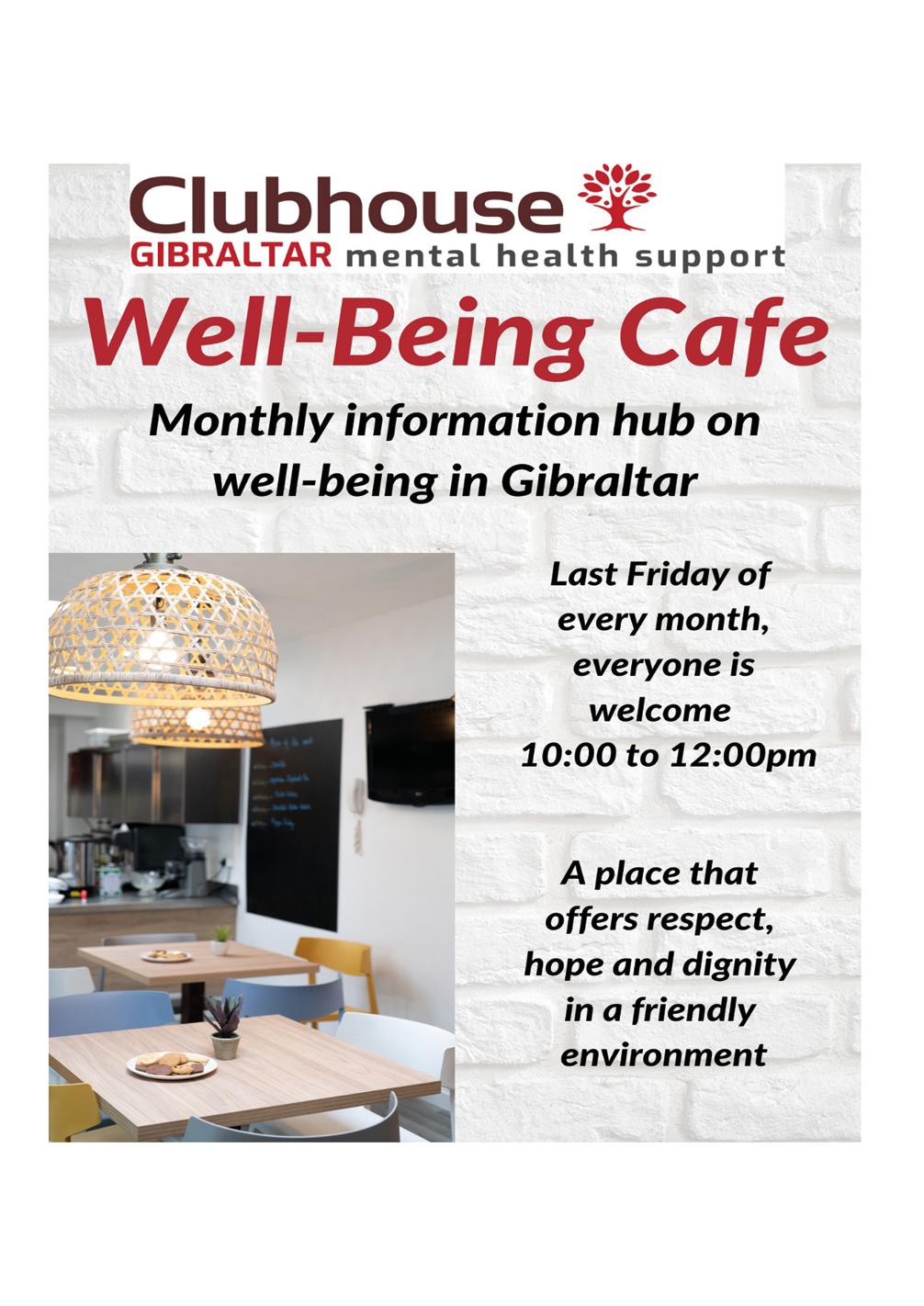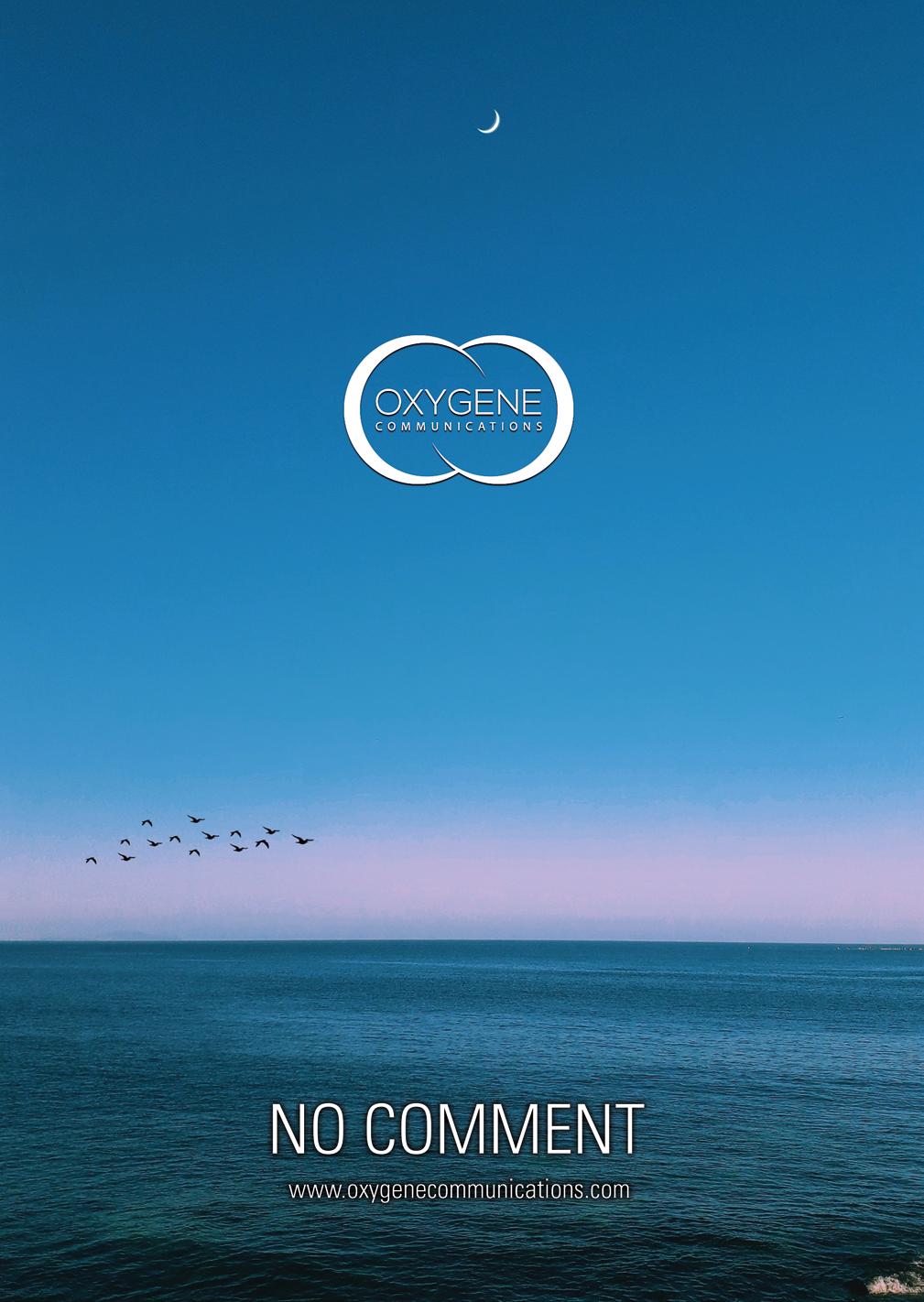
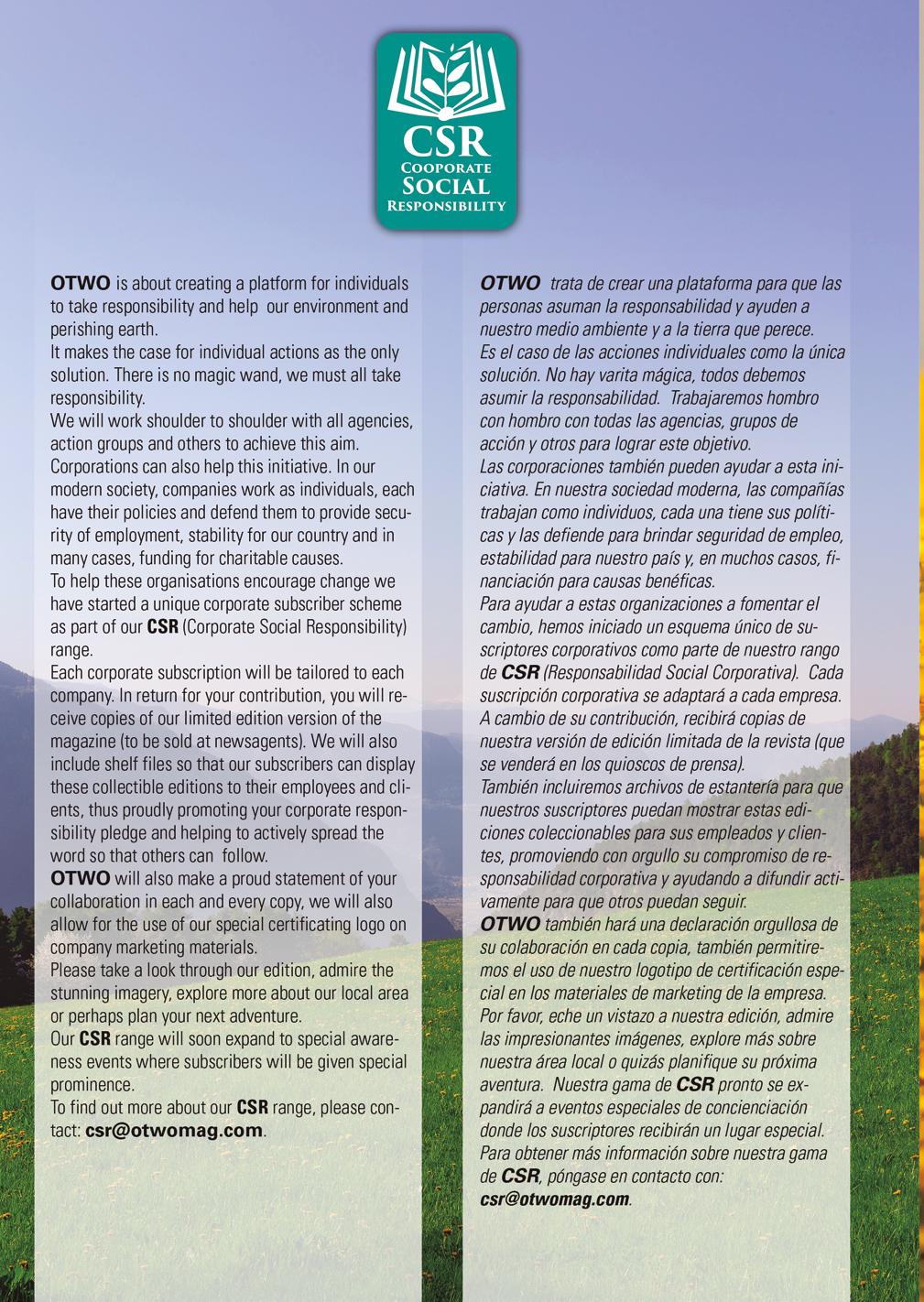

CARPENTRY • MASONRY • GENERAL DECORATION • PLUMBING • ELECTRIC • KITCHENS • BATHROOMS • BEDROOMS
PROFESSIONAL STANDARDS AND BEST PRICES GUARANTEED. REGISTER NOW FOR A NO OBLIGATION ESTIMATE AND RECEIVE A £50 DISCOUNT ON WORKS. WE WILL CALL YOU WHEN LOCK DOWN IS LIFTED : BE THE FIRST AND AVOID THE RUSH!
Admin offices: Suite D 122 Irish Town Call 54083022 or email minorworks@evgib.com

“If you serve nature, she will serve you”. (Confucius).
“Si sirves a la naturaleza, ella te servirá a ti”. (Confucio).
PHOTOGRAPHY: PEXELS.COM
“You can’t be unhappy when you have the smell of the sea,the sand beneath your fingers,the air, the wind...”.
(Irene Nemirovsky).
“No se puede ser infeliz cuando se tiene esto: el olor del mar, la arena bajo los dedos, el aire, el viento”.
(Irène Némirovsky).

PHOTOGRAPHY: PEXELS.COM

“There is no better proof of the progress of civilization than the development of the power of cooperation”.
(John Stuart Mill).
“No hay mejor prueba del progreso de la civilización que el desarrollo del poder de cooperación“.
(John Stuart Mill).
PHOTOGRAPHY: PEXELS.COM
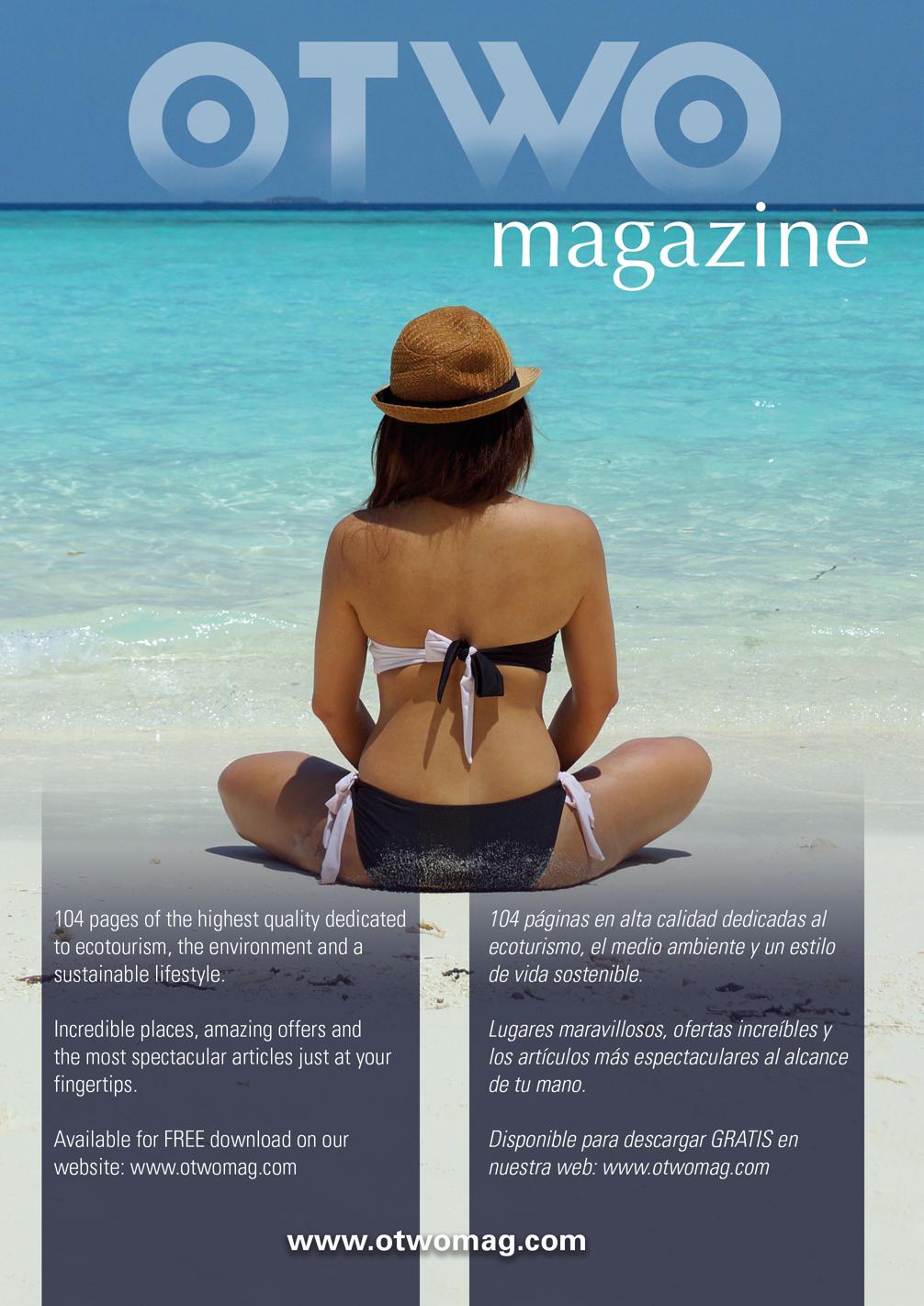
This volume was published in July 2020 by Oxygene Ltd. OTWO Issue 12
Oxygene Ltd.Business Centre.
19 George´s Lane.
GX11 1AA, Gibraltar Tel. +00350 54080331
www.oxygenecommunications.com
© Publishing: Oxygene Ltd.
Vanessa Byrne
Managing & Commercial Director Juanjo Trujillo

Creative Director & Chief Designer
Sarah Birch
Columnist & Translation
Ana Villalta
Columnist & Translation
Jenny Brown
Design & Social Media
Photographer: Keith Bensusan, Alicia Angulo Ortega, Esperanza Pozo, Juan Luis González, Pexels, Juan Martín Bermúdez, Hotel Boutique
Los Lobos, OTWO, Ramboll.
Cover photo: Pok Rie.
Back Cover photo: Samir.
Translation: Sarah Birch, Ana Villata and Merlin Gutherless.
Printing:
Santa Teresa Industrias Graficas SA
Collection “The flower of the month”. Colección “La flor del mes”.
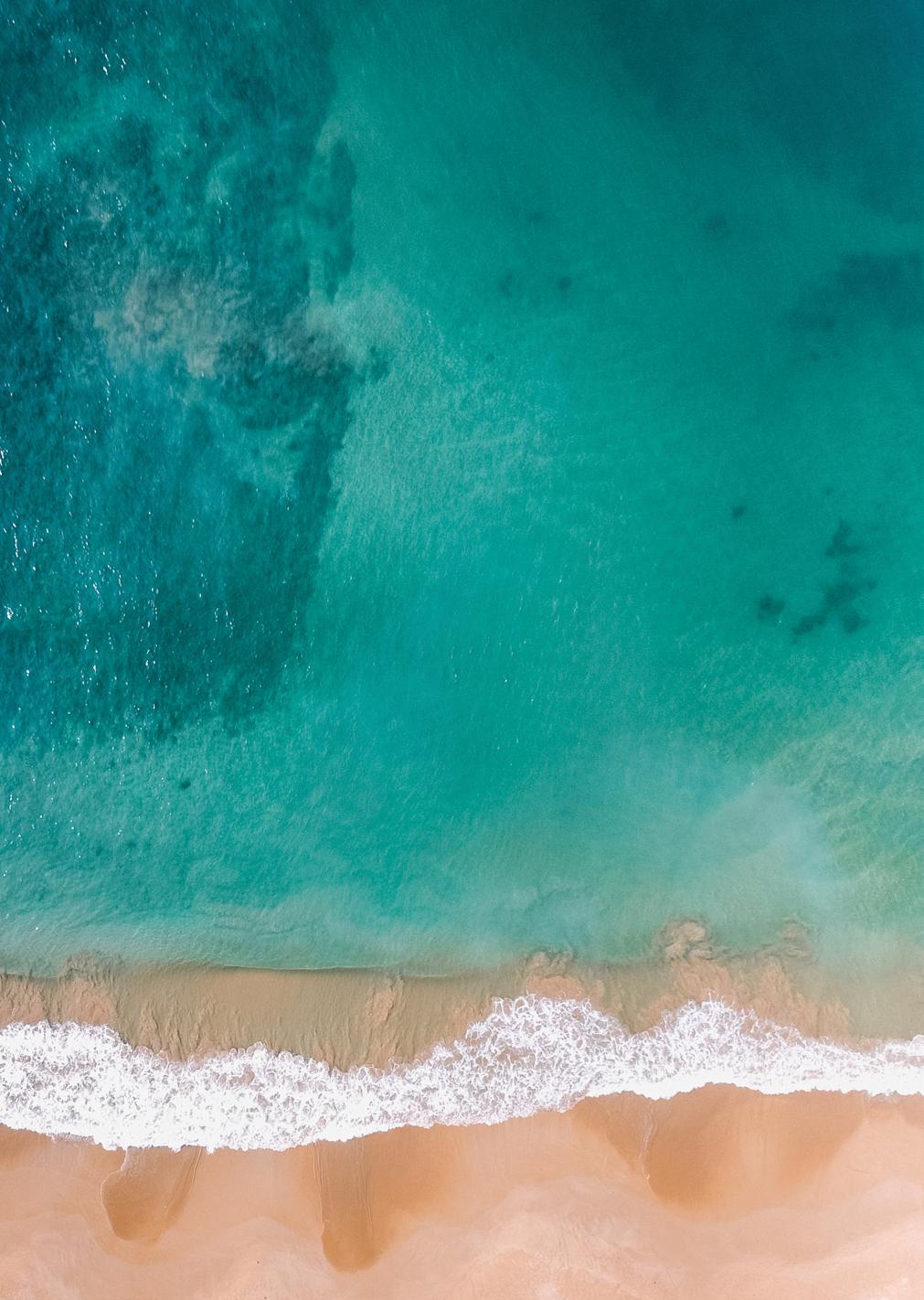
The Natural Swap /El Cambio Natural.
Eco Passion.
Protect yourself, your business and the environment.
Proteja su negocio, el medio ambiente y a protéjase a sí mismo.
Snorkelling in Gibraltar with The Nautilus Project. Buceo en Gibraltar con The Nautilus Project.
Transforming Gibraltar. One building at a time.

All rights reserved. No part of this publication may be reproduced, stored in a retrieval system or transmitted in any form or by any means, electronic, mechanical, photocopying, recording or otherwise, without the prior permission in writing from the publishers.
All rights reserved.



Cross borders issues. Cuestiones fronterizas.
Pura Vida.
Hon Vijay Daryanani, Minister for Business, Tourism and Transport.
Interview /Entrevista.
Narrowing the Strait Estrechando el Estrecho
GWG: An Introduction to Permaculture’ a talk by Jenny Brown.
GWG: Introducción a la permacultura, una conferencia de Jenny Brown.
GWG: Ramboll.
Quick Guide: Seeing the world from your sofa. Part III. Guía Rápida: Ver el mundo desde el sofá. Parte III.


OTWO 12
Editorial
Experience Catalog
Cortos. 2020 001 68 46 34 28 26 82 86 90 93
ILLUSTRATION: JUANJO TRUJILLO

A note from the editor
Vanessa Byrne / Managing Director
Summer,summer,summer time!
Hey guys, is it me or is it getting warm outside. Seems like we have Covid a bloody nose at the perfect time to enjoy our warmest months with our loved ones. We must remember to keep vigilant but it’s lovely to see you all out and about again.
It’s our 12th Edition! Wow it’s gone fast, as they say... time flies when you’re having fun! And this is lots of fun to create. Learning, adapting, investigating, it’s all in good fun.
In this month’s edition we share our exclusive
¡Verano, verano, hora de verano!
Hola chicos, soy yo o hace calorsita afuera! Parece que tenemos a Covid con una nariz ensangrentada en el momento perfecto para disfrutar de nuestros meses más cálidos con nuestros seres queridos. Debemos recordar estar atentos, pero es encantador verlos a todos de nuevo.
¡Es nuestra 12a edición! Wow se ha ido rápido, como dicen... el tiempo vuela cuando te estás divirtiendo! Y esto es muy divertido de crear. Aprender, adaptarse, investigar, todo es muy divertido.
interview with Minister Daryanani. He’s been very much in the lime light recently with road closures and we were given a great opportunity to sit down with him and chat a bit about what their future plans are. I must add it’s great to see the local Government giving priority to environmental issues.
Another highlight in this edition is our second Welcome to the Future article with a special focus on Ocean Heights. Love how the guys at Planning Vision have revamped this old building and made it a much more efficient area, and might I add GORGEOUS! Micro gardens, chill out zones and much greenness, so pretty.
You will find our Green Week Gibraltar event is growing with collaborators with the lovely Jenny Brown and amazing engineers at Ramboll featured this month. It’s a pleasure to have you both join us in this amazing environmentally focused week. By next month (if Covid stays put) we can update on the week we will be aiming for and start unraveling more and more information. Fun Fun!!
Our Experiences are back, YES! We are Free… ish!! As we can’t travel too far we have highlighted gorgeous areas around us where we can aim to get away for a weekend or two. A place we can visit to unwind and reflect with our loved ones, after all, isn’t it what we have been dreaming for these past couple of months. Pop us a message if interested and we will be happy to set you up. Always a pleasure to share and if interested in adding to what you see or have any ideas that you would like us to publish pop us a quick message on our social media pages or email info@otwomag.com.
Thank you all as always x you all keep safe and well.
Peace & Love
En la edición de este mes compartimos nuestra entrevista exclusiva con el Ministro Daryanani. Ha estado muy en el oído publico recientemente con cierres de carreteras y nos dio una gran oportunidad de sentarnos con él y charlar un poco sobre sus planes futuros. Debo añadir que es genial ver al gobierno local dando prioridad a las cuestiones ambientales.
Otro punto culminante de esta edición es nuestro segundo artículo Bienvenido al futuro con un enfoque especial en Ocean Heights. Me encanta cómo los chicos de Planning Vision han renovado este antiguo edificio y lo han convertido en un área mucho más eficiente, y HERMOSO además! Micro jardines, zonas chill out y mucha verdosidad, tan bonita.
Encontrarás que nuestro evento de la Semana Verde de Gibraltar está creciendo con colaboradores con la encantadora Jenny Brown y sorprendentes ingenieros en Ramboll presentados este mes. Es un placer que ambos se unan a nosotros en esta increíble semana centrada en el medio ambiente. Para el próximo mes (si Covid se queda quitecito) podemos actualizar en la semana que estaremos apuntando y empezar a desentrañar más y más información. Diversión divertida!!
Nuestras experiencias han vuelto, ¡SI! Somos gratis... ¡¡casi!! Como no podemos viajar demasiado lejos hemos resaltado hermosas áreas a nuestro alrededor donde podemos aspirar a escaparnos por un fin de semana o dos. Un lugar que podemos visitar para relajarse y reflexionar con nuestros seres queridos, después de todo, ¿no es lo que hemos estado soñando durante estos últimos dos meses. Envíenos un mensaje si estáis interesado y estaremos encantados de configurarlo.
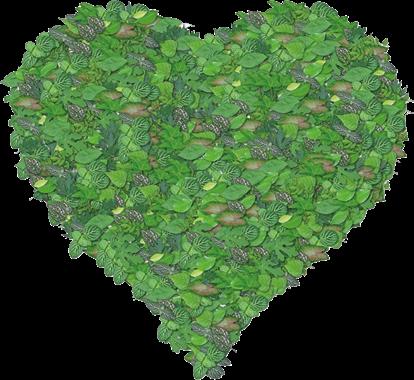
Siempre es un placer compartir y si está interesado en añadir a lo que ves o tienes alguna idea que te gustaría publicar nos envía un mensaje rápido en nuestras páginas de redes sociales o info@ otwomag.com de correo electrónico.
Gracias a todos como siempre, mantenerse a salvo y bien.
Paz & Amor
10 11 OTWO 12 / JULY 2020 OTWO 12
Erythrina crista-galli
Photography: Keith Bensusan
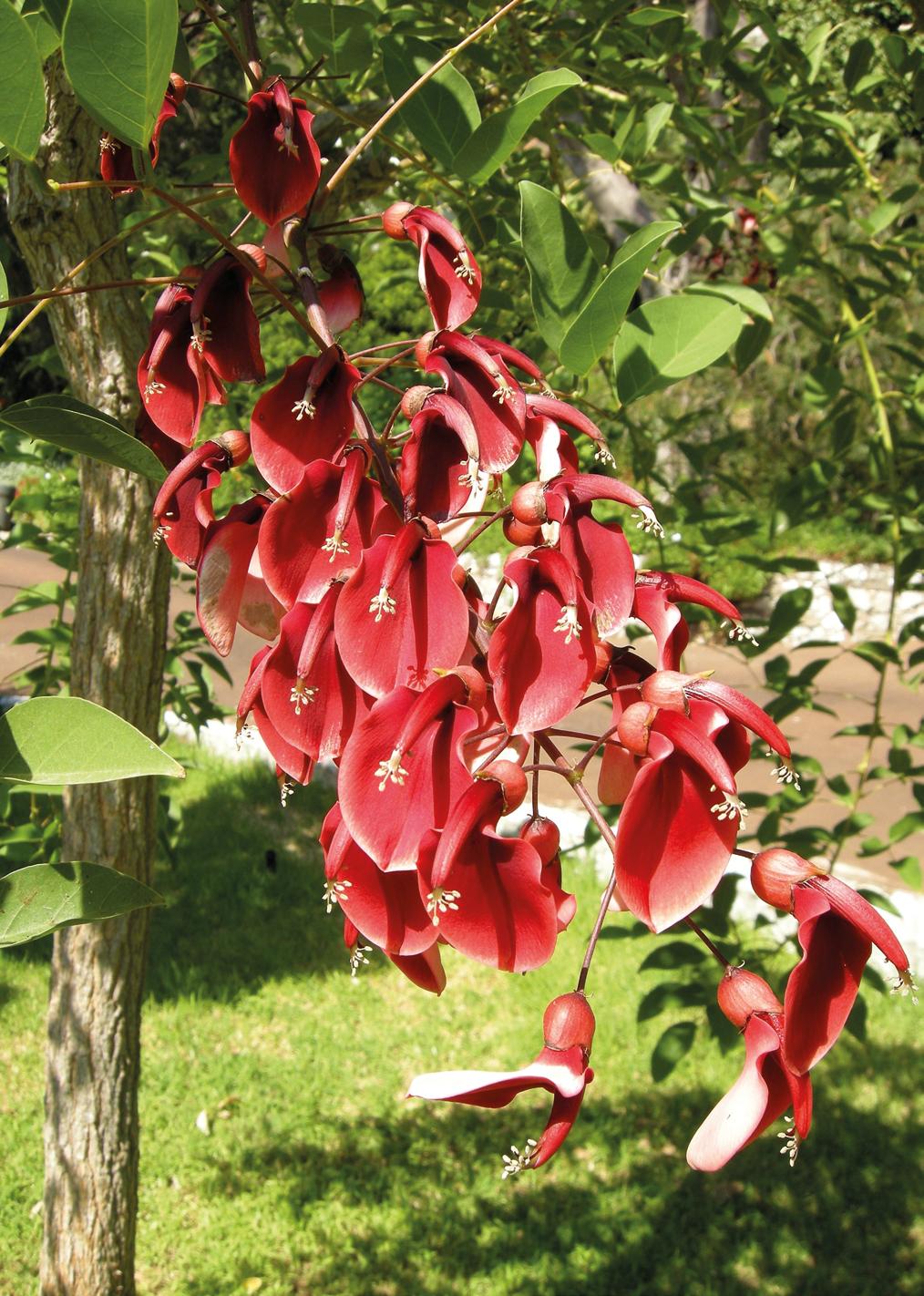

JULY / Julio
Collection “The flower of the month”
The Cockspur Coral Tree
Árbol del Coral o Pico de Gallo
Dr Keith Bensusan Director
Gibraltar Botanic Gardens, The Alameda.
The Cockspur Coral Tree Erythrina crista-galli is a flowering tree that belongs in the Pea Family (Fabaceae). The tree is usually small to medium-sized, but some specimens grow quite large with age. The Cockspur Coral Tree is native to South America and its range spans from southern Brazil to Argentina, including Uruguay and Paraguay. Indeed, it is the national tree of Argentina. However, it is commonly grown in other areas where the climate is suitable for the species, such as California or countries around the Mediterranean. The flowers of this species are bright red, very unsual and exceptionally attractive, which makes the species an extremely attractive addition to a Mediterranean Garden. The trunk too can be very attractive, because as the tree ages, it develops a corky texture. Indeed, the Cockspur Coral Tree is among the most attractive of ornamental trees for our climate in Gibraltar. As a member of the Pea Family, its seeds are large and contained within pods. Unlike peas however, these seeds are toxic, as are all parts of this plant.
El Cockspur Coral Tree Erythrina crista-galli (árbol del coral o pico de gallo), es un árbol en flor que pertenece a la familia Pea (Fabaceae). Generalmente es un árbol de tamaño pequeño a mediano, pero algunos especímenes con el tiempo, crecen más de lo habitual. El cockspur Coral Tree, es oriundo de América del Sur y su área de expansión recorre desde el sur de Brasil hasta Argentina, incluyendo Uruguay y Paraguay. De hecho, es el árbol nacional de Argentina. Sin embargo, es bastant común su cultivo en otras áreas donde el clima es adecuado para la especie, como California o los países del Mediterráneo. Las flores de esta especie son de color rojo brillante, muy poco convencionales y excepcionalmente atractivas, lo que hace que la especie sea una adición extremadamente atractiva en un Jardín Mediterráneo. No solo su flor, también el tronco puede ser muy atractivo, porque a medida que envejece, desarrolla una textura corchosa. De hecho, el cockspur Coral Tree, es uno de los árboles ornamentales más atractivos en Gibraltar, debido al clima existente. Como miembro de la familia Pea, sus semillas son grandes y se encuentran encerradas en vainas. Pero, a diferencia de los guisantes, estas son tóxicas, como el resto de las partes de este arbusto.
12 13
OTWO 12 / JULY 2020 OTWO 12 / JULY 2020

A ‘POP-UP’ TRANSPORT SOLUTION
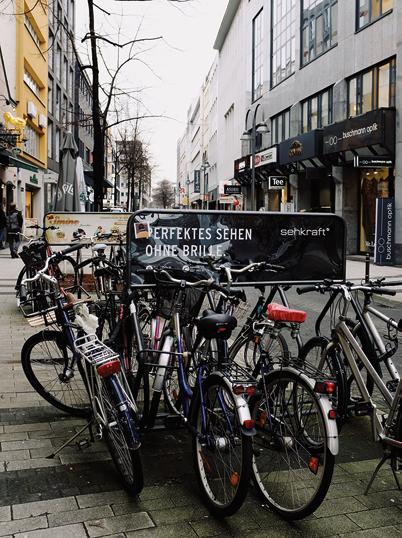
Over the past couple of months, urban areas have enjoyed cleaner air and less congested roads. But as lockdown restrictions are relaxed around the globe, many fear that commuters will avoid public transport and rely on cars, leading to an upsurge in air pollution.
In cities that have little to no cycling infrastructure, local authorities are turning to ‘pop up bicycle lanes’ to encourage people to get cycling instead of getting back into their cars.
These temporary lanes can be assembled with relative ease and are an inexpensive way to introduce cycling infrastructure in and around cities. They also allow city planners to conduct live consultations of where permanent infrastructure could potentially be placed.
Prompted by public transport closures due to the coronavirus crisis, Berlin has introduced 22km of pop up lanes to help citizens get around. These temporary lanes were introduced in a matter of days, whereas permanent cycling infrastructure can take up to a decade to plan and build.
Rome has also approved 150km of temporary and permanent cycling lanes to not only help locals to
socially distance in the short term but to also kick start urban sustainability plans.
In Milan, authorities have announced that over the coming months 35km of road will be reallocated to cyclists and pedestrians to help maintain improved air quality.
Paris, Barcelona, Sydney, and Athens have all also put plans in motion to create more space for pedestrians and fast track cycling infrastructure that would usually take years to implement.
The hope is that these temporary mobility measures lead to a permanent change in our urban landscapes, returning our streets to people and transforming our cities into cleaner and healthier places to live.
Una solución emergente para el transporte
Durante el último par de meses, las zonas urbanas han disfrutado de unas condiciones atmosféricas más limpias así como de carreteras menos congestionadas. Pero a medida que se relajan las condiciones de confinamiento por todo el mundo, muchas personas temen que quienes viajan por motivos de trabajo evitarán el transporte público y optarán por los coches, algo que conllevaría un incremento de la contaminación del aire.
En ciudades donde la infraestructura para el uso de la bici es mínima o inexistente, las autoridades locales están promoviendo la creación de carriles-bici emergentes para animar a los residentes a que usen la bicicleta en lugar de volver al coche.
Estos carriles temporales se disponen con relativa facilidad y constituyen una alternativa económica para introducir la infraestructura de tráfico para bicicletas tanto dentro como alrededor de las ciudades.
También permite a los responsables de urbanismo llevar a cabo consultas en tiempo real en cuanto a los lugares potencialmente susceptibles de incorporar infraestructura permanente.
Urgidos por las restricciones al transporte público motivadas por la crisis del coronavirus, en Berlín se han incorporado 22 kilómetros de carriles emergentes para ayudar a los ciudadanos a desplazarse. Estos carriles temporales fueron instalados en cuestión de días en tanto que las infraestructuras permanentes de carril bici pueden acarrear años de planificación y materialización.
En Roma también se ha aprobado la instalación de
150 kilómetros de carriles bici temporales y permanentes para, por un lado, facilitar a los ciudadanos el desplazamiento a corto plazo y, por otro, impulsar planes de sostenibilidad urbana.
En Milán, las autoridades han anunciado que durante los próximos meses se habilitarán 35 kilómetros de red viaria para el uso de ciclistas y peatones de cara a mantener la calidad del aire que ha mejorado en los últimos meses.
París, Barcelona, Sídney y Atenas también cuentan con nuevos planes para la creación de más espacio peatonal e infraestructura ciclista que en condiciones normales requerirían de años de ejecución.
El objetivo es que estas medidas de movilidad de corte temporal propicien un cambio permanente en nuestros paisajes urbanos, devolviendo nuestras calles a la gente y transformando nuestras ciudades en lugares más limpios, saludables y habitables.

AUSTRALIAN SCIENTISTS DEVELOP HEAT-RESISTANT CORAL
Scientists in Australia reveal that they have developed a lab-grown strain of microalgae which can help coral survive the devastating effects of rising sea temperatures.
As global temperatures continue to rise, coral bleaching events are growing in frequency, decimating vital ocean habitats.
Although often thought of as a sea plant, coral is in fact an animal and closely related to organisms like jelly fish. Reefs are vital to our oceans and are home to 25% of the world’s marine species. They also control coastal erosion, provide food for millions of people and organisms found in reefs are used in multiple medicines.
Coral survives largely thanks to tiny plant algae called zooxanthellae, which lives in coral tissue. These algae produce about 90% of its food. Bleaching occurs when sea temperatures are not as they should be causing the algae to expel itself from the coral which then turns white, leaving it more susceptible to disease and a higher rate of mortality.
But after several years of work a team of researchers from various Australian scientific institutions have cultivated a strain of microalgae which is resistant to warmer temperatures.
The lab cultured algae were exposed to increasing temperatures over a period of four years, causing it to slowly adapt. Once reintroduced into coral larvae it was able to survive warmer conditions.
The next stage is to test the microalgae across various types of coral, but the team believes their findings may help to restore coral reefs that have suffered mass bleaching events.
Earlier this year the Great Barrier Reef was hit by its third large-scale bleaching event in just five years, leaving two thirds of the world’s largest reef system extremely vulnerable, with many areas unlikely to recover.
Científicos australianos desarrollan un coral resistente al calor
Científicos australianos han revelado el desarrollo en laboratorio de una cepa de micro alga que puede contribuir a la supervivencia del coral ante los devastadores efectos del aumento de las temperaturas marítimas.
La decoloración de coral viene siendo más frecuente a medida que sigue aumentando la temperatura del planeta, afectando así a los hábitats oceánicos.
Considerada habitualmente como una planta marina, el coral es en realidad un animal que tiene parentesco cercano a organismos como las medusas. Los arrecifes son fundamentales para nuestros océanos y alojan al 25% de las especies marinas existentes. También previenen la erosión costera y
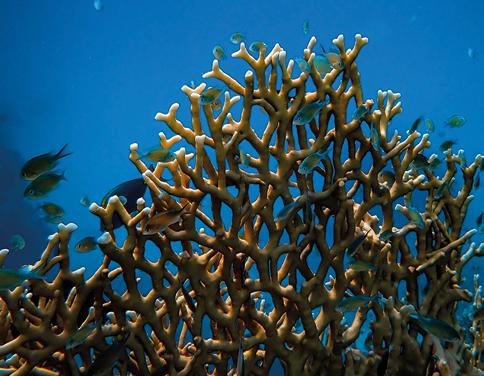
15 14
OTWO 12 / JULY 2020 OTWO 12 / JULY 2020
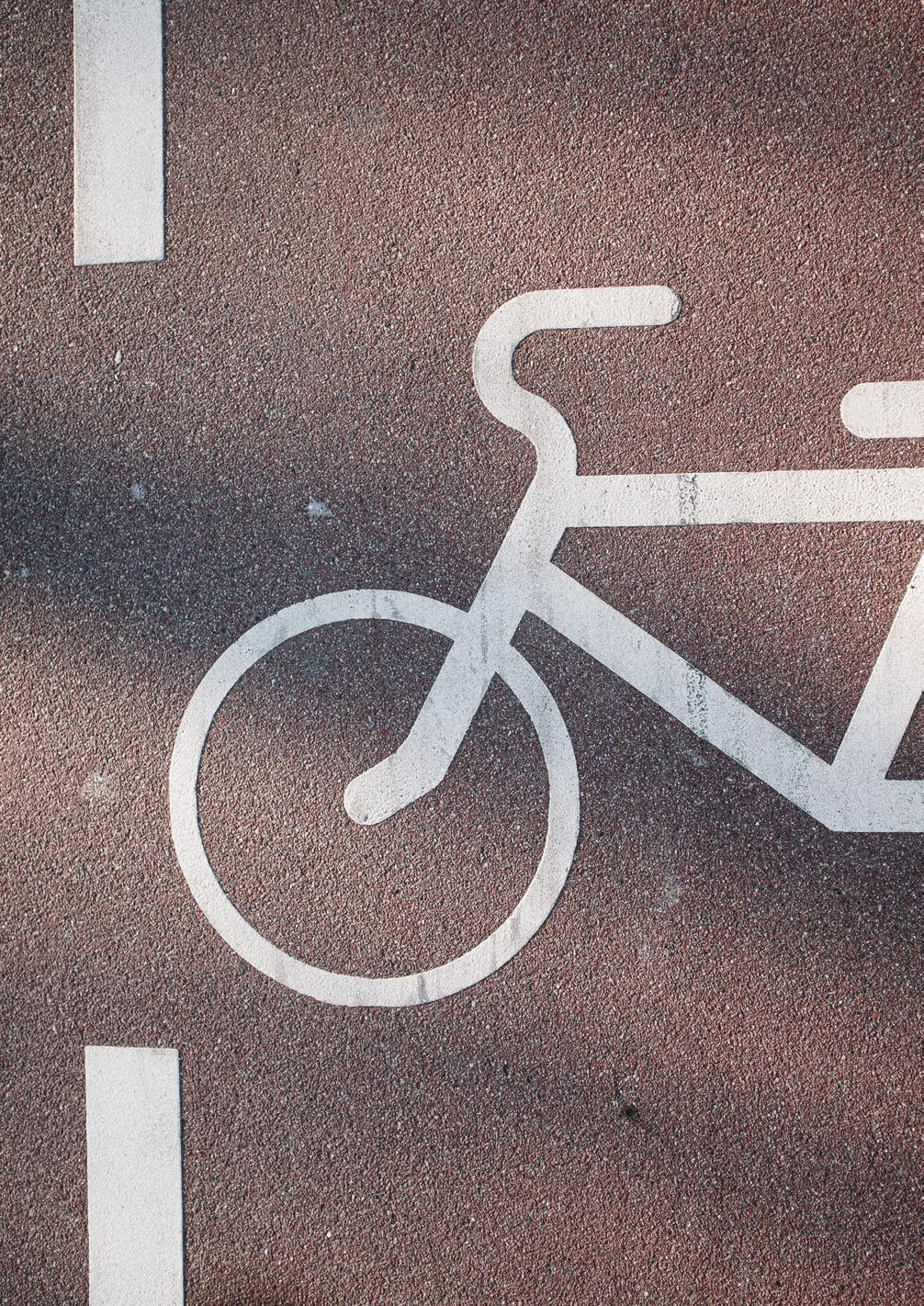
proporcionan alimento a millones de personas. Además, los organismos que se hallan en los arrecifes se usan en multitud de medicinas.
El coral sobrevive fundamentalmente gracias a un alga llamada zooxantela que habita tejidos coriláceos. La decoloración se produce cuando las temperaturas marinas exceden los índices normales y ello causa que las algas se expulsen del coral, haciendo que éste se blanquee, haciéndolo más vulnerable a sufrir enfermedades y exponiéndolo a una mayor tasa de mortalidad.
Pero tras varios años de trabajo, un equipo de investigadores de varias instituciones científicas australianas ha cultivado una cepa de micro alga resistente a temperaturas marinas más cálidas.
Estas algas de laboratorio fueron expuestas a temperaturas crecientes durante un periodo de cuatro años, adaptándose a las mismas de forma gradual. Una vez reintroducidas en larvas de coral, fueron capaces de sobrevivir en condiciones más cálidas.
El próximo paso consistirá en probar la micro alga en varios tipos de coral, y el equipo considera que su hallazgo puede contribuir a renovar los arrecifes de coral más perjudicados por el fenómeno del blanqueamiento.
Este mismo año, el Gran Arrecife de Coral sufrió su tercera decoloración a gran escala en un periodo de apenas cinco años, algo que ha dejado dos tercios del mayor sistema de arrecifes del mundo en una situación de vulnerabilidad extrema y con la posibilidad de que muchas zonas no puedan recuperarse.

EXPANSION OF THE BICYCLE NETWORK IN LA LÍNEA DE LA CONCEPCIÓN
On the 3rd June and in conjunction with World Bicycle Day, the municipal delegations of Urban Mobility and Sports of the City of La Línea de la Concepción announced that the cycling network will be expanded by up to 8.5 kilometres to bring the Poniente and Levante areas closer together. This will connect the southern and northern areas of the city along the coastline, allowing users to travel from the border with Gibraltar to the urbanisations of Santa Margarita and Venta Melchor.
This expansion of the route will be made possible thanks to the elimination of one of the traffic lanes currently used by motor vehicles.
And to improve the safety of cyclists there will be signs indicating the start and end of the route. The city council is eager to promote a more sustainable city, with a reduction in levels of environmental and noise pollution.
Ampliación de la red bici en La Línea de la Concepción
El pasado 3 de junio y con motivo de la celebración del Día Internacional de la Bicicleta, las delegaciones municipales de Movilidad Urbana y Deportes del Ayuntamiento de La Línea de la Concepción, informaron de la ampliación de hasta 8,5 kilómetros de la red bici para aproximar aún más las zonas de Poniente y de Levante. De esta manera quedará comunicada a través del litoral las áreas sur y norte de la ciudad, pudiéndose llegar desde la frontera con Gibraltar hasta las urbanizaciones de Santa Margarita y Venta Melchor.
Este aumento del trazado se podrá realizar gracias a la eliminación de uno de los carriles de circulación para los vehículos a motor.
Y para mejorar el nivel de seguridad de los ciclistas se dispondrán de señales indicativas de inicio y fin del recorrido. Es deseo del ayuntamiento promover una ciudad más sostenible, con una reducción de los niveles en contaminación ambiental y acústica.
THE NAUTILUS PROJECT HOSTS WORLD OCEAN DAY AWARDS
The Nautilus Project held its 4th Annual World Ocean Day School Competition with the award ceremony taking place on the evening of the 8th June.
Lower Primary, Upper Primary and Secondary school students across Gibraltar were once again all invited to take part with over 200 entries submitted this year. 40 people including Minister for the Environment, Dr John Cortes, attended the event at Alameda Gardens with social distancing measures in place.
The competition asked Upper Primary and Secondary students to write a detailed account of how the had reduced their plastic waste and their carbon footprint over the last year, with a limit of 250 words

16 17
OTWO 12 / JULY 2020 OTWO 12 / JULY 2020

for Upper Primary students and 500 words for Secondary school pupils.
A creative category also invited students from Lower Primary up to Secondary to submit a poster or a piece of artwork promoting marine awareness.
A total of 17 awards were presented over the course of the evening, with the judges praising the high standard of all the entries and Dr Cortes giving thanks to all who had attended and to all of the students who had participated in the competition.
Prizes were donated by several businesses around Gibraltar, including In2Adventures, Marble Arc, Eroski and Ecovibe, plus many more.
Next month, the Nautilus Project will hold their annual Sustainable Business Awards for organisations with the greatest number of green initiatives implemented over the past year.
OTWO would like to congratulate all the winners of the World Ocean Day competition and to wish the businesses that entered the Sustainable Business Awards good luck!
The Nautilus Project entrega los premios del Día Mundial de los Océanos
The Nautilus Project celebró la cuarta edición de su competición escolar del Día Mundial de los Océanos con la entrega de premios en la tarde noche del 8 de junio.
Alumnos del primer y segundo ciclo de primaria y de educación secundaria de todo el Peñón fueron invitados de nuevo a participar, habiéndose recibido más de 200 trabajos este año.
Al evento, en el que se cumplieron las normas de distanciamiento, acudieron más de cuarenta personas, incluyendo al ministro de Medioambiente, Dr John Cortes.
El concurso requería que los alumnos de primaria redactaran la manera en la que han reducido la producción de residuos plásticos así como su huella de carbono durante el último año, con una extensión máxima de 250 palabras para los del primer ciclo y de 500 para los del segundo.
La categoría de la creatividad también invitaba a los alumnos de primaria a enviar un cartel o un trabajo de naturaleza artística que promoviera la concienciación con la protección del mar.
Durante la velada se entregaron un total de diecisiete premios, elogiando el jurado la alta calidad de todos los trabajos y agradeciendo Cortes la asistencia del acto así como el esfuerzo de todos los estudiantes que participaron en el concurso.
La donación de los premios corrió a cargo de varias empresas de Gibraltar, entre las que se incluyen In2Adventures, Marble Arc, Eroski y Ecovibe además de muchas otras.
The Nautilus Project celebrará la entrega de premios a las empresas sostenibles el mes que viene, una iniciativa que evalúa la cantidad de iniciativas ecológicas llevadas a cabo dentro del sector empresarial a lo largo del último año.
OTWO quiere felicitar a todos los ganadores del concurso del Día Mundial de los Océanos y desea toda la suerte a las empresas que se han apuntado a los Premios de la Empresa Sostenible.
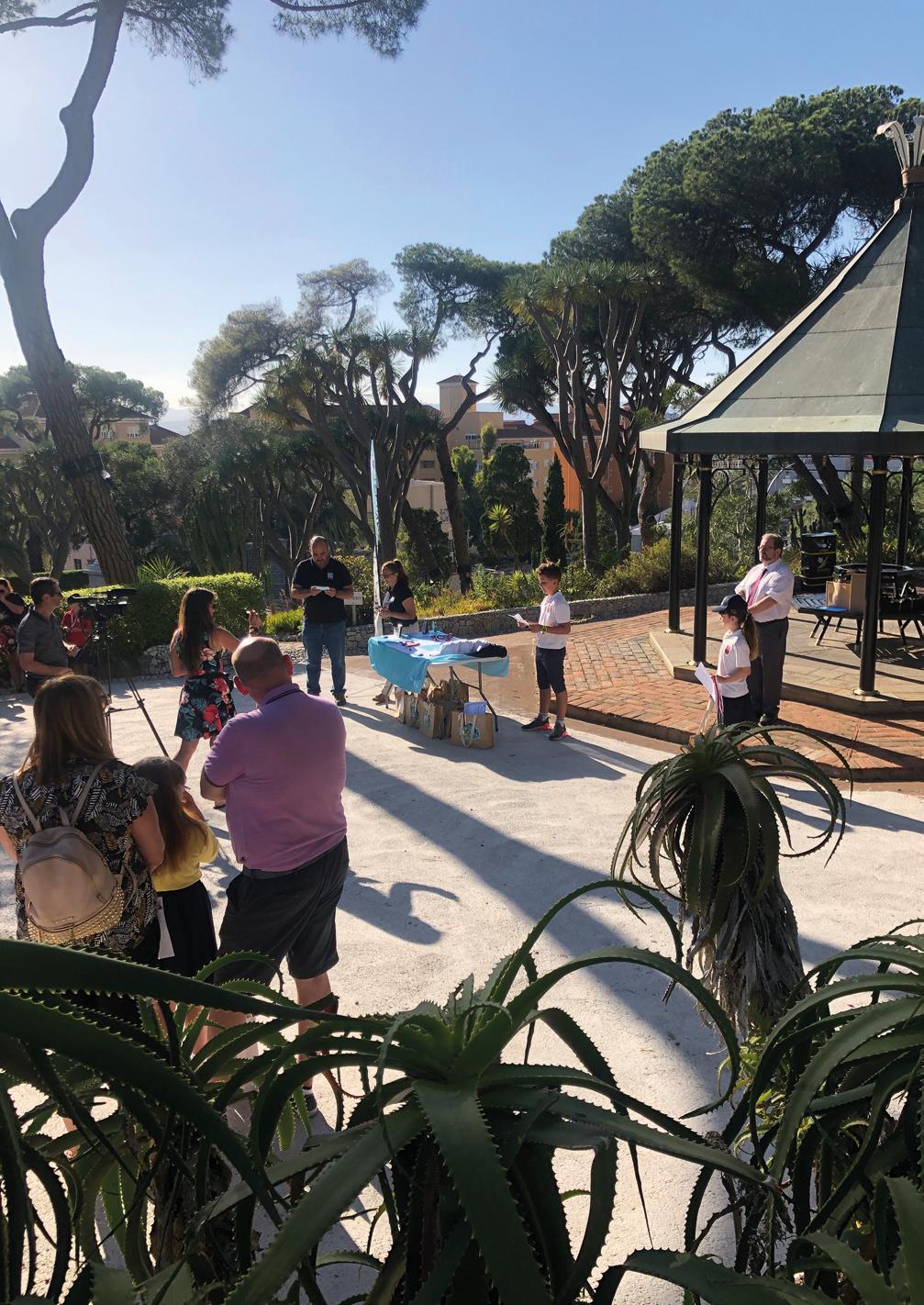
18 19
OTWO 12 / JULY 2020 OTWO 12 / JULY 2020
The Natural Summer Swap
El Cambio Natural del Verano
Suncream
Recyclable? Plastic containers can be recycled. How long does it take to decompose:
1000 years.
Fun Fact :
A 2016 study showed that the common chemical found in many lotions and cosmetics is highly toxic to juvenile corals and other marine life.
Alternatives:
Natural Sun Cream. Protect yourself with clothing. Red Raspberry seed oil. Astaxanthin - Antioxidant.
Straws
Recyclable? Some can be, but most recycling facilities do not accept plastic straws.
How long does it take to decompose:
Approx 200 years.
Alternatives:
Bamboo, Paper. Stainless Steel. Glass
Water Bottle
Recyclable? Some are yes. How long does it take to decompose?
450 years.
Alternatives:
Hydro Flask. Glass Bottle. Insulated Water Bottle.
Plastic Sunglasses
Recyclable?: No as they are usually made from different components.
How long does it take to decompose:
Approx 1000 years.
Alternatives:
Bamboo. Wood. Cork. Recycled plastic.

Crema Solar

¿Reciclable? Los envases de plástico pueden ser reciclados.
¿Cuánto tiempo tardan en descomponerse?
1000 años.
Dato curioso: un estudio de 2016 mostró que el químico común que se encuentra en muchas lociones y cosméticos es altamente tóxico para los corales juveniles y otras especies marinas.
Alternativas:
Crema solar natural. Protejete con ropa.
Aceite de semilla de frambuesa roja. Astaxantina - Antioxidante.
Pajitas
¿Reciclable? Algunas pueden serlo, pero la mayoría de las instalaciones de reciclaje no aceptan pajitas de plástico.
¿Cuánto tiempo tardan en descomponerse?
Aproximadamente 200 años.
Alternativas:
Bambú. Papel. Acero inoxidable. Cristal.
Botellas de Agua
¿Reciclable? Algunas si lo son.
¿Cuánto tiempo tardan en descomponerse?
450 años.
Alternativas:
Frasco Hidro. Botella de vidrio.
Botella de agua aislada.
Gafas de sol
¿Reciclable? No porque generalmente están hechos de diferentes componentes.
¿Cuánto tiempo tardan en descomponerse?
Aproximadamente 1000 años.
Alternativas:
Bambú. Madera. Corcho. Plástico reciclado.

20
21 OTWO 12 / JULY 2020 OTWO 12 / JULY 2020


Natural deodorant
Desodorante natural
This plastic-free, natural deodorant balm comes in a cardboard tube for easy application. The tube can be recycled at the end of its life. Our natural deodorant is vegan, animal cruelty free, paraben free, gluten free, aluminium free, plastic free, 100% natural and handmade in Germany. Each sale also supports environmental organisation One Earth-One Ocean.
You can apply the deodorant by pushing the base of the tube up with your thumb and then rubbing a small amount onto your armpit.
In cooler climates, holding the tube against your armpit for a few seconds allows the warmth from your armpit to soften the deodorant for easier application. In very hot climates you can store the deodorant in the fridge, and generally it’s best kept in a cool, dark place.
Made from shea butter and other natural butters and oils, bicarbonate of soda and essential oils. the antibacterial properties of the bicarbonate of soda will fight odor while allowing your skin to breathe naturally. It never feels greasy or sticky and the fragrances are divine. These natural deodorants make the perfect addition to your plastic-free bathroom. We offer three fragrances: Persian Lime, Pink Grapefruit and Nordic Timber.
For more details visit us on: www.ecopassion.es.

Este bálsamo desodorante natural, libre de plástico, se presenta en un tubo de cartón que facilita su aplicación. Nuestro desodorante natural es de carácter vegano, no ha causado daño animal y no contiene parabeno, gluten, aluminio o plástico. Se produce en Alemania artesanalmente y es 100% natural. Cada venta resulta en una contribución a la organización ecologista One Earth-One Ocean.
El desodorante se aplica deslizando la base del tubo hacia arriba con el pulgar y frotando un cantidad pequeña en la axila.
En climas más frescos, sostener el tubo contra la axila durante unos cuantos segundos permite que nuestro calor humano ablande el desodorante, lo cual facilita su aplicación. En climas muy calurosos puede guardarse en la nevera. De forma general, su almacenamiento ideal es en lugares frescos y oscuros.
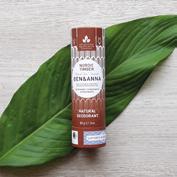

Se fabrica a partir de manteca de karité y otros aceites y mantecas naturales, bicarbonato de sodio y aceites esenciales. Las propiedades antibacterianas del bicarbonato de sodio combaten el olor y permiten a la piel respirar de forma natural. La sensación nunca es grasienta o pegajosa y las fragancias son maravillosas. Estos desodorantes naturales constituyen el añadido perfecto a su cuarto de baño libre de plásticos.
Tenemos tres fragancias: lima persa, pomelo rosa y madera nórdica.
Para más información, visítenos en: www.ecopassion.es.
23
22 OTWO 12 / JULY 2020
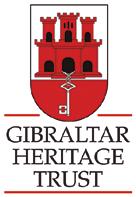
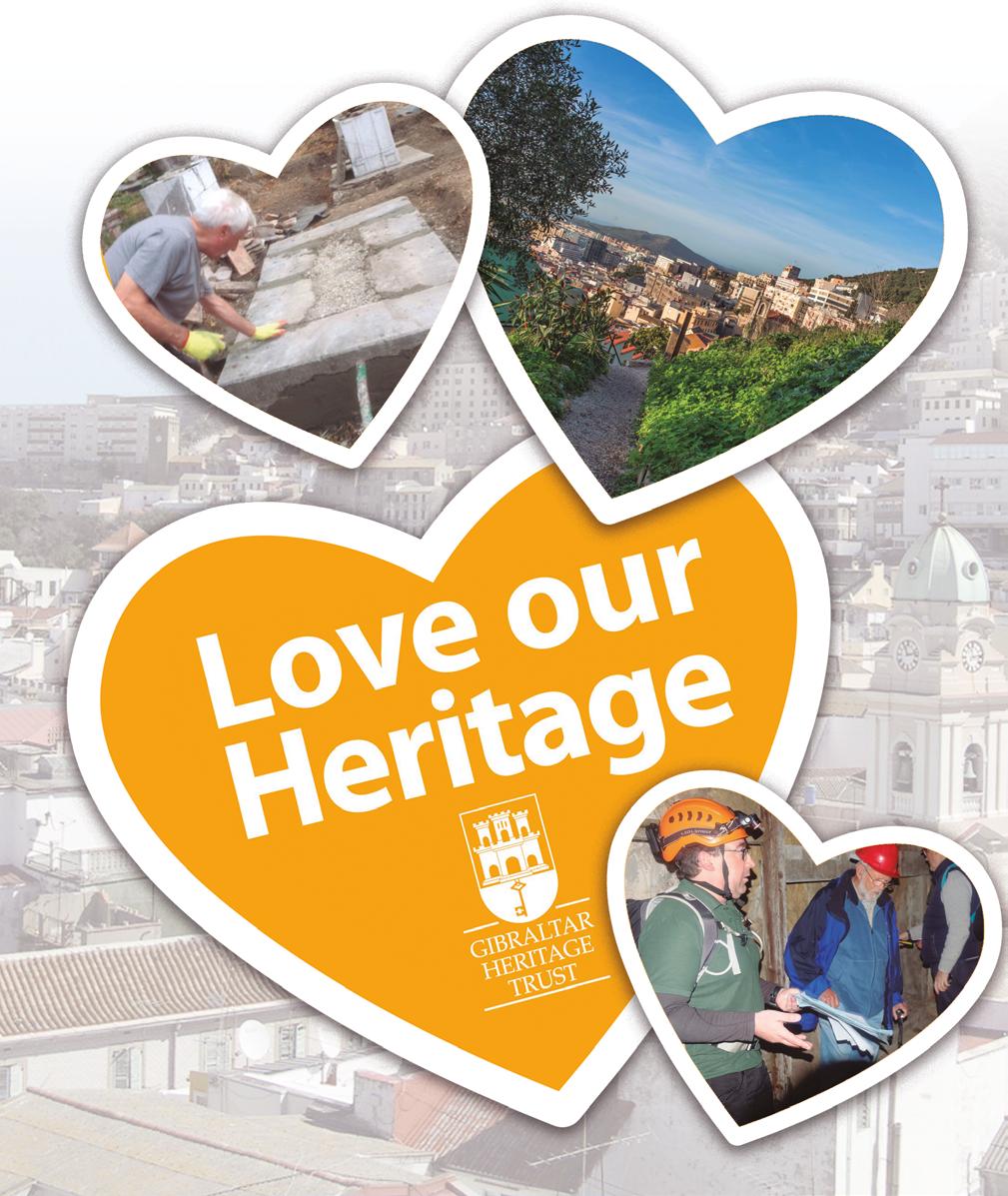
By investing in the Trust you are Investing in Gibraltar’s past, its present and its future
When you take out an annual membership, you support Gibraltar and the work that the Trust does to protect and enhance it however, your membership also entitles you to:
• Access to the Trust’s monthly programme of events, including trips and organized excursions.
• Access, by appointment, to the Trust’s reference library of books related to Gibraltar and its past (The Trust is accepting donations of books on Gibraltar to add to this resource).
• Free entry to the Gibraltar Museum.
• Free entry to the Upper Rock Nature Reserve, St Michael’s Cave, Great Siege Tunnels, Military Heritage Centre, Tower of Homage, Ape’s Den, Windsor Suspension Bridge and WWII Tunnels.
HAZTE MIEMBRO HOY
Si colabora por el Patrimonio, usted está invirtiendo en el pasado de Gibraltar, su presente y su futuro.
Siendo miembro durante un año, apoya a Gibraltar y el trabajo que Patrimonio hace para protegerlo y mejorarlo. Además, también le da derecho a:
• Acceso al programa mensual de eventos, incluidos viajes y excursiones organizadas.
• Acceder, con cita previa, a la biblioteca para consultar los libros relacionados con Gibraltar y su pasado (nuestro fondo bibliográfico crece día a día gracias a las donaciones que recibimos).
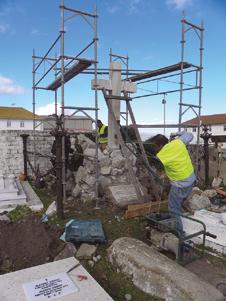
• Annual Report, our regular e-newsletter direct to your inbox, updates and information on what’s happening on the Gibraltar heritage scene.
• Free Cable Car Travel from 1st September 2019 to 31st March, 2020 (not to be used before 4pm until 1st November 2019).
• Discounts at the Gibraltar Heritage Trust Shop on our own publications.
• 10% Discount when purchasing 500g of coffee beans from Sacarello’s Coffee Shop
Visit our Website www.gibraltarheritagetrust. org.gi and click on the JOIN US button.
• Entrada gratuita al Museo de Gibraltar.
• Entrada gratuita a la Reserva Natural de Upper Rock, a la Cueva de San Miguel, a los túneles del Gran Asedio, al Centro del Patrimonio Militar, a la Torre del Homenaje, a la Guarida de los Monos, al Puente Colgante de Windsor y a los Túneles de la Segunda Guerra Mundial.
• También recibirá el Informe Anual y nuestro boletín electrónico enviado regularmente por correo electrónico, actualizaciones e información sobre lo que está sucediendo en la escena del patrimonio de Gibraltar.
• Viaje gratuito en el teleférico desde el 1 de septiembre de 2019 hasta el 31 de marzo de 2020 (no se utilizará antes de las 4 de la tarde hasta el 1 de noviembre de 2019).
• Descuentos de nuestras publicaciones en la tienda Gibraltar Heritage.
• 10% de descuento en la compra de 500 g de granos de café en la cafetería de Sacarello´s Coffee Shop.
Visite nuestro sitio web: www.gibraltarheritagetrust.org.gi y haga clic en el botón JOIN US.
OTWO 12 / JULY 2020 25
Protect yourself, your business and the environment
Proteja su negocio, el medio ambiente y a protéjase a sí mismo.
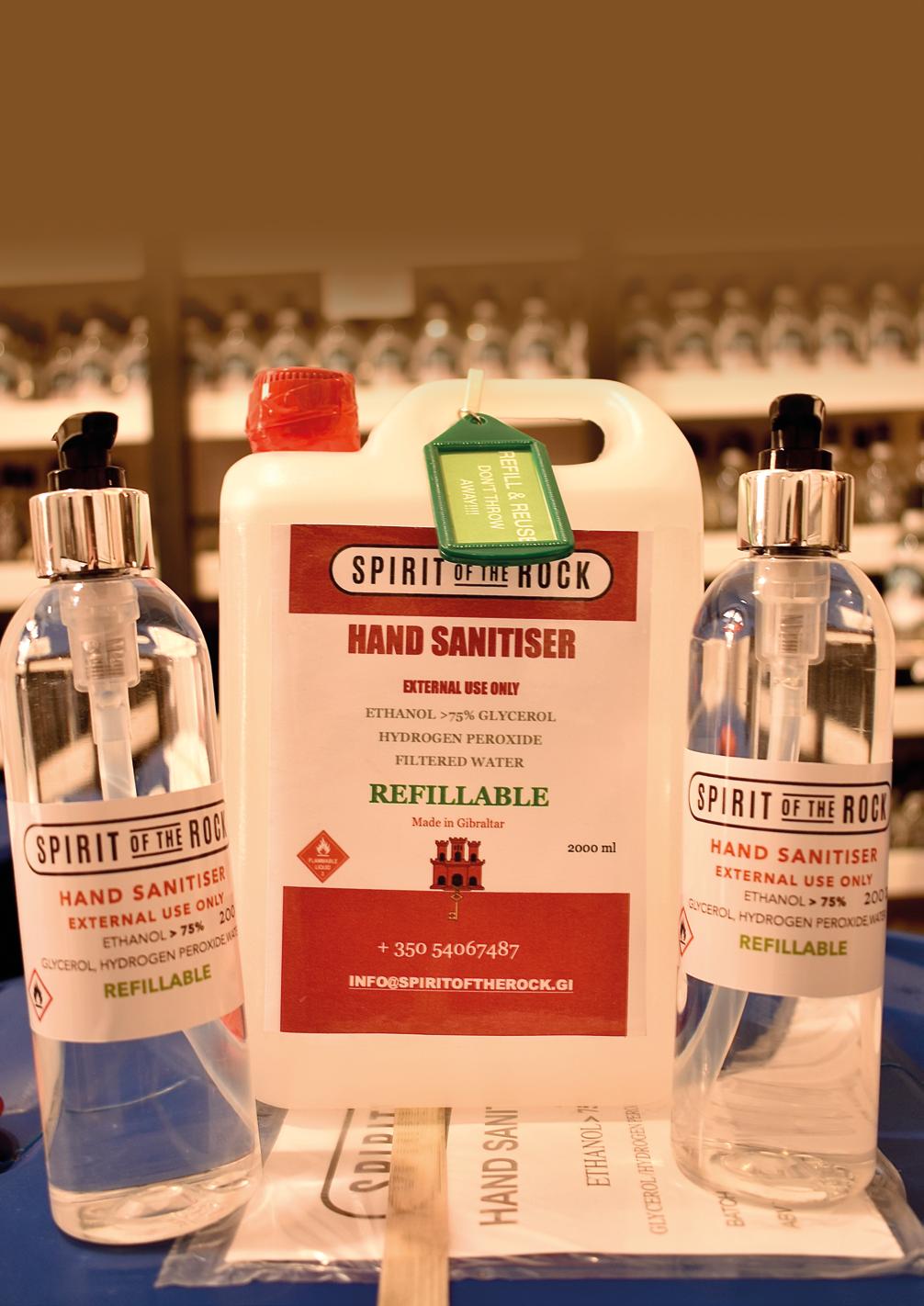
Spirit of the Rock has just celebrated its first anniversary making the gold award winning, locally distilled Campion Gin.
The arrival of the Coronavirus pandemic should have been the death knell for a business mostly reliant on bars, restaurants and tourists. The temptation to reduce the price of our gin and do an advertising campaign to encourage people to drink at home seemed completely immoral. Turning to alcohol during these stressful times is not something we wanted to encourage.

What we did do is to use our stocks of alcohol to produce a high-quality medical grade hand sanitiser. We supplied the GHA with a large quantity for its sole use and at cost price. We felt it was our civic duty to provide an essential commodity that was in short supply globally and remaining stocks were selling at extortionate prices.
Reuse, Recycle, Return, Reduce and Respect are the fundamental principles of ‘Spirit of the Rock’. How do you marry a product that is packaged in plastic with the green ethics of our business?
We have sourced recyclable plastic containers which will be distributed to local businesses on a deposit paid basis. We offer a refill service so all you have to do is call and supplies will be delivered to your business by bicycle or on foot.
Competitively priced and great for businesses that have walk in customers as it kills viruses and bacteria quickly, with no residue left on the hands to mark clothing or other products.
It is odourless and the high alcohol content means it evaporates completely so will not damage expensive electrical items.
By signing up you will be supporting a local business, respecting the environment by avoiding single use plastics and taking the hassle out of sourcing stock.
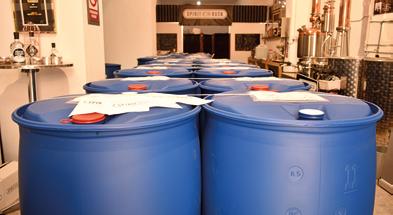
Spirit of the Rock acaba de celebrar su primer aniversario, con su Campio Gin, de destilación local y galardonado con un premio de oro.
La llegada de la pandemia de Coronavirus debería haber sido la muerte de un negocio que dependía principalmente de bares, restaurantes y turistas. La tentación de reducir el precio de nuestra ginebra y hacer una campaña publicitaria para animar a la gente a beber en casa parecía completamente inmoral. Volver al alcohol durante estos momentos estresantes no es algo que queríamos alentar.
Lo que hicimos es usar nuestras existencias de alcohol para producir un desinfectante de manos de grado médico de alta calidad. Suministramos al GHA una gran cantidad para su uso exclusivo y a precio de costo. Sentimos que era nuestro deber cívico proporcionar un producto esencial que escaseaba mundialmente y que las existencias restantes se vendieran a precios extorso.
Reutilizar, reciclar, devolución, reducir y respetar, son los principios fundamentales de “Spirit of the Rock”.
¿Cómo conjuga un producto envasado en plástico con el etiquetado ecológico de nuestro negocio?
La empresa ha adquirido unos contenedores de plástico reciclado que – bajo depósito- se distribuirán a las empresas locales. “Spirit of the Rock” ofrece el servicio de reposición y recarga, así que con tan solo una llamada, los suministros se entregarán en su negocio, de forma peatonal o en biciclea.
Con un precio competitivo y excelente para las empresas y sus clientes, ya que el cuidado y tratamiento efectuado, acaba con virus y bacterias rápidamente, sin dejar ningún tipo de residuo en las manos, la ropa ni ningún otro tipo de material.
Es inodoro y el alto contenido de alcohol significa que se evapora por completo, por lo que no dañará los costosos artículos eléctricos.
Al registrarse, estará apoyando un negocio local, respetando el medio ambiente evitando los plásticos de un solo uso y evitando el molesto abastecimiento de existencias.
OTWO 12 / JULY 2020 27 26 OTWO 12 / JULY 2020
Snorkelling in Gibraltar with The Nautilus Project

Summer’s finally here, and after months of keeping kids entertained at home, many will wonder what on earth else to do to keep their young ones engaged, learning and entertained until September comes around, especially if you are in two minds as to whether to join the crowds heading to the beach.
With that in mind, local marine conservation NGO - The Nautilus Project (TNP), have come up with a Virtual Marine Summer Camp due to take place in July. The week of online activities will teach kids more about our diverse marine life and conservation.
All being well, TNP is also looking to launch a week-long Summer Camp in August, which will combine learning activities with snorkelling trips to the best spots around Gibraltar.
So, in early June, OTWO were invited to join Nautilus on one of their snorkelling trips to Rosia Bay, to show us why Gib offers some of the best snorkelling around.
Goggles, snorkels and flippers on, we tentatively ‘goose-stepped’ our way into the water, knowing full well that the crystal-clear conditions on this bright, westerly morning were going to be a touch on the cold side…. and we weren’t wrong! After several minutes of flailing waste deep in the water and pointlessly exclaiming how cold we were, our bodies acclimatised and for the next hour, we didn’t think about the temperature once.
As we swam about, Lewis from TNP told us a bit more about the species living in Rosia, many of which can be found just a few metres from the shore, some of which are harder to spot. Some of the most surprising marine animals found in Rosia are the endangered short-snouted and long-snouted sea horse, which sadly we weren’t lucky enough to see. They dwell in the centre of the bay, where the typical
calm conditions make it the perfect feeding ground for these beautiful creatures.
After about 10 minutes, Lewis spotted a Cotton Spinner Sea Cucumber, which he gently brought up for us to hold. Not long after, we found several large Spiny Sea Stars lying on the sea bed, which we also held, learning that the purple dots on the end of each of its five arms are their eyes.
We quickly realised how little we appreciated the diverse marine life we have right here along our coastline. In just a couple of hours, the species spotted at Rosia included brittle sea stars, snakelocks and beadlet anemones, sea urchins, triton shell, nudibranchs, cuttlefish, mauve stinger jellyfish, salps, common octopus and the endangered orange star coral.
The best part of snorkelling with TNP is having a swimming marine encyclopaedia alongside you the whole time, affording us a better understanding of the species in Rosia and the dangers these marine animals face every day.
If you fancy having a go and would like help identifying the species in our waters, TNP offers guided small-group snorkelling trips for people of all ages.
The Virtual Summer camp is available to kids aged 7-11 years and will run from 13th – 17th July. Throughout the week, children will learn about our marine diversity with a focus on conservation through a series of online activities covering topics such as sharks and dolphins, plastic pollution in our oceans, turtles and jellyfish and the protected species of Rosia Bay.
Limited spaces are available. To reserve email: info@thenautilusproject.co.
Watch this space for an announcement about the possible Summer Camp in August!
OTWO 12 / JULY 2020 29 28 OTWO 12 / JULY 2020
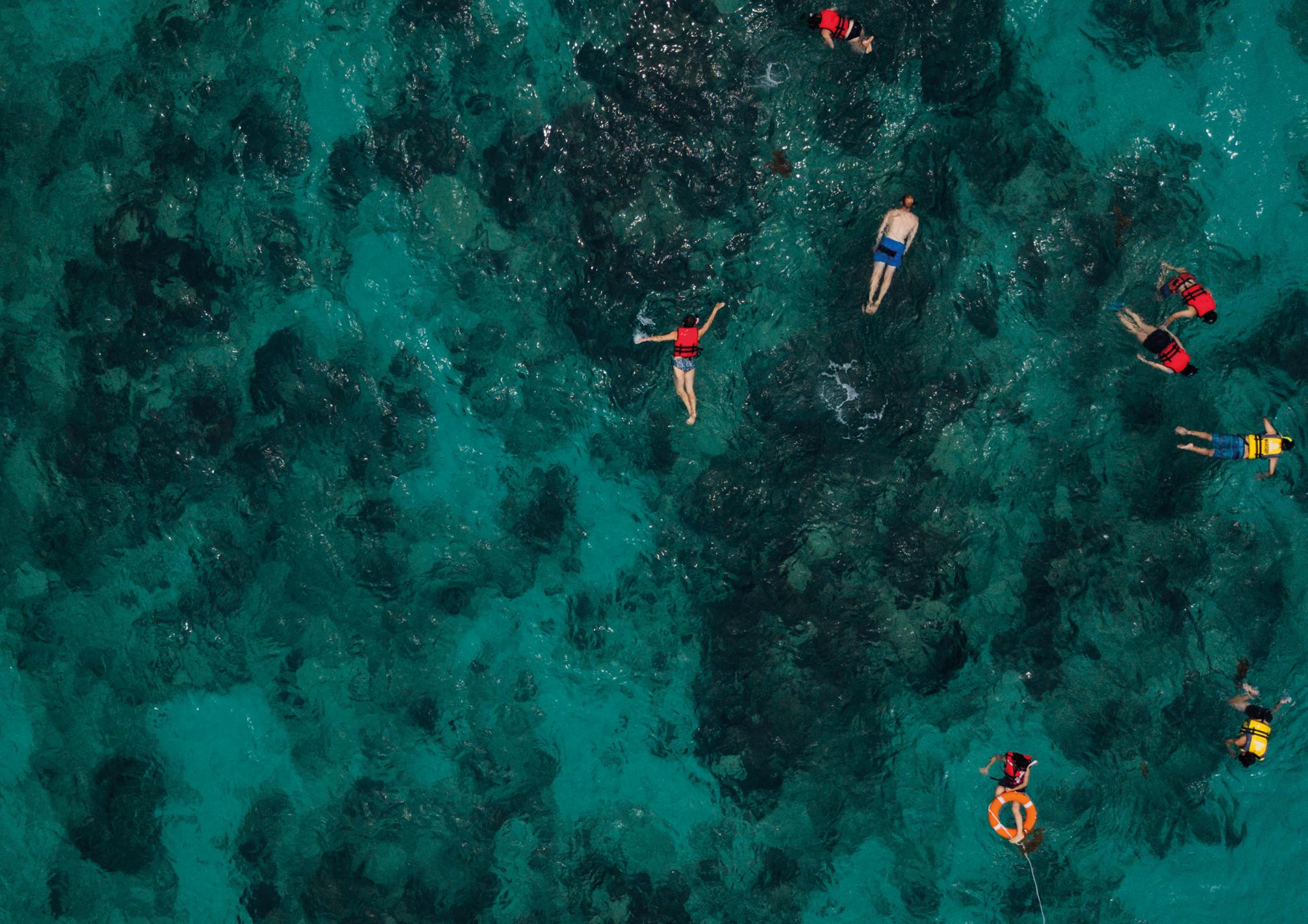
Buceo en Gibraltar con The Nautilus Project
Ha llegado finalmente el verano y tras meses de haber entretenido a los hijos en el hogar, muchos padres se preguntan qué hacer para que los niños se distraigan y aprendan durante el tiempo que queda hasta septiembre, especialmente en el caso de quienes dudan sobre la conveniencia de unirse a las multitudes que van a la playa.
Con esa consideración en mente, la ONG local dedicada a la conservación marina, The Nautilus Project (TNP), ha organizado un campamento marino-virtual de verano que se desarrollará en julio. Durante una semana de actividades online, los niños aprenderán sobre la diversidad y conservación de nuestro fondo marino.
De prosperar la iniciativa, TNP contempla también el lanzamiento de un campamento de verano en agosto, de una semana de duración, en el que se combinarán actividades de aprendizaje con excursiones de snorkel a los mejores rincones de buceo de Gibraltar.
De modo que a principios de junio, OTWO fue invitada a unirse a Nautilus en una de sus expediciones de snorkel a Rosia Bay para enseñarnos por qué Gibraltar ofrece algunas de las mejores experiencias de buceo de la zona. Equipados con gafas, tubos y aletas, nos adentramos en el agua a paso de oca sabiendo a ciencia cierta que las aguas cristalinas en esta despejada mañana de poniente significaban que el mar estaría realmente frío. No nos equivocábamos. Tras varios minutos de agitarnos, sumergidos hasta la cintura, quejándonos en vano del frío que estábamos pasando, nuestros cuerpos se aclimataron y durante la hora siguiente no volvimos a acordarnos de la temperatura.
Durante el recorrido a nado, Lewis, de TNP, nos enseñó un poco más sobre las especies que habitan en Rosia, muchas de las cuales pueden observarse a apenas unos metros de la orilla en tanto que otras son más difíciles de localizar. Entre las especies marinas más sorprendentes que viven en esta zona se encuentran los caballitos de mar de nariz larga y nariz corta, ambas en peligro de extinción y que, lamentablemente, no conseguimos ver. Viven en el
centro de la bahía, donde las condiciones de mar calmado proporcionan a estas bellas criaturas un perfecto hábitat alimenticio.
Tras unos diez minutos, Lewis localizó un pepino de mar negro que nos acercó con delicadeza para que lo sostuviéramos. No mucho después encontramos varias estrellas de mar espinosas tumbadas sobre el lecho marino. También las pusimos sobre nuestras manos y supimos que los puntos morados que tienen en el extremo de cada una de sus cinco brazos son sus ojos.
Comprendimos casi de inmediato lo poco que atendemos a la rica vida marina que existe en nuestra costa. En apenas un par de horas, las especies que vimos en Rosia se acumularon: frágiles estrellas de mar; anémonas sulcatas y actinias equinas; erizos de mar; caracolas de tritón; nudibranquios; calamares; medusas luminiscentes; salpas; pulpos comunes y el amenazado coral estrellado.
Lo mejor de practicar snorkel con TNP es contar con una enciclopedia del nado marino a tu lado, durante toda la experiencia, algo que nos proporcionó un mejor entendimiento de las especies de Rosia así como de los peligros que les acechan cada día.
Si le apetece intentarlo y quiere ayuda en la identificación de las especies de nuestras aguas, TNP ofrece excursiones de snorkel para grupos reducidos y todas las edades.
El campamento virtual de verano está abierto a niños de edades comprendidas entre los 7 y los 11 años y se desarrollará entre el 13 y el 17 de julio. A lo largo de una semana, los niños aprenderán sobre nuestra diversidad marina con especial atención a la conservación a través de una serie de actividades online que se ocuparán de temas como los tiburones y delfines, la contaminación producida por los plásticos, las tortugas, las medusas y las especies protegidas de Rosia Bay.
La disponibilidad de plazas es limitada. Para reservar, escriban a info@thenautilusproject.co
Permanezcan atentos a este espacio para un próximo anuncio relativo al campamento de verano en agosto.
OTWO 12 / JULY 2020 31 30 OTWO 12 / JULY 2020
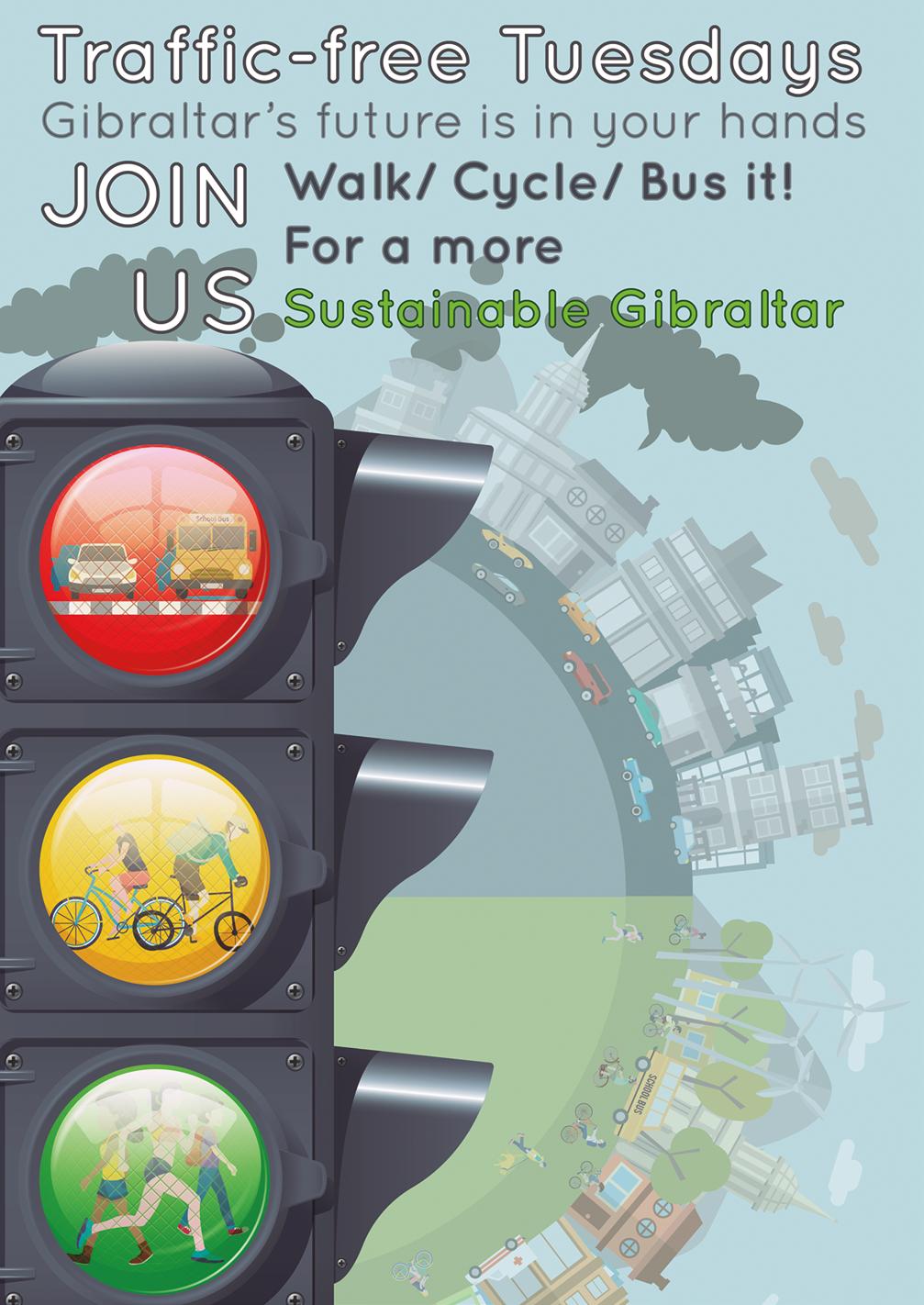

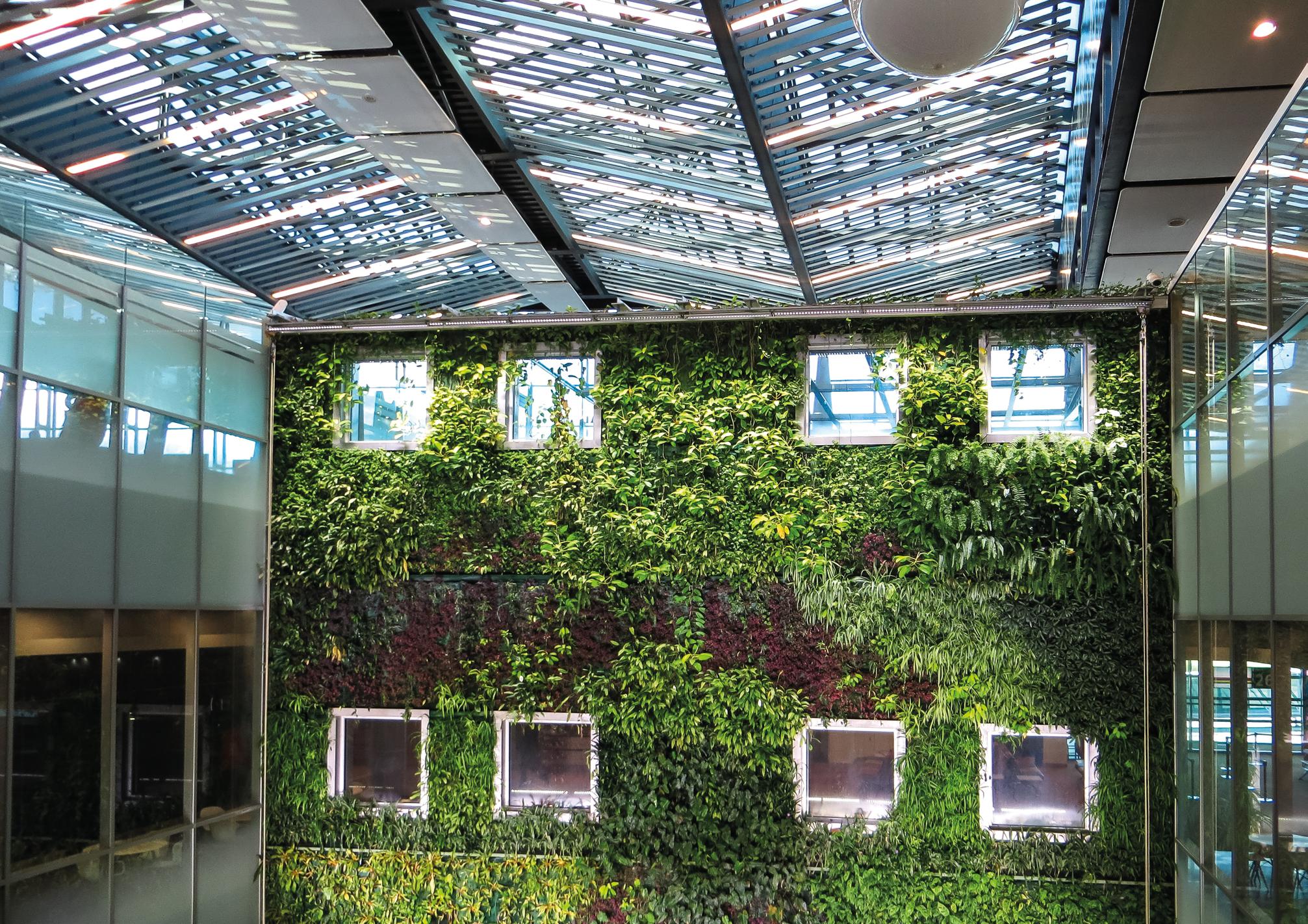
35 Welcome to the Future Vision towards a Better Gibraltar TRANSFORMING GIBRALTAR ONE BUILDING
AT A TIME
OTWO 12 / JULY 2020 34 OTWO 12 / JULY 2020
Joanna Jadczak BA (Hons), MA Planning and Sustainability (Planning Vision)
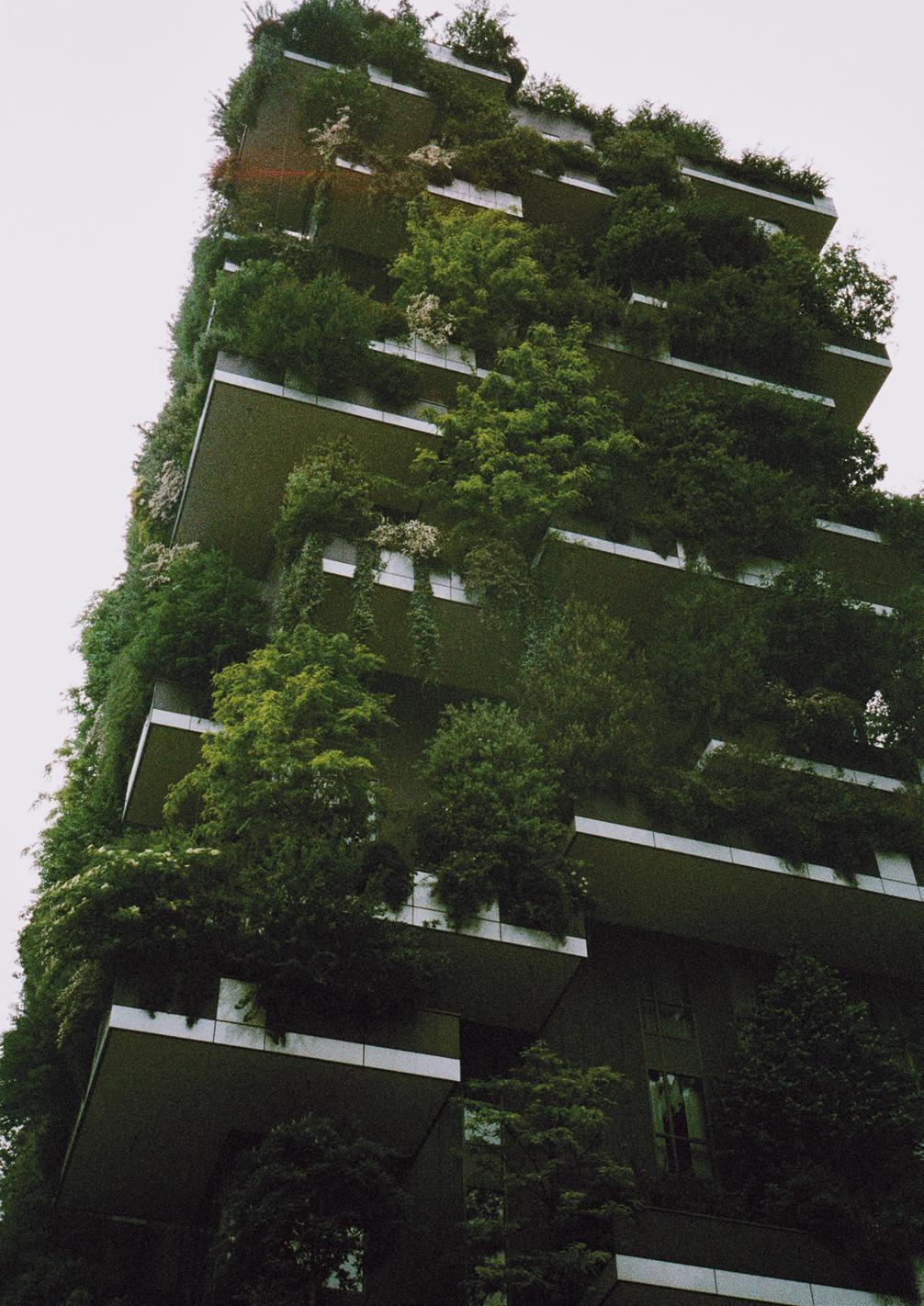
Following from the introductory article published in the previous edition of the magazine, we are excited to demonstrate how existing buildings can be transformed by applying a range of globally agreed collective goals, known as the Sustainable Development Goals (SDGs), a universal international consensus on sustainable development. Through the application of a holistic approach to sustainability we explore the potential of sustainable refurbishment and conversion of existing buildings with emphasis upon environmental impact savings, health improvements and focus upon the well-being and satisfaction of the residents living in the residential complex at Ocean Heights.
A major step forward for urban planning in a global context, adopted in 2015, SDGs provide the current international framework for addressing global sustainability, through a framework of 17 goals, 169 targets and numerous indicators. The SDGs, otherwise known as the global goals, are a universal call to action to end poverty, protect the planet and ensure that all people enjoy peace and prosperity. SDGs, which include three dimensions, namely, economic, environmental and social need to satisfy economic development without impairing the benefits for the next generation.
Sustainability cannot be achieved without addressing existing buildings, as the impact of new buildings, even if all of them are sustainable, will be relatively minimal for years to come due to the composition of old and new stock and the fact that the existing buildings will continue comprising the majority of the total building stock, hence remaining responsible for the majority of greenhouse gas emissions from the respective sector(s).
REFURBISHMENT VS NEW BUILD
It is critical to adapt existing properties in order to reduce the environmental impacts of domestic buildings, yet it is a common perception that existing buildings are energy inefficient and that the environmental cost of demolition and rebuilding of what is perceived as a more energy efficient building and its operation, far outweighs the benefits of reuse. In reality, the benefits of choosing refurbishment over redevelopment has proven,
more frequently than not, to reduce environmental impacts of buildings, as demolition and construction can cause a major environmental impact in contrast to buildings being retrofitted, which offer the opportunity to achieve significant carbon and energy savings, among many other benefits.
Refurbishment of infill sites and existing infrastructure offers multitude of significant social, economic and environmental benefits from reductions in landfill disposal, increased reuse of materials, reduction in transportation requirements and costs, local economic development, retention of community infrastructure, or neighbourhood renewal and management, whilst being socially more acceptable and less costly whilst creating far lower environmental impact.
Contrary to replacement, retrofitting/refurbishment allows for the modification or alteration of an existing structure, facility or process, thus it may involve the addition, deletion, rearrangement, or replacement of one or more of its parts. Refurbishment can therefore be defined as fundamental remodelling or adaptation of existing elements of the building envelope and renewal of key building services, which will materially impact on the performance of the building.
BARRIERS
Financial, legislative and town planning barriers to refurbishment combined with uncertainties regrettably prevail presenting various obstacles for the successful implementation of technologies that are innovative, ecological and capable of reducing operational costs with regulations, building codes and standards often biased towards new build, thus not sufficiently encouraging refurbishment of the existing building stock. In order to encourage and facilitate an uptake in reuse of buildings, the aforementioned barriers can be overcome through adequate support, such as provision of financial and technical resources, with the Government playing a major role in promotion, application and encouraging refurbishment as alternatives to demolition and new build (where appropriate) through vigorous guidance, policy encouragement and generally offering a variety of incentives beyond ones currently available in order to intensify efforts towards secu -
OTWO 12 / JULY 2020 37
ring Gibraltar’s contribution to world sustainable development.
OPPORTUNITIES
The construction industry plays an important role in the impact of various industries on the natural environment. It is a typical industry with high energy and resource consumption and high pollution.
Although ‘green’ building refurbishment creates many opportunities for meeting the United Nation’s SDGs, most green buildings are new builds rather than retrofitted/refurbished existing buildings, as the latter is yet to enter the mainstream practice despite the many well-established and known benefits, and the dire need to take action in order to achieve sustainable development and urban renewal.
Irrespective of the above mentioned, the green retrofitting of existing and ‘old stock ’residential buildings generated over time has become an important breakthrough for the construction industry to achieve sustainable development, hence being upgraded to the national strategic level. The greening of existing houses improves their performance, saves resources, protects the environment and prolongs the lifecycle of buildings, hence being also able to lead in improved operational efficiency. The strategy is equally important in urban renewal. Therefore, green transformation is advantageous in promoting economic and social sustainable development.
IMAGINE OCEAN HEIGHTS & MONTAGU COUNTERGUARD
SDGs are interconnected, and many can be achieved simultaneously. Furthermore, in order to achieve a truly sustainable refurbishment, all principles of sustainability should be exhausted where appropriate, such as building orientation, form and other main design parameters including internal layout alterations, fenestration alterations, upgrading insulation, enhancing ventilation, improving air tightness, adjusting thermal mass and landscaping to improve microclimate, use of more energy efficient equipment and appliances, as well as the building’s ability to promote the health and well-being of its occupants, enhance their quality of life, strengthen community cohesion and seek opportunities to revitalise the local community, enhance and promote its heritage and preserve the sense of attachment to place.
The following graphic does not illustrate fin-
dings of an in-depth comprehensive study of Ocean Heights and Montagu Counterguard due to various pre-imposed restrictions and limitation. In turn, it seeks to demonstrate through specific examples how a conscious approach to refurbishment without need for a radical transformation offers the opportunity of material improvement of the existing stock by satisfying various SGDs whilst looking beyond technical retrofitting, with focus placed upon improvement of the existing building, enhancement of the structure and its local context and improving the liveability of this residential complex and the adjacent area.
In order to fully utilise the refurbishment opportunities at Ocean Heights and Montagu Counterguard comprehensive study is required in order to maximise the potential the site offers by seeking to apply all SDGs in a multitude of ways and allowing for trade-offs to be identified together with ways of mitigating against them. Environmental impact can be fully evaluated through a Life Cycle Assessment (LCA) of all phases of the project.
Through applying a conscious approach to refurbishment, Ocean Heights has the potential to become a community where it is more convenient and more affordable for its residents to live in a sustainable manner, supported by a series of strategies and incentives, such as building attractive community spaces and introducing new residents at the development to community activities to help achieve a sustainable standard of living.
Precinct-scale design can contribute to sustainable development by incorporating various building typologies, climate sensitive designs, urban greening, water and energy management strategies, affordable housing options and strengthening a sense of place and community, as well as inclusive urban planning and design, which can lead to achievement of various SDGs, as per examples showcased above.
Aforementioned precinct-scale planning examples in respect of Ocean Heights have been primarily focused upon improving the liveability of the development through community building, retrofitting, climate sensitive designs, urban greening, heritage considerations, as well as a sense of place and community engagement strategies (among others).
Although we talk about an individual building and its adjacent area for the purpose of this article, let
Living Laboratory
Placing emphasis upon research, providing collaborative innovation guidance, monitoring satisfaction level of residents, allowing for sharing learnings with the local industry, Government and the wider global community, promoting sustainable solutions and offering a source of knowledge and inspiration for other developments, linking local and national agenda.

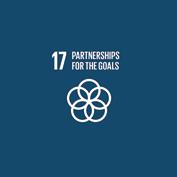
Green ‘Living’ Façade
Stressing the requirement for efficient, economic refurbishment solutions, utilizing and enhancing existing features and the character of the local area, whilst fostering sense of place and community identity.

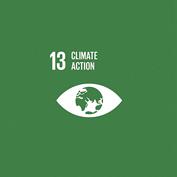
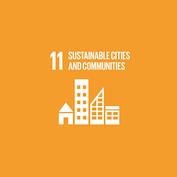

38 OTWO 12 / JULY 2020 OTWO 12 / JULY 2020 39

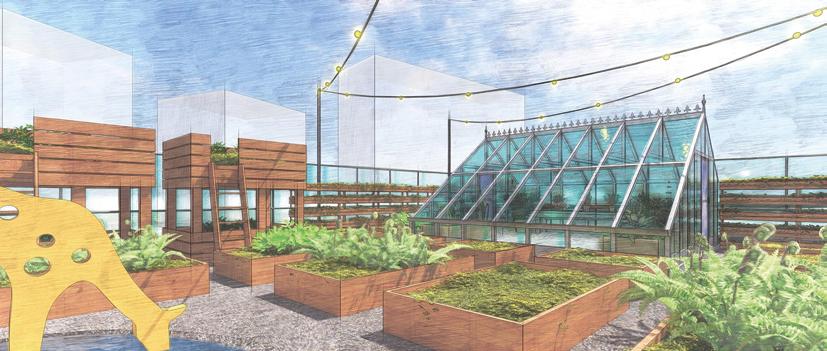
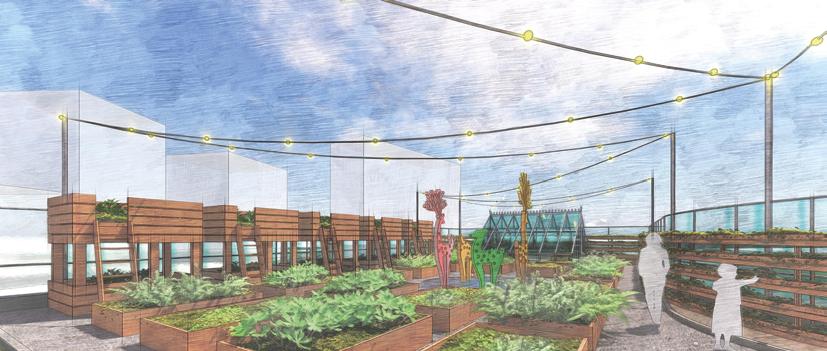
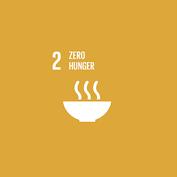

Community Urban Micro-farming Emphasis upon community building, interactive education and species diversity in urban areas, fostering social awareness and action.
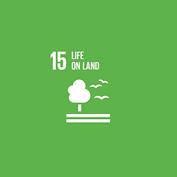
OTWO 12 / JULY 2020 41 40 OTWO 12 / JULY 2020

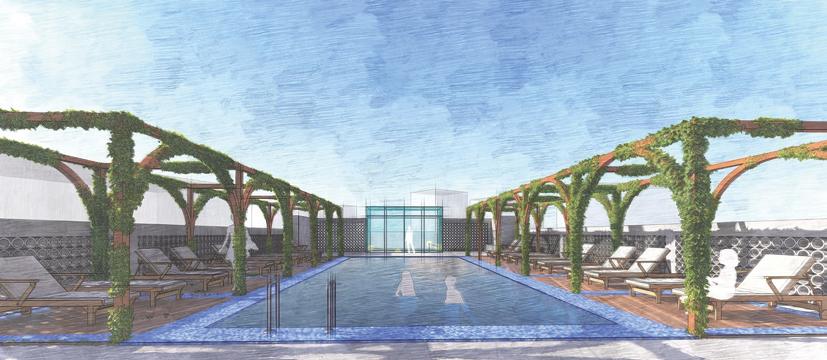





Urban Recreational Spaces
Focus on climate responsiveness, health, wellbeing and optimizing urban space into public amenity with an accessible active landscape.
us not forget that holistic planning is key to success, as it sets out a shared vision for the development of Gibraltar in the local and global context.
During the design phase, Ocean Heights can be established as a ‘living laboratory’ for a research project in order to apply the aforementioned, provide collaborative innovation guidance, monitor energy and water usage and technology performance, monitor satisfaction level of the residents and allow for sharing learnings with the local industry, Government and the wider global community.
Ensuring that experts in relevant fields, including town planning, landscaping, architecture and sustainability form part of a core project team from the outset of any project is crucial to facilitate a comprehensive approach and allow for knowledge-sharing in respective fields in order to solve the often-complex issues connected to the design, construction and operation of sustainable buildings.
It is at the project appraisal stage that such matters should be incorporated into a project in order to allow a building’s environmental performance to become an objective that can be balanced against other project’s objectives, yet in reality this happens very rarely and common practice tends to be to address sustainability at later stages when many of the opportunities to make a difference are reduced to some extent or another, or no longer available without incurring significant costs and delays to the project.
To find out more about the SDGs and how they can be incorporated at early stages of construction projects, or learn about the Life Cycle Assessment (LCA) of a building (existing or new build) and for assistance in producing Sustainability Assessments (SA), LCAs and other specialist reports visit www. planning.vision, call 20065888 or email info@planning.vision and speak to one of our specialists today. Why wait until it is too late?


Reduce, Reuse & Recycle
Underlining focus upon locally sourced, renewable materials, upcycling, retrofitting, the use of art and technology and changing perception around waste via innovation.
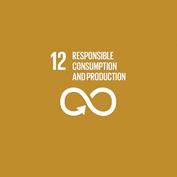

OTWO 12 / JULY 2020 43 42 OTWO 12 / JULY 2020


CROSS BORDER ISSUES
CUESTIONES TRANSFRONTERIZAS
Co-operation: and contact continues between the ESG and Spanish Environmental NGOs. Long-term objectives shared include for a moratorium on industry and the need for an independent and rigorous cross border epidemiological study. Work is ongoing. Complaint: the ESG acts as a watchdog on regional environmental issues and continues to file detailed complaints to the EU on the transgressions of pollution spikes usually from the CEPSA Oil Refinery. In February 2017 we lodged another complaint of excessive flaring by this industry, which was investigated against a background of our long-term complaints, and information lodged with the EU since 2002, with the assistance of Hassan’s International Law Firm.
Western Beach: since April 2010, Western Beach has seen appalling and illegal levels of sewage contamination from a storm drain diversion pipe in La Linea. The ESG has campaigned hard on this on several levels. The contamination continues after a brief interlude of improvement, especially during the non-bathing months - mid September to mid-April - when rainfall usually results in high levels of faecal contamination and E Coli. 9 years later and we still have this problem! Major MoD housing development has recently been constructed to the east of the
beach, which may flag up issues of foul smells from the area over time. With the impending exit from the EU, we will no longer have MEPs to try and get EU support for attempting resolution of these cross-border environment and health problems. A serious worry indeed.
Decline of Existing Spanish Environmental Protection Measures and Regulations. This situation is now producing grave concerns for our regional environment and must be challenged by Spain’s own environmental networks.
Concerns include:
- The dismantling of the Junta de Andalucía’s Consejeria de Medio Ambiente thereby weakening an already poor oversight of environmental management of the Bays chemical industries and other practices.
- Expansion of petrochemical industry despite the Europe wide call for action on the Climate Change Crisis
- Major infill and reclamation at Algeciras port for fuel storage and container storage in an already congested part of the bay – destroying ecosystems and removing important feeding areas for migratory marine life.
- Multiple large urbanisation projects approved to be built along the protected and valued Costa de la Luz coastline.
Cooperación: continúa el contacto entre el ESG y ONGs ecologistas españolas. Los objetivos comunes a largo plazo incluyen el de una moratoria en la producción industrial y la necesidad de que se lleve a cabo un estudio epideomológico transfronterizo de corte independiente y riguroso.
Reclamación: el ESG actúa como vigilante en cuestiones medioambientales de la zona y sigue enviando reclamaciones a la Unión Europea en base a incumplimientos de los límites de contaminación por parte de la refinería petrolífera de CEPSA. En febrero de 2017 enviamos otra queja fundamentada en el exceso de producción de llamas en esas instalaciones, un documento cuya revisión por parte de las autoridades comunitarias se sumó a la base del conjunto de quejas acumuladas a largo plazo así como de la información facilitada a la Unión Europea desde 2002 con la colaboración del despacho de abogados internacional Hassan. Western Beach: desde abril de 2010 la playa de poniente ha sufrido la presencia de contaminación procedente de vertidos de alcantarillado procedentes de una tubería de desagüe pluvial de La Línea. El ESG ha denunciado este fenómeno con insistencia, ante diversas instancias y a diferentes niveles. Tras un breve periodo en el que la situación mejoró, la polución persiste, particularmente fuera de la temporada de baño –entre mediados de septiembre y abril- cuando las lluvias producen altos niveles de contaminación fecal y E Coli 9. Seguimos padeciendo este problema después de nueve años. Al este de la playa se ha ejecutado recientemente un importan-
te desarrollo urbanístico por parte del Ministerio de Defensa, lo que podría ocasionar malos olores en la zona. Con la inminente salida de la Unión Europea dejaremos de contar con el apoyo de europarlamentarios a fin de conseguir el apoyo comunitario necesario para resolver estos problemas transfronterizos que conciernen al medioambiente y la salud. Es éste, sin duda, un grave motivo de preocupación. Disminución de medidas y normativas de protección medioambiental en España
Esta realidad está produciendo en la actualidad serias amenazas para el medioambiente de la zona y debe ser replicada por las propias estructuras ecologistas españolas.
La preocupación responde a:
- El desmantelamiento de la Consejería de Medio Ambiente de la Junta de Andalucía, con el consiguiente debilitamiento de una de por sí deficiente gestión de las industrias químicas de la Bahía así como de otras actuaciones nocivas para el entorno.
- La expansión de la industria petroquímica a pesar del llamamiento comunitario para la adopción de medidas contra la crisis del cambio climático.
- Las grandes actuaciones de relleno y reclamación de terreno al mar en el Puerto de Algeciras para el almacenamiento de combustible en una zona de la bahía ya saturada, algo que produce la destrucción de ecosistemas y elimina importantes fuentes de alimentación para las especies marinas migrantes.
- La aprobación de grandes proyectos urbanísticos en el litoral de la protegida y muy valorada Costa de la Luz.
OTWO 12 / JULY 2020 45 44
OTWO 12 / JULY 2020
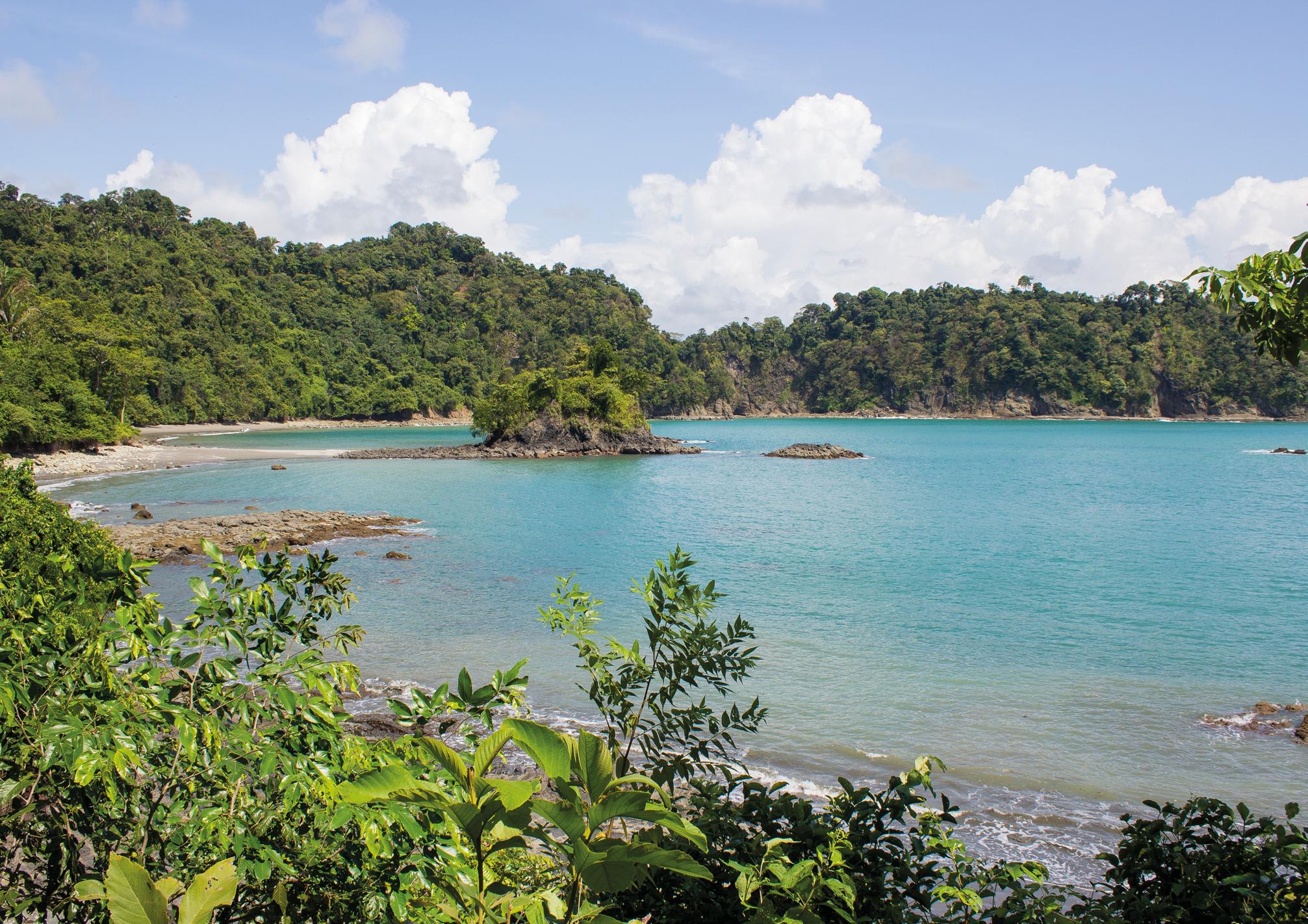
OTWO 12 / JULY 2020 47 46 OTWO 12 / JULY 2020
Text: Alicia Angulo Ortega.
Photographs: Alicia Angulo y Esperanza Pozo.
My trip to Costa Rica came at the right moment. At that time any destination would have Benn valid to keep me away from an inert reality. But that land gave me back the feeling that I had lost without hardly noticing : that of feeling alive. For the Ticos, the colloquial term by which Costa Rican call themselves, “pura vida”(pure life)is an expression they use as a greeting or a farewell: But in fact, it is much more than that, it not only symbolizes well-being and desire for it for the other partner, it is also a unique way of living. Never a combination of words has been able to define more faithfully the feeling of a people, their culture, and the entrails of a land that breathes green.
In its forests, the trails cross impossible trusses of dense vegetation. Its hanging bridges make their way through the tree branches that stand like skyscrapers: To walk through them is to walk through the clouds, touching the sky but on the ground. And suddenly, the rain, which discharges its intense and rapid force to fade away at the same speed as it appears. To let yourself be taken in by it is to soak up life: The tapping of its drops momentarily silences the slight whisper of the wind and the voices of the fauna that hides before our steps. We are intruders, mere observers of a nature that is too great for us. We are also tiny before the beauty of its beaches. Treasured mostly by the jungle or natural parks, they are the best balm for any spiritual ailment.
An ancient legend tells that when God finished painting the sky, he washed the brushes in the Celeste River and hence the color of its waters. The truth is that, in the so-called “teñidero”(dyehouse), the water turns into an intense turquoise blue worthy of the best canvases. And although it has its scientific explanation, I prefer to think of it as magic, like almost everything on this land. In the distance, the lushness of the forest that protects the river, muffles the thundering roar of the waterfall. But if you look at it from the front, the noise becomes deafening. Only a blue morpho butterfly, with its brazen and apparently chaotic flight, dares to challenge the water and its strength by getting closer than expected. Its iridescent wings draw blue traces in every flutter as it moves away.
And although there is no fable or story that tells the origin of the beauty of the Río Fortuna Waterfall,
Mi viaje a Costa Rica llegó en el momento oportuno. Por aquel entonces cualquier destino hubiera sido válido para alejarme de una realidad inerte, pero aquella tierra me devolvió un sentimiento que había perdido sin apenas darme cuenta, el de sentirme viva. Para los ticos, gentilicio coloquial mediante el que los costarricenses se autodenominan, “pura vida” es una expresión que usan como saludo o despedida. Pero en realidad es mucho más que eso, no sólo simboliza bienestar y deseo del mismo para el otro interlocutor, sino que además es una forma de vivir única. Y es que, nunca una combinación de palabras supo definir de una forma más fiel el sentir de un pueblo, su cultura y las entrañas de una tierra que respira en verde.
En sus bosques, los senderos atraviesan entramados imposibles de densa vegetación. Sus puentes colgantes se abren paso entre las ramas de árboles que se erigen cual rascacielos. Pasear por ellos es caminar entre las nubes, rozando el cielo pero sobre el suelo. Y de repente, la lluvia, que descarga su fuerza intensa y rauda para desvanecerse a la misma velocidad que aparece. Dejarse calar por ella es empaparte de vida. El repiqueteo de sus gotas enmudece momentáneamente el leve susurro del viento y las voces de la fauna que se esconde ante nuestros pasos. Somos intrusos, meros observadores de una naturaleza que nos viene grande. Diminutos también ante la belleza de sus playas. Atesoradas en su mayoría por la selva o por parques naturales, son el mejor bálsamo para cualquier dolencia espiritual. Una antigua leyenda cuenta que cuando Dios terminó de pintar el cielo lavó los pinceles en el Río Celeste y de ahí el color de sus aguas. Lo cierto es que, en el llamado teñidero, el agua se torna en un intenso azul turquesa digno de los mejores lienzos. Y aunque tiene su explicación científica, yo prefiero pensar que es magia, como casi todo en esta tierra. En la distancia, la frondosidad del bosque que ampara el río, amortigua el rugido atronador de la cascada. Pero si la miras de frente, el ruido se vuelve ensordecedor. Sólo una mariposa morfo azul, con su vuelo descarado y aparentemente caótico, se atreve a retar al agua y a su fuerza acercándose más de lo previsible. Sus alas iridiscentes van dibujando trazos azules en cada revoloteo mientras se aleja.
Y aunque no hay fábula ni cuento que narre el
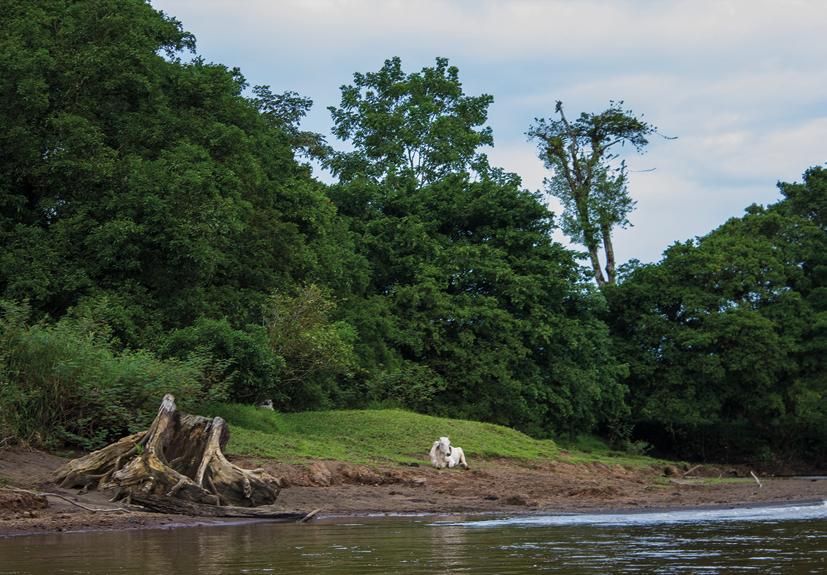
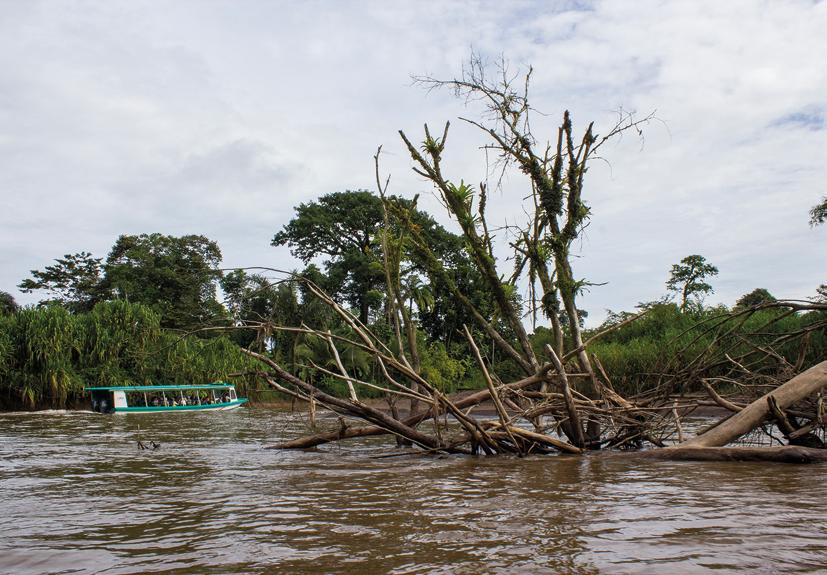
48 OTWO 12 / JULY 2020 OTWO 12 / JULY 2020 49

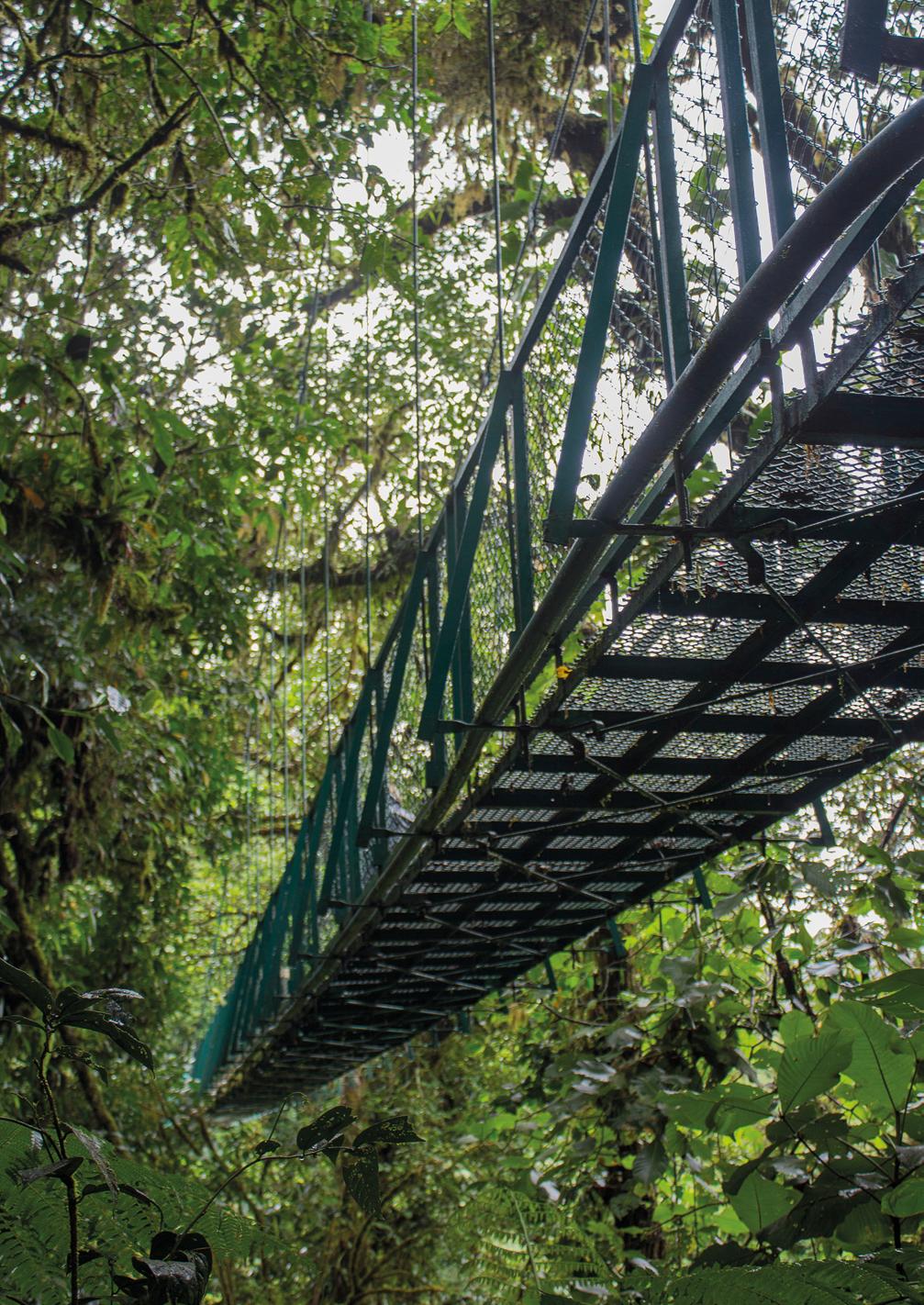
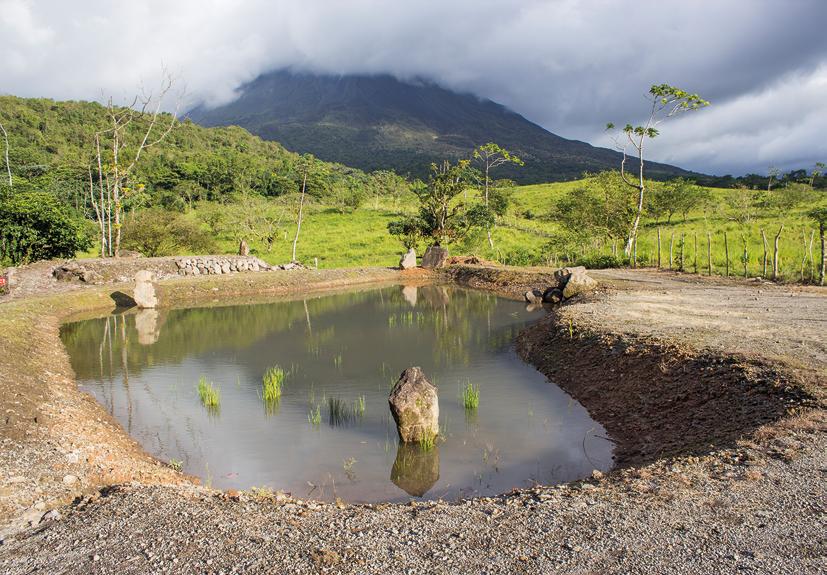
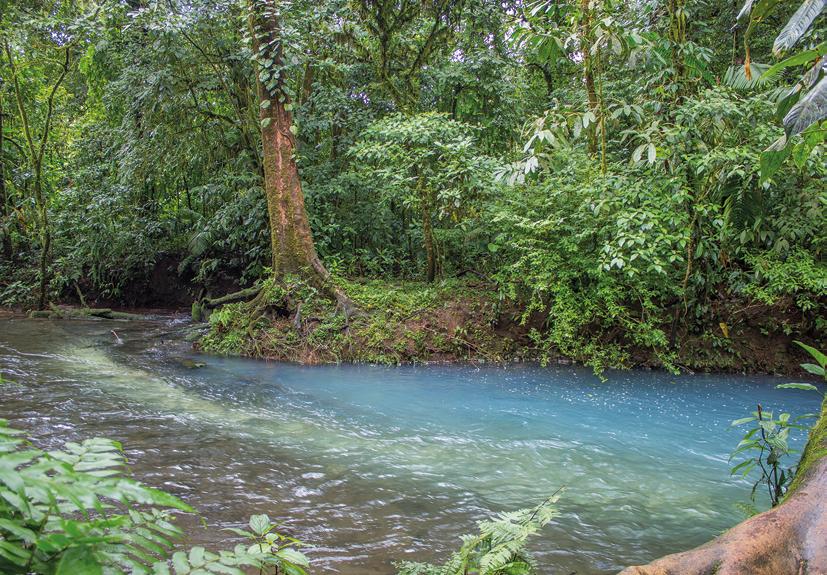
it would also deserve to have one. It rises before us after a few meters down the riverbed. Although it is hot, the cold of its waters bristles the skin as much as the picture before us does. A waterfall of more than seventy meters high protected by a huge vertical garden.I had never seen before a fuller palette of greens, from the most yellow green to the bluest green. On this occasion, we are the daring ones. Bathing at the foot of the waterfall somehow turns us into that butterfly.
In La Fortuna, looking at the horizon is seeing the image of the Arenal Volcano. The natural pyramid that forms its sides can be seen from almost any corner of the area. Its solemnity becomes more latent as we get closer. On its slope, under our feet, a rocky outcrop of small black rocks. They are remnants of its last eruption. Stepping on them reminds us that it is a living volcano. To the touch they are rough and porous. And with one of them in hand, it gets dark. The sunset bathes the green of the horizon with golden reflections. It is time to breathe and immerse yourself in life admiring the enclave. Impossible not to meet again with our inner world and reconcile with our ghosts.
In the middle of nowhere and everything; there is the town of Tortuguero. Out of the blue, because of its remote location. It can only be reached by plane or through the river that bears the same name. And entirely, because it is in the jungle and on the shores of the Caribbean Sea. Its beach is the place chosen by an endless number of turtles for spawning. To get to this remote place, we start from Puerto de la Pavona, a humble jetty whose charm lies in the age of its infrastructure. We sail through murky waters. The boat advances through the channel as if wanting to go unnoticed. And the animals that surround us seem not to notice our presence. The journey also seems to be a journey through time. A journey to the origin, where man still lives in communion with nature. Upon arrival, a picturesque little town. Its buildings are small houses with coloured facades. Some of them have been converted into craft stalls. Its streets, mostly dirt. There are no watches or rush to get there, not even cars. There is no ostentation or luxury. It is an authentic place, which continues to be so despite the visit of countless tourists. It keeps the essence of its being intact. Drums are heard, and
origen de la belleza de la Catarata Río Fortuna, también merecería tener uno. Se levanta ante nosotros después de recorrer unos metros por el cauce del río. Aunque hace calor, el frío de sus aguas eriza la piel tanto como lo hace la estampa que tenemos ante nosotros. Una cascada de más de setenta metros de altura amparada por un enorme jardín vertical. Jamás vi una paleta de verdes más completa, desde el verde más amarillo hasta el verde más azul. En esta ocasión, los osados somos nosotros. Bañarnos a los pies de la cascada nos convierte de algún modo en aquella mariposa.
En La Fortuna, otear el horizonte es divisar la imagen del Volcán del Arenal. La pirámide natural que forman sus lados puede verse casi desde cualquier rincón de la zona. Su solemnidad se vuelve más latente a medida que nos acercamos. En su ladera, bajo nuestros pies, un pedregal de pequeñas rocas negras. Son vestigios de su última erupción. Pisarlas nos recuerda que es un volcán vivo. Al tacto son rugosas, ásperas y porosas. Y con una de ellas en la mano, atardece. La puesta de sol baña el verde del horizonte de reflejos dorados. Es hora de respirar y de impregnarse de vida admirando el enclave. Imposible no reencontrarnos con nuestro mundo interior y reconciliarnos con nuestros fantasmas. En medio de la nada y del todo; ahí está el pueblo de Tortuguero. De la nada, por lo remoto de su ubicación. Sólo puede llegarse en avión o a través del río que lleva su mismo nombre. Y del todo, porque está en la selva y a orillas del Mar Caribe. Su playa es el lugar elegido por un sinfín de tortugas para el desove. Para llegar a este recóndito lugar, partimos desde el Puerto de la Pavona, un humilde embarcadero cuyo encanto radica en lo añejo de su infraestructura. Navegamos por aguas turbias. La embarcación avanza por el canal como queriendo pasar inadvertida. Y los animales que nos rodean aparentan no reparar en nuestra presencia. El trayecto parece ser también un viaje en el tiempo. Un viaje al origen, donde aún el hombre vive en comunión con la naturaleza. A nuestra llegada, un pintoresco pueblecito. Sus construcciones son pequeñas casitas con fachadas de colores. Algunas de ellas se han convertido en puestos de venta de artesanía. Sus calles, en su mayoría de tierra. No hay relojes ni prisas por llegar, ni siquiera coches. No hay ostentación ni lujos. Es un
52 OTWO 12 / JULY 2020 OTWO 12 / JULY 2020 53
to the beat of them, a group of natives dance. There is no better soundtrack for the improvised flashmob that surprises us.
And if sailing to Tortuguero is travelling to our roots, flying to Costa Rica is somehow the same. It is a town that maintains its forests and beaches as museum pieces and that keeps their customs alive even though they are ancestral. An indigenous community still exists on their lands, which continues to live as such. And they will continue to do so, because the maleku warrior spirit is part of the essence of this country.
In love with this land, and as it is said in mine “hasta las trancas”(1). So I came back from Costa Rica and that is how I will return one day.
(1) idiomatic expression meaning very deeply
lugar auténtico, que sigue siéndolo pese a la visita de un sinfín de turistas. Conserva intacta la esencia de su ser. Se oyen tambores, y al compás de ellos, un grupo de nativos bailan. No hay mejor banda sonora para el “flashmob” improvisado que nos sorprende. Y si navegar hasta Tortuguero es viajar a nuestras raíces, volar hasta Costa Rica en cierto modo también lo es. Es un pueblo que mantiene sus bosques y sus playas como piezas de museo y que mantiene vivas sus costumbres aunque éstas sean ancestrales. En sus tierras aún existe una comunidad indígena, que sigue viviendo como tal. Y que lo seguirá haciendo, porque el espíritu guerrero maleku forma parte de la esencia de este país.
Enamorada de esta tierra, y como se dice en la mía “hasta las trancas”. Así volví de Costa Rica y así volveré algún día.

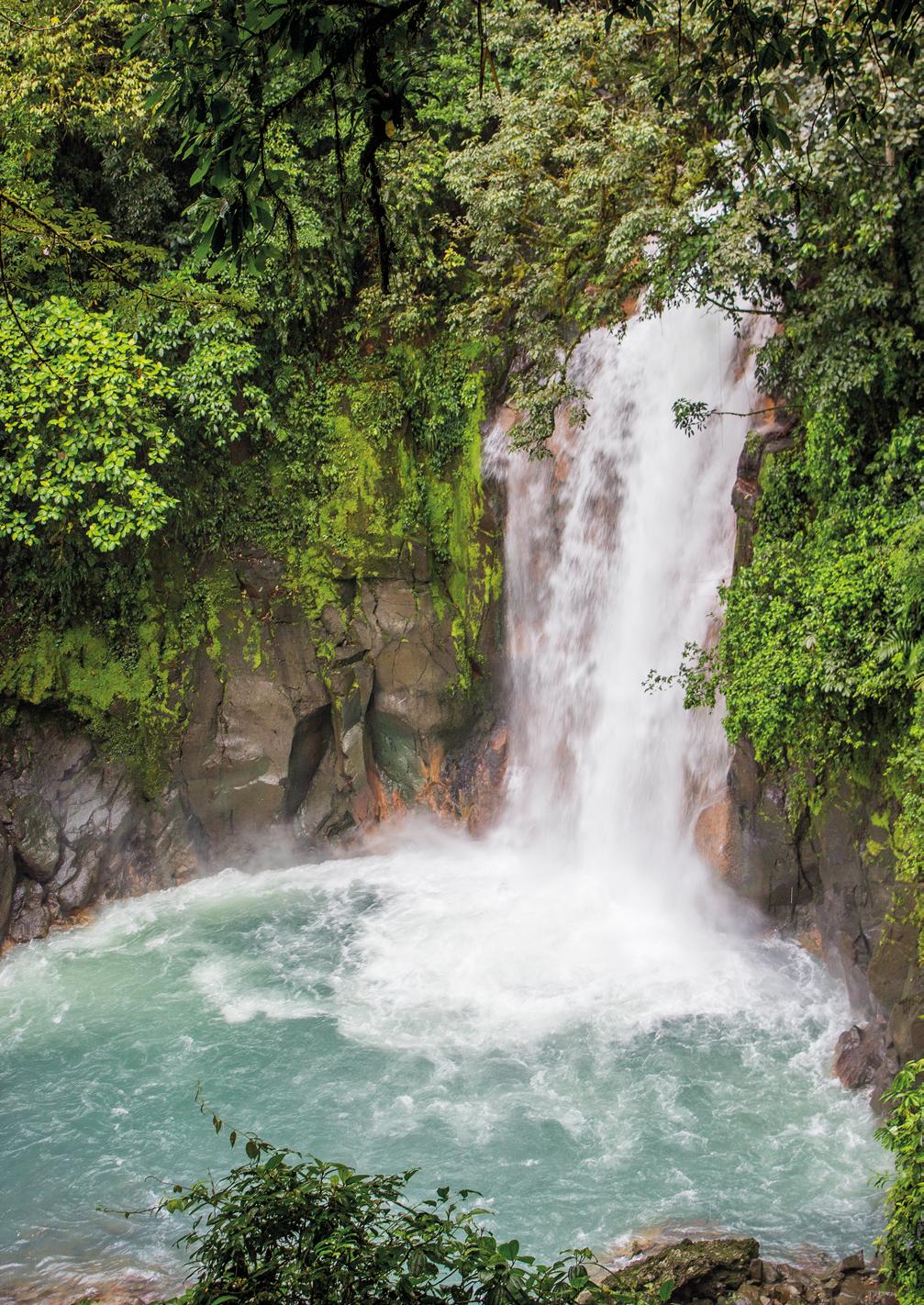
54 OTWO 12 / JULY 2020
“To walk through them is to walk through the clouds, touching the sky but on the ground.”

OTWO 12 / JULY 2020 57 56 OTWO 12 / JULY 2020
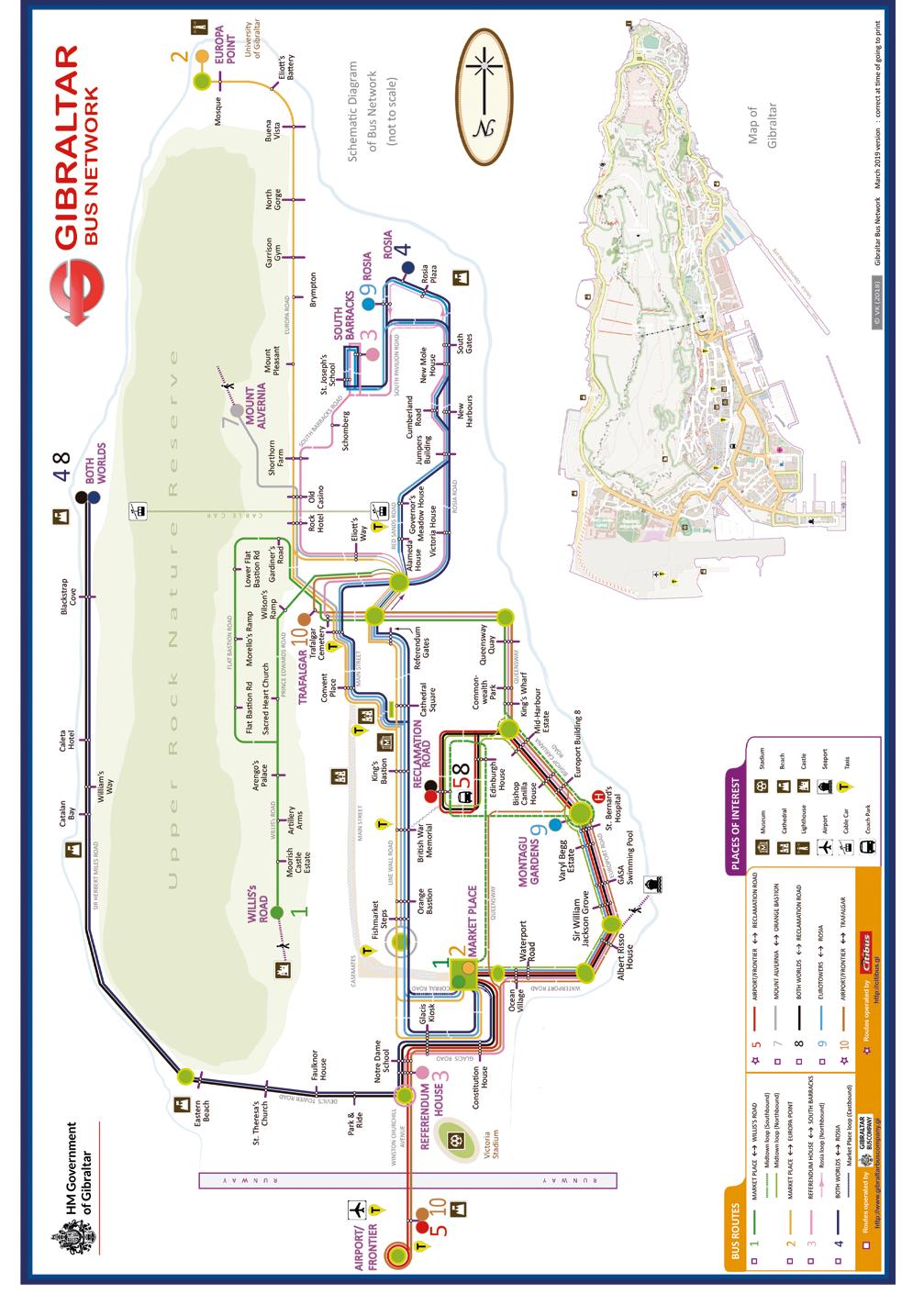

Minister for Business, Tourism and Transport

Some people feel that there was a back step on the introduction of the Line Wall road measures. Was this the case? What was the thinking behind starting with just three days a week?
I do not think it was a step back at all. When we started our consultation exercise with members of the public, organisations, stakeholders and business owners in the area we noticed that there was a lot of concern about the changes so we thought that perhaps it would be better to start off with a three day a week closure which would then allow us to compare it to the other four days of the week when the road was open again. I am calling it a live consultation because I think that things can be changed as we go along. There is no perfect model to the closure of Line Wall road or the closure of any road for that matter, but I think that as time goes by and we take on more information and more data we will be able to fine tune the situation.
How do you feel the current arrangement is working? Particularly, motorbikes continue to use Line Wall Road over the weekend and Monday’s. Are you satisfied with the policing currently in force and would you consider placing cameras to control?
As it is a new situation, we have had to place people to man the roads and we have also asked the police to assist. But people should just read the signs and if it says ‘no entry’ then they should not go into that zone, it is as simple as that. There are other roads that say ‘no entry’ and people do not go down those roads so I think that if everybody used a bit of common sense and followed the signs, we would not have any problems whatsoever.
I think it is generally going quite well. When I walk down those roads during the days in which they are closed to traffic it is amazing. It is quiet, with just the odd bus and the odd motorcycle, and when we launch and deliver our final plans for Line Wall road the results will be excellent. We hope to be able to launch the plans during the summer.
Walk the wall is also being drawn up. I do not know whether we will be launching both plans at the same time, but I will be introducing the three new road plans during this summer.
Is it still the intention to close Line Wall Road completely or just the one lane as suggested in
Hay quienes consideran que se dio un paso atrás con la introducción de las medidas adoptadas para Line Wall road. ¿Qué sucedió? ¿Qué razonamiento hubo para empezar sólo con tres días a la semana?
Opino que en absoluto se dio un retroceso. Cuando iniciamos nuestro proceso de consultas con miembros de la ciudadanía, organizaciones, otras partes interesadas y propietarios de negocios de la zona, advertimos que existía una gran preocupación respecto a las modificaciones, así que calibramos que quizás convendría arrancar con un cierre de tres días a la semana que nos permitiera comparar con el de cuatro tras la reapertura de la carretera. Lo denomino una consulta en directo por considerar que se pueden introducir cambios sobre la marcha. No existe un modelo perfecto para el corte de Line Wall Road o de cualquier otra calle por causas como las que se han producido, pero entiendo que a medida que pase el tiempo y acumulemos más información y datos podremos optimizar la situación. ¿Cómo percibe que está desarrollándose la medida adoptada? En concreto, están transitando motocicletas por Line Wall Road los fines de semana y los lunes. ¿Le parece suficiente el control existente en la actualidad? ¿Contempla la colocación de cámaras de vigilancia?
Tratándose de un escenario novedoso, tuvimos que desplazar a personas para controlar las calles y hemos pedido a la policía que ayude. Pero los ciudadanos simplemente deberían leer las señales y si una señal reza “No entry” no debieran circular por esas calles, de modo que pienso que si todos hiciésemos gala de un poco de sentido común y respetáramos las señales, no habría problemas de ningún tipo. Creo que el sistema decretado está funcionando bastante bien. Cuando camino por esas calles durante los días en los que están cerradas al tráfico, resulta asombroso. Hay tranquilidad, pasa esporádicamente un autobús o una moto y cuando lancemos y pongamos en marcha nuestra actuación en Line Wall Road, los resultados serán óptimos. Confiamos en poder hacerlo durante el verano. También estamos elaborando el plan para Walk the wall. Ignoro si lanzaremos ambos planes de manera simultánea, pero sí que impulsaré los tres proyectos para el tránsito durante este verano.
¿Persiste la intención de cortar Line Wall Road de forma total o sólo un carril como fue propuesto en el STTPP (Plan Sostenible para el Tráfico,
OTWO 12 / JULY 2020 61
the STTPP (Sustainable Traffic, Transport and Parking Plan)? If so by when do you expect the full closure to be introduced?
We are not discarding anything at the moment, after all this is a pilot project. Like I said we are carrying out a live consultation, so we want to see how the complete closure would work but we are also looking at proposals in the STTPP. It is not actually a ‘one way’ traffic proposal but a ‘one lane’ which can be reversed, so you can switch the direction of the road during different times of the day, which is something that we are definitely considering. It is important for us to have a cycle lane and to widen pavements so that people can walk around, plus add benches, trees and greenery. The idea was to create a green Gibraltar and a child friendly city, and we are going to deliver on that.
Park & Ride - where do you propose to organize this facility for visitors. Will the Devils Tower Road car park be used for this purpose?
Yes absolutely. That is one of the plans that we are targeting at the moment. I have already started works to get it cleaned up and cleared out. We need to carry out some refurbishments that hopefully won’t take too long to complete. I hope that we can announce the opening of Devil’s Tower Road car park as a ‘park & ride’ facility in the next 3-4 months. Have Pop up Bicycle Lanes and Bus Hubbs been considered as a possible solution to Gibraltar’s congestion problems?
I have seen that the UK have come up with pop-up bicycle lanes, but I am not too sure about them yet for Gibraltar. I do not think our roads are wide enough and although it is clear to me that we need proper segregated and safe cycle lanes, I do not know whether temporary cycle lanes would work. I am not 100% sure if we are going to go for something similar but I am definitely looking at the possibility, I am just not sure whether it would cause more disruption and confusion. I would rather launch proper bicycle lanes like the one we have planned for Line Wall Road. The bus tracker website has been very handy for public transport users. Are there any plans to develop the tracker as a full app that could be more user friendly? One useful feature would be for bus fare payments to be made through the app. Is this a possibility
el Transporte y el Aparcamiento)? De ser así, ¿cuándo calcula que se implantaría el corte total? En la actualidad no descartamos nada puesto que a fin de cuentas es éste un proyecto piloto. Como mencioné, estamos llevando a cabo una consulta en tiempo real de modo que queremos comprobar cómo resultaría el corte total mientras que a la vez también estamos estudiando las propuestas del STTPP. No se trata de facto de una propuesta de tráfico de un único sentido sino de una de un carril que puede ser reversible, de forma que se podrá variar el sentido del tráfico durante diferentes tramos del día, algo que estamos estudiando en profundidad. Para nosotros resulta importante contar con un carril bici y ensanchar las aceras para que los ciudadanos puedan caminar, además de añadir bancos, árboles y jardinería. La idea era la de crear un Gibraltar verde y una ciudad cómoda para los niños y eso es lo que vamos a materializar. Park & Ride: ¿Donde propone habilitar estás instalaciones para quienes nos visitan? ¿Elegirán el parking de Devils Tower Road a tal efecto? Sí, por supuesto. Éste es uno de los objetivos a los que apuntamos en la actualidad. He impulsado ya obras para despejarlo. Tenemos que llevar a cabo una serie de actuaciones cuya ejecución esperamos no se demore mucho. Espero que podamos anunciar el funcionamiento del aparcamiento Devil’s Tower Road como utilidad ‘park & ride’ en los próximos tres o cuatro meses.
¿Ha considerado la habilitación de carriles bici emergentes y centros de autobuses para solucionar los problemas de congestión del tráfico?
He observado que en el Reino Unido han habilitado carriles-bici emergentes, pero aún no estoy seguro de su implantación en Gibraltar. Considero que nuestras calles no son lo suficientemente anchas y aunque resulta evidente que tenemos que proporcionar carriles-bici segregados y seguros no estoy seguro de la viabilidad de disponer carriles de carácter temporal. No estoy totalmente convencido de si vamos a optar por algo similar pero sí que estoy contemplando esa alternativa. Es simplemente que no estoy seguro de si causaría más confusión y resultaría problemático. Preferiría habilitar carriles-bici propiamente dichos como el que hemos planificado para Line Wall Road.
Before the Covid19 crisis I was looking at the possibility of developing an app for the bus company, but we had not established whether we could actually pay for fares through the app. Remember that in Gibraltar the buses are free and to be honest I have not yet been able to revisit the issue of an app because I have been busy with other things, but it is definitely something that I will look into again. Let’s see what they come back with and what we can actually do with the app. I like the idea of technology and the more modern the technology is, the better and easier it becomes to use public transport. When the road closures were announced there was mention of an increase in the number and frequency of buses to improve capacity. Is this still the case and is the Government looking into introducing electric buses and taxis to run through “Flat” routes (town, frontier-town and Queensway - hospital routes)? If so, when do you foresee this happening?
The Government is not only looking into bringing electric buses to Gibraltar, they are committed to it. So yes, we will have electric buses here, I hope to issue a tender very soon in which the Government will be looking to purchase electric buses for use on flat routes. From what I am told, at the moment there is not a bus available that can climb up our hills, there is also the upper town which is practically impossible for electric buses to access at this stage. There are other areas that are not that steep such as around Europa Point and the Rock Hotel Hill that electric buses still cannot climb up, hopefully in the future there will be better quality buses that can get up our hills, but we will definitely be doing the flat routes first.
A change in taxi’s needs to be discussed with the Taxi Association as it would mean that they will have to make the investment themselves. I know some taxi drivers have already gone down the hybrid route which I think is excellent, but personally I am not completely happy with hybrids, I would like to see everything go full electric.
We are also in conversations with the bus company that runs the frontier buses, they are keen on developing and moving towards electric vehicles. Coming from a business background myself, we must take into account that when a business wants
La web para localizar autobuses ha resultado ser muy útil para los usuarios del transporte público. ¿Hay planes para crear una aplicación de mayor acceso y utilidad para los ciudadanos? La posibilidad de pagar a través de la app sería de lo más conveniente. ¿Está contemplado? Con anterioridad a la crisis del Covid19 estuve estudiando la posibilidad de desarrollar una aplicación para la compañía de autobuses, pero no habíamos decidido si se podrían pagar los billetes a través de la misma. Siendo gratuito el servicio de autobuses he de admitir con sinceridad que aún no he podido evaluar la cuestión de la app por haber estado ocupado con otros asuntos. Pero se trata, con total seguridad, de algo que volveré a estudiar. Veremos qué proponen y qué se puede hacer con la aplicación. Me gusta la apuesta por la tecnología y cuanto más moderna ésta sea, mejor y más fácil se hace usar el transporte público. Cuando se anunció el corte de carreteras se mencionó un incremento en el número y la frecuencia de autobuses de cara a mejorar el alcance del servicio. ¿Sigue siendo así, y , contempla el gobierno la introducción de autobuses y taxis eléctricos para recorrer rutas llanas (casco urbano, frontera-centro y Queensway-hospitales)? De ser así, ¿cuándo podría materializarse esta idea?
El gobierno no sólo contempla la introducción de autobuses eléctricos en Gibraltar, sino que tiene el firme compromiso de hacerlo. Así que, en efecto, tendremos autobuses eléctricos y espero sacar un concurso en breve con el cual el gobierno pretende la adquisición de autobuses eléctricos para cubrir esas rutas llanas. Por lo que se me ha dicho, no existe un autobús que pueda subir nuestras cuestas y en la actualidad subir a la parte alta resulta prácticamente imposible para los autobuses eléctricos. Hay otras zonas no tan empinadas como las cercanías de Europa Point y la colina del Rock hotel que los autobuses eléctricos aún no pueden recorrer. Con suerte, en el futuro habrá autobuses de mejor calidad que puedan subir nuestras colinas, pero es seguro que empezaremos por las rutas llanas.
Es necesario debatir con la Asociación del Taxi un cambio en cuanto a las necesidades de este servicio dado que ello conllevaría que sea el sector el que haga la inversión. Sé que algunos taxistas han optado ya por la alternativa hí-
62 OTWO 12 / JULY 2020 OTWO 12 / JULY 2020 63
to make an investment, they need to know that they will be able to pay for it. Covid19 unfortunately has not helped their business or any other business for that matter, but they are keen to move to a green agenda.
The government has previously committed to only allowing electric vehicles within the town area for commercial deliveries. Is this still being pursued and if so when do you foresee this change being implemented?
I spoke with the Chamber of Commerce and the Federation of Small Businesses before Covid19 started and told them that I wanted to see a change towards electric vehicles everything being equal, I would like all delivery vehicles on Main Street to be fully electric from the 1st January 2022. I must say that I am incredibly grateful to them because I thought that the idea would not be well received, however they were all for it and happy to go down that road. They know that Gibraltar wants to be as green as possible and they are willing to make that investment into their businesses. I need to talk to them again, like I said Covid19 has happened but we are not going to let it stop us from making Gibraltar a healthier place to live and a better place for our children and grandchildren. I think it is important that we keep on thinking in a positive way and try to put Covid19 to one side so that we can build something that not only looks nice but feels nice.
There are currently cash back incentives for individuals purchasing a new electric car or e-bike. Do these apply to Pedal assist and E-cargo bikes for individuals and businesses? Many cities view light electric freight vehicles (LEFV’s) such as E-cargo bikes as a great way to help reduce congestion and air pollution in urban areas. Has the government considered offering specific incentives for these vehicles as well?
From the top of my head, there is a £150 cashback for electric bikes, £250 for a hybrid car and £2500 for an electric car – which is quite a good incentive. I have not had any complaints about the cashback situation and as far as E-cargo bikes are concerned I have had quite a few enquiries from people who want to start using them. It is incredibly positive to hear that people are thinking that way without be-
brida, algo que considero formidable, pero personalmente no estoy enteramente satisfecho con los híbridos dado que preferiría un escenario totalmente eléctrico.
También estamos en negociaciones con la empresa de autobuses que se encarga del servicio de la frontera y ésta es favorable a desarrollar y poner en funcionamiento la opción de los vehículos eléctricos. Proviniendo yo mismo del sector de la empresa, debemos considerar que cuando una compañía pretende realizar una inversión, necesita saber si podrá hacer frente a la misma. Lamentablemente, el Covid19 no ha favorecido ni a este ni a otros sectores, pero están dispuestos a involucrarse en una agenda verde. El gobierno se comprometió con anterioridad a permitir el uso de vehículos eléctricos sólo en la zona urbana y para repartos comerciales. ¿Mantienen esta idea y, si es así, cuándo contemplan la introducción de este cambio?
Hablé con la Cámara de Comercio y la Federación de Pequeños Empresarios antes de que se desencadenara la situación del Covid19 y les expuse que quería el cambio a los vehículos eléctricos, integral, y que todos los de reparto en Main Street sean 100% eléctricos a partir del 1 de enero de 2022. Debo manifestar una inmensa gratitud hacia ellos porque pensé que la idea no sería bien recibida. Sin embargo, todos la apoyaron y se manifestaron dispuestos a adaptarla en su totalidad.
Saben que Gibraltar quiere alcanzar el máximo nivel de ecologismo posible y todos están dispuestos a realizar la inversión necesaria al respecto. Tengo que volver a hablar con ellos y, como he dicho, ha sucedido lo del Covid19, pero ello no nos va a detener en nuestro objetivo de convertir a Gibraltar en un lugar más saludable y mejor para nuestros hijos y nietos. Considero importante que sigamos manteniendo una mentalidad positiva y consigamos dejar el Covid19 a un lado para construir algo que no sólo aparente ser agradable sino que lo sea y se sienta de facto.
Existen en la actualidad incentivos de devolución de inversiones para particulares que adquieran un coche o una bici eléctrica. ¿Son aplicables al pedaleo asistido y a las bicis eléctricas de reparto para particulares y empresas?
Varias ciudades contemplan los vehículos ligeros eléctricos de carga (LEFV’s), caso de las bicis E-cargo, como una gran solución para reducir la congestión del tráfico y la contaminación del aire. ¿Ha

64 OTWO 12 / JULY 2020
ing told to. I think that people are hearing about the changes being made and rather than wait to be told what to do they are taking the initiative and going ahead themselves, which is excellent. So yes, we will be announcing some form of incentive for businesses to move to e-cargo bikes if their business model allows.
Have any plans been made to convert all government vehicles as well as police and emergency services fleets to green vehicles?
As Minister for Postal Services, I am looking to convert our delivery fleet to only electric vehicles. We are also trialling two E-cargo bikes with the idea of getting rid of motorcycles, which I think is the right way to go, but being as ambitious as I am for Gibraltar my target is to get rid of all of the cars used by the post office and replace them with fully electric vehicles, I do not want to commit to a certain date but I would like to do it as soon as possible. I am sure that my ministerial colleagues are also looking at their departments and I am sure that they will want to go green too. The emergency services vehicles would come under the GHA and knowing how keen Mr Balban (Minister for Health) is to go green, he will also be looking at those changes.
Can you tell us more about the Pedal Ready Initiative and when its due to start? We’ve seen little to no promotion of the initiative and it would be great to see it evolve further and move alongside all the positive changes we are seeing around Gib.
Pedal Ready has been left a little bit to the side, partly because of my other commitments, but I have started moving forward with it. I have had a few meetings with the people involved and we should be in a position to make an announcement very soon. I want it to move forward, I want our children to have the possibility to learn how to cycle as well as people of all ages that also want to learn or who are not completely comfortable and feel that they could do with a few lessons to gain that confidence. So yes, I hope to be able to make an announcement very soon. Like I said before, it is partly my fault because I have been so involved with other things, but after it was brought to my attention we had a few meetings to get it moving. When will the “Pollution Tax” be introduced and how will it work?
considerado el gobierno la posibilidad de ofrecer también incentivos específicos para estos vehículos?
Existe una ayuda de 150 libras para las bicis eléctricas, de 250 para los coches híbridos y de 2.500 para un coche eléctrico, lo cual constituye un buen incentivo. No he recibido ninguna queja sobre esta política de cashback y en lo que a las bicis de reparto E-cargo se refiere, he recibido unas cuantas preguntas de personas que quieren empezar a hacer uso de las mismas. Resulta enormemente esperanzador saber que hay gente decidida a adoptar ese camino sin que se les haya propuesto. Creo que las personas están sabiendo de los cambios que se están produciendo y que antes que esperar a que se les comunique qué hacer, están tomando la iniciativa y dando el paso por sí mismas, lo cual es formidable. Así que desde luego que anunciaremos algún tipo de incentivo para empresas para que transiten hacia las bicis E-cargo si su modelo de negocio así lo permite. ¿Se ha llevado a cabo alguna iniciativa para convertir la flota de vehículos gubernamentales, así como la de la policía y los servicios de emergencia, en vehículos verdes?
Como ministro del Servicio Postal, tengo como objetivo convertir nuestra flota de reparto en una que sea exclusivamente eléctrica. También estamos haciendo pruebas con dos bicis E-cargo con el propósito de desembarazarnos de los ciclomotores, algo que considero adecuado. Pero siendo yo de naturaleza tan constructiva, mi meta para Gibraltar es la de retirar todos los coches que usa el servicio de correos para reemplazarlos por vehículos 100% eléctricos. No me quiero comprometer para una fecha concreta, pero quisiera hacerlo lo antes posible. Estoy seguro de que mis colegas ministros están estudiando la situación en sus respectivos departamentos y tengo el convencimiento de que todos quieren adoptar la vía ecológica. Los servicios de emergencias entrarían en la competencia de la autoridad sanitaria (GHA) y sabiendo lo dispuesto que está el señor Balban (ministro de Salud) a seguir la vía verde, seguro que también contemplará dicha transformación.
¿Puede decirnos algo más sobre la iniciativa Pedal Ready y cuándo se pondría en marcha?
Hemos visto entre poca y ninguna promoción de la misma y sería fantástico verla avanzar al mismo paso que todas las transformaciones positivas que estamos viendo en Gibraltar.
Pedal Ready ha sido dejado un poco al lado, en parte

We do not have a firm date for the introduction of the pollution tax. The idea behind the tax is that we do not want the funds recovered from the charge to go into Government coffers and end up paying for other things, it is to help pay for green traffic and transport projects such as the widening of roads and cycling lanes as well as other projects that are just for improving the environment and Green Gibraltar policies.
The STTPP was announced as an organic template that would evolve as schemes were introduced and our society’s needs changed. Are you still committed to this plan and when do you think it will next be reviewed?
The STTPP is a live document, I believe it took four years to produce and it was launched just three years ago in 2017. From what I am told, as I was not in government at the time, a lot of hard work and consultation went into it. I have read it, the plan is very good and contains a lot of information, it is now a question of putting it all into place. We will not be able to deliver everything outlined in the plan because in my view, some of the suggestions are quite complicated, but it does not mean that we are not going to try. For me, the STTPP is a live document and I do not think we can review it as such right away as there are certain things within the plan that we have to tackle first. As we go along we will make changes, but as far as reviewing it I have no plans to do so at the moment, and to be honest the thought scares me due to the amount of work and consultation that went into putting together the best and most comprehensive plan possible.
por mis otros compromisos, pero he empezado a avanzar en ello. He mantenido algunas reuniones con las partes implicadas y deberíamos poder anunciar algo al respecto muy pronto. Quiero que progrese y que tanto nuestros niños como personas de cualquier otra edad tengan la posibilidad de aprender a montar en bici, así como aquellas que no se sientan totalmente cómodas y considerarían necesario ganar confianza para circular. Así que desde luego, espero poder realizar un anuncio al respecto con prontitud. Como antes dije, tengo parte de culpa por haber estado tan implicado en otras cuestiones, pero después de haberme sido planteado este tema, celebramos unas cuantas reuniones para ponerlo en marcha. ¿Cuándo se implantará la tasa por contaminación y de qué manera funcionará?
No tenemos una fecha en concreto para la introducción del impuesto por contaminación. La idea no es que lo recaudado por el cobro del mismo se acumule en el fondo del gobierno, sino que se emplee para costear el tráfico ecológico y proyectos de transporte como el ensanchamiento de carreteras, carriles bici así como otras iniciativas encaminadas a mejorar nuestro medioambiente y propulsar las políticas verdes locales. El STTPP fue presentado como un modelo orgánico que evolucionaría según se implantaran los programas y cambiaran las necesidades de nuestra sociedad. ¿Sigue comprometido con este plan? ¿Cuándo piensa que será revisado? El STTPP es un documento vivo, creo que se tardaron cuatro años en elaborarlo y fue presentado hace justo tres años, en 2017. Por lo que se me ha dicho, al no estar yo entonces en el gobierno, conllevó cantidades ingentes de esfuerzo y consultas. Lo he leído, se trata de un gran plan y contiene numerosa información. Se trata ahora de ponerlo todo en marcha. No podremos facilitar todo lo planificado porque, según lo veo, algunas de las propuestas son bastante complejas, pero eso no quiere decir que no vayamos a intentarlo. Para mí, el STTPP es un documento vivo y no pienso que podamos revisarlo de forma inmediata en su totalidad debido a que existen ciertos aspectos dentro del mismo que debemos de atajar en primer lugar. Según progresemos, introduciremos cambios, pero en lo tocante a revisarlo, no lo contemplo de momento y, para ser sincero, ello me asusta debido a la cantidad de trabajo y de consultas en las que nos metimos para construir el mejor y más integral plan posible.
66 OTWO 12 / JULY 2020 OTWO 12 / JULY 2020 67
CHAPTER EIGHT / CAPÍTULO OCHO
The Amazigh tribes of the southern shores of the Straits
Las tribus amazighs de la orilla sur del Estrecho

Juanlu González
Article and images

68 OTWO 12 / JULY 2020
Although becoming more and more obsolete, in rural areas of Morocco an additional layer of social organisation based on belonging to ancestral human groups with common practices and customs continues to exist and is still perfectly recognisable today. They are known as tribes, although the term commonly used during the Spanish colonial period is Kabyle, which is a specific reference to both tribes of Berber origin as well as the area they occupy. In Morocco, there are more than 300 different known tribes, belonging to two main branches: the Arab tribes, that came from the Middle East in the 7th century, and the Berber tribes, native to North Africa for thousands of years. The name ‘Berber’ is derived from the term ‘barbarian’, a name designated to them by the Roman Empire, not because of their fierceness, but as a disparaging term meaning ‘foreigner’ due the many years they resisted Romanisation, allowing them to maintain their independence from the Roman metropolis. Because of this, they prefer to call themselves by a term from their own native language: they are the Amazigh people (plural Imazighen), which means free men, a name much more poetic and in keeping with their historical and cultural significance. Curiously, the Kabyle were chosen by the Spanish colonial administration to organise the territory, giving new life to the concept of a tribe.

Their language, Tamazight, after having been overlooked for many years, has recently become a co-official language in Morocco, in what constituted an important official gesture from the monarchy towards the original population of the country. However, not all Berber tribes can speak it, since a good proportion have been Arabicised and speak the popular variant of Moroccan Arabic. It so happens that Tamazigh can be written with Latin letters, Arabic letters or with its original lettering, Tifinagh , an alphabet that dates back to at least the 3rd century B.C. and has been in continuous use by the Tuareg desert tribes. In the southern part of the Straits, Riffian (or Tarifit in the Amazigh language) is spoken, one of the three Berber dialects still present in Morocco.
There are approximately 60 to 75 million Imazighen peoples scattered from the Siwa Oasis in Egypt to the Atlantic, including the Canary Islands, whose Guanche population is now acknowledged to be of
Aunque cada vez está mas en desuso, en el medio rural marroquí sigue existiendo una capa adicional de organización social basada en la pertenencia a grupos humanos ancestrales con usos y costumbres comunes, perfectamente reconocibles hoy en día. Se les conoce como tribus, aunque el término usado durante más comúnmente durante el periodo colonial español es cabila, que hace referencia concreta, tanto a las tribus de origen bereber, como a la zona que ocupan. En Marruecos se conocen más de 300 tribus diferentes, pertenecientes a dos ramas principales: las tribus árabes, llegadas de Oriente Medio desde el siglo VII, y las tribus beréberes, nativas de la región desde hace miles de años. Su nombre deriva del concepto bárbaro, con el que el Imperio Romano designada a estos pueblos, no por su fiereza, sino con la acepción peyorativa de extranjero, ya que resistieron la romanización durante muchos años en los que mantuvieron su independencia real de la metrópoli. Por ese motivo, ellos prefieren llamarse con un término nacido en el seno de su propia lengua originaria: son el pueblo amazigh (en plural imazighen) que significa hombres libres, mucho más poético e incluso más acorde con su significado histórico y cultural. Curiosamente, las cabilas fueron escogidas por la administración colonial española para organizar el territorio, otorgando aires nuevos al concepto de tribu.
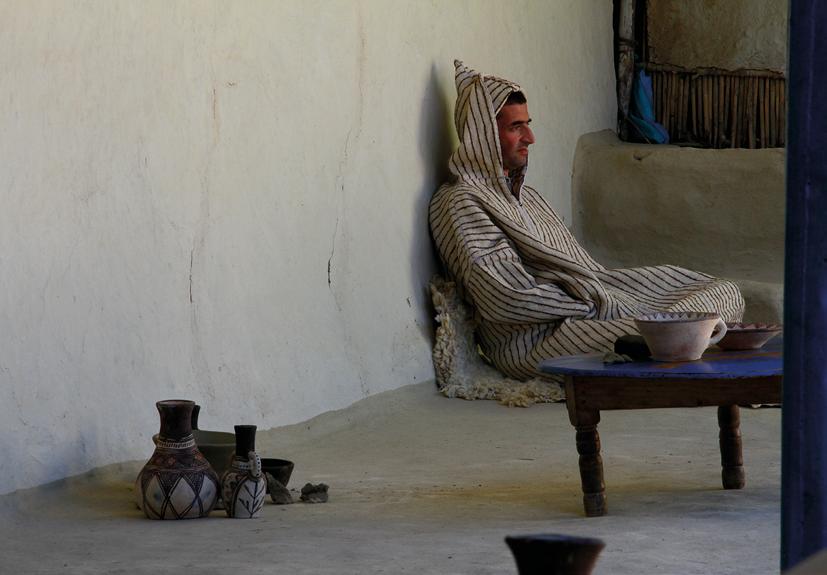

Su lengua, el Tamazight, tras ser olvidada durante muchos años, se ha convertido recientemente en cooficial en Marruecos, en lo que constituyó un importante gesto oficial de la monarquía hacia la población originaria del país. No obstante, no todas las tribus beréberes lo hablan ya que, buena parte de ellas han sido arabizadas y hablan la variante popular del árabe marroquí. Se da la circunstancia de que el Tamazigh puede escribirse con letras latinas, con letras árabes o con su grafía originaria, el Tifinagh , un alfabeto que data como mínimo del siglo III a.C. y que ha sido mantenido en uso ininterrumpidamente hasta hoy por las tribus tuaregs del desierto. En la zona sur del Estrecho se habla el rifeño (Tarifit, en lengua amazigh), uno de los tres dialectos bereberes presentes en Marruecos. Los pueblos imazighen constituyen un grupo humano con entre 60 y 75 millones de personas repartidas desde el oasis de Siwa, en Egipto, hasta el

70 OTWO 12 / JULY 2020 OTWO 12 / JULY 2020 71
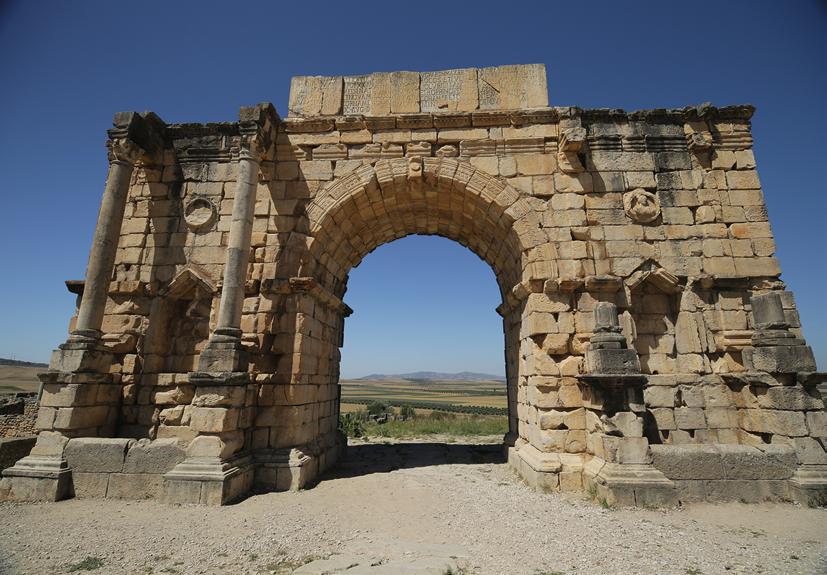

Berber ethnicity. They mainly inhabit Morocco and Algeria, but also Tunisia, Mauritania, Egypt, Libya, Niger, Mali and Burkina Faso; additionally, there is a European diaspora estimated at around three million people. The Islamisation of the Iberian Peninsula in the Middle Ages was brought about basically by ethnic groups of Amazigh origin, not by Arab populations as is commonly believed. But there is more, recent studies of population genetics conclude that Basques, Iberians and Sardinians have a pre-Neolithic relationship closer to North American populations than to European ones. Other massive research based on DNA analysis shows, for example, that 20% of Galicians today have similar genetic characteristics of the people of North Africa, which scientifically debunks the myths of conquests and reconquests, more political than historically accurate, that we have been taught and that we learn about in textbooks.
In the Rif, more than fifty tribes are still present and, in some ways, still retain their personality despite the passage of time and processes of urban concentration or territorial mobility. It could be said that, for them, it is as if a kind of kinship unites them, as if they were a great family. Thus, each Kabyle is subdivided into clans; each clan by lineage ... and so on until reaching the patriarchal family nucleus, made up of father, mother and unmarried sons and daughters. Unsurprisingly, many of the tribes are named using two words, a person’s name preceded by the term Ben, Bni or Beni, meaning “son of.” Thus, in the region of the Rif we have the tribes of Beni Hassan, Bni Arouss, Beni Ahmed, Beni Mesguilda, etc. On the northern coast of the straits we find municipalities such as Benalup, Benaocaz, Benadalid, Benalauría ... or typical place names of Los Alcornocales such as Benazaina, which unequivocally indicate the enormous presence of the Amazigh in Al Andalus. In the past, these tribes functioned as almost mini states. They established diplomatic relations with other nearby Kabyle’s, in a kind of network of alliances that provided structure to the entire territory. The holy places and the marabouts, which were often conveniently located in areas of intertribal borders, played an important role in the resolution of disputes, since at their core and as a result of an intrinsic acceptance of the sacred, they were not governed by
Atlántico, incluidas las Islas Canarias, cuya población guanche se admite hoy como de etnia bereber. Fundamentalmente, habitan Marruecos y Argelia, pero también Túnez, Mauritania, Egipto, Libia, Níger, Malí y Burkina Faso; además de una diáspora europea actual cifrada en alrededor de tres millones de personas. La islamización de la Península Ibérica en la Edad Media se produjo básicamente por etnias de origen amazigh, no por poblaciones árabes como se cree habitualmente. Pero hay más, estudios recientes de genética de poblaciones concluyen que vascos, ibéricos y sardos tienen un parentesco preneolítico mas cercano a las poblaciones norteamericanas que a las europeas. Otras investigaciones masivas que toman como base los análisis de ADN demuestran, por ejemplo, que el 20% de los gallegos de la actualidad presentan características genéticas propias de las gentes del norte de África, lo que fulmina científicamente los mitos de conquistas y reconquistas, más políticos que históricos, que nos enseñaron y se enseñan en los libros de texto. En el Rif se mantienen presentes más de medio centenar de tribus que aun conservan, en cierto modo, su personalidad a pesar del paso del tiempo y de los procesos de concentración urbana o de movilidad territorial. Se podría decir que, para ellos, es como si les uniese una especie de parentesco, como si fuera una gran familia. Así, cada cabila se subdivide en clanes; cada clan se abre en linajes… y así hasta llegar al núcleo familiar patriarcal, formado por el padre, la madre y los hijos e hijas solteras. No en vano, muchas de las tribus se nombran con dos palabras, un nombre de persona precedido con el término Ben, Bni o Beni, que significan «hijo de». Así, en nuestra región rifeña tenemos las tribus de Beni Hassan, Bni Arouss, Beni Ahmed, Beni Mesguilda, etc. En la orilla norte encontramos municipios como Benalup, Benaocaz, Benadalid, Benalauría… o topónimos alcornocaleños como Benazaina, que indican inequívocamente la enorme presencia amazigh en Al Andalus.
En el pasado, estas tribus llegaron a funcionar casi como miniestados. Establecían relaciones diplomáticas con otras cabilas cercanas, en una especie de red de alianzas que proporcionaba estructura a todo el territorio. Los lugares santos, los morabitos, muchas veces ubicados convenientemente en zonas
72 OTWO 12 / JULY 2020 OTWO 12 / JULY 2020 73
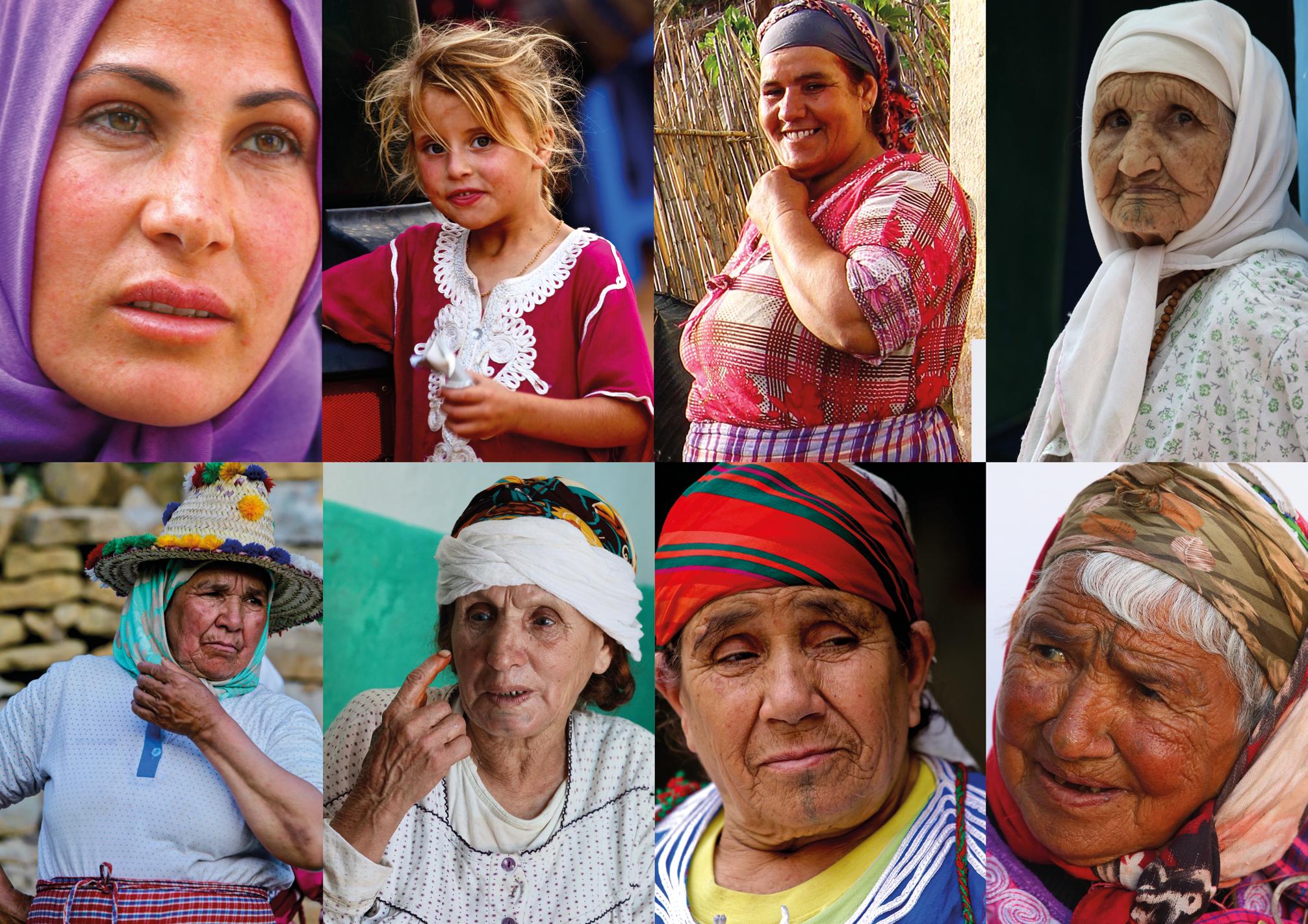
any laws or earthly authorities whatsoever. Leading each tribe was a sheikh, appointed by the members of the tribe, however, when the Kabyle paid homage to a sultan (king - as we would say today), it was he who appointed the Caid, a representative of the monarch in the region. Many people wonder why the Amazigh peoples have not bequeathed great buildings to posterity. The answer to this lies in the idiosyncrasies of this nation, comprised of a very egalitarian people, working in collectives, without hierarchies or dynasties that accumulate power and wealth based on the exploitation of others. However, despite these facts, we should not overlook all the things this populace has bestowed upon the world. In addition to their local heroes, there have been Roman emperors such as Marco Opelio Macrino and Séptimo Severo, father of subsequent emperors Geta and Caracalla, as well as important Christian saints such as Saint Augustine and three Catholic Popes.
Today, the Amazighs are mainly Sunni Muslim and practitioners of Sufism, the most spiritual and mystical branch of Islam. However, they have also maintained their own unique and original features within Islam such as Maraboutism - the worship of saints, a practice already cited by Roman authors at the beginning of the common age. However, and as to be expected, in ancient times the Berber were imbued with all the religious movements of the Mediterranean, absorbing influences from the Egyptian, Phoenician, Iberian, Greek and Roman religions. Later they widely adopted Christianity and Judaism, which was mixed with their own animistic beliefs associated with the elements and natural cycles which although Islamised, has endured for thousands of years.
An important and well-known tribe, settled on the coast near Tetouan, is that of the Ghomara. It is more of a ‘super tribe’ or a confederation of different tribes belonging to the Masmuda, descendants of Gumar ibn Mistaf ibn Malil ibn Masmud. The tribe is known, among other things, for the number of toponyms they have left behind in Andalucia, such as the famous Cuesta de Gomérez (Slope of Gomérez), which leads up to the Alhambra, as well as neighbourhoods of the same name in Granada, Vélez-Málaga, and even the Peñón de Vélez de la Gomera - a
de fronteras intertribales, jugaban un importante papel en la solución de disputas, ya que en su seno, como circunstancia inherente al acogimiento a sagrado, no imperaban ni leyes, ni autoridad terrenal alguna. Al frente de cada tribu se encontraba un sheik, un jeque nombrado por los propios miembros de la tribu aunque, cuando la cabila rendía pleitesía a un sultán (a un rey como diríamos hoy), era este quien nombraba al caid, al representante del monarca en la región. Mucha gente se pregunta porqué los pueblos amazighs no han legado grandes edificios a la posteridad. La respuesta es por la idiosincrasia propia de esta nación, que conforma un pueblo muy igualitario, bastante asambleario, sin jerarquías o dinastías que acumulasen poder y riqueza en base a la explotación del prójimo. Pero, esa circunstancia no debe hacernos olvidar que este pueblo ha legado al mundo, además de sus héroes locales, desde emperadores romanos como Marco Opelio Macrino y Séptimo Severo, padre de los también emperadores Geta y Caracalla, hasta santos cristianos de la talla de San Agustín o incluso tres papas del Vaticano. Los amazighs son hoy mayoritariamente de religión musulmana suní y practicantes del sufismo, su rama más espiritual y mística. Sin embargo, han mantenido rasgos propios muy marcados y originales en el Islam como el morabitismo, el culto a los santos, ya citado por autores romanos al principio de nuestra Era. Sin embargo, como no podía ser de otra manera, durante la Antigüedad, los pueblos bereberes se embebieron de todos los movimientos religiosos del mediterráneo, absorbiendo influencias provenientes de las religiones egipcias, fenicias, ibéricas, griegas y romanas. Posteriormente adoptaron masivamente el cristianismo y el judaísmo, pero siempre mezclados con cultos propios animistas relacionados con elementos y ciclos naturales que han mantenido, aunque islamizados, desde hace miles de años, hasta el presente.
Una tribu muy importante y conocida, asentada en las costas cercanas a Tetuán es la de los Ghomara. Es mas bien una súper tribu o una confederación de diferentes tribus que pertenece al grupo de los masmuda, descendientes de Gumar ibn Mistaf ibn Malil ibn Masmud. Es conocida, entre otras cosas, por la cantidad de topónimos que han dejado en Andalucía, como la famosa Cuesta de Gomérez, que sube hasta

OTWO 12 / JULY 2020 76
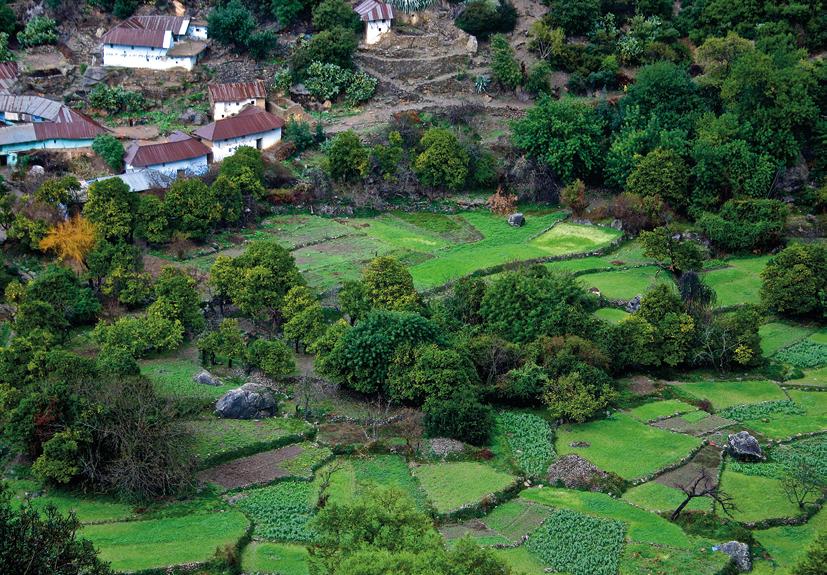
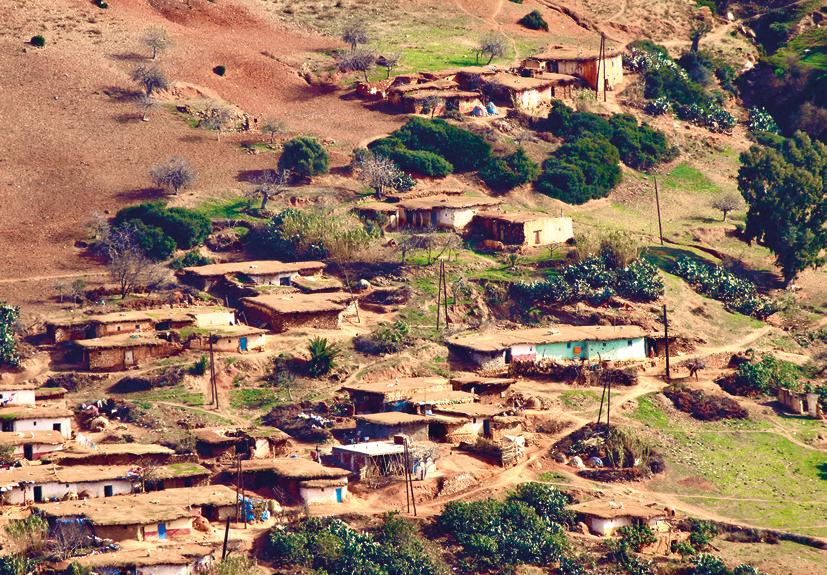
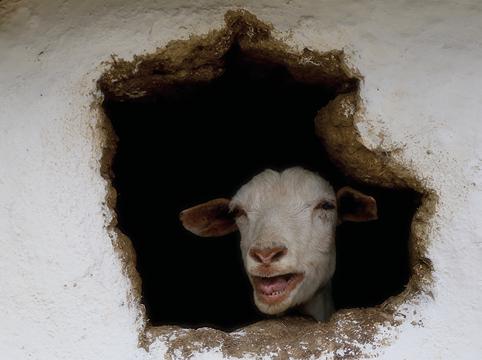
shameful exclave under Spanish sovereignty on the Moroccan coast between Ceuta and Melilla.
The city of Chefchaouen belongs to the Akhmas tribe. Researchers who wrote about the tribe in the late 19th century already highlighted that it was especially cultured and religious. Illiterate people were literally set apart from the rest, with three quarters of the inhabitants able to read and write and were well versed in legal texts and, of course, the Quran. Perhaps that is why Chaouen was always considered a holy city, where non-Muslims were forbidden to enter, giving the city an air of mystery that in some ways, it still preserves.
Tarik himself, the general who according to history led the invasion of the Iberian Peninsula in 711 and who also gives Gibraltar its name (Yebel Tarik meaning Mount of Tarik), is said to have been a Berber military commander belonging to the Nafza tribe, a group originally from North Africa (Morocco and Tunisia), that settled in the Guadiana Valley in the Middle Ages, near present-day Merida.
During the time of the Spanish protectorate a century ago, some interesting research was published on the northern tribes exploring their dress, methods of construction, crafts, customs and behaviour, female tattoos, religious beliefs, superstitions etc. Today, together with peoples that have endured, they are considered the best testimonials of an era that, despite the cultural uniformity imposed by globalisation, refuses to disappear, its roots embedded as deep as the sacred ancient trees venerated by the Amazigh people.
la Alhambra, los barrios del mismo nombre existentes en Granada o en Vélez-Málaga, o incluso el Peñón de Vélez de la Gomera, una vergonzosa plaza de soberanía en poder de España en la costa Marroquí, entre Ceuta y Melilla.
La ciudad de Chefchaouen pertenece a la tribu Akhmas. Investigadores que escribieron sobre ella a finales del siglo XIX, ya destacaban que era una cabila especialmente culta y religiosa. Las personas iletradas eran literalmente apartadas del resto, tres cuartas partes de los habitantes leían y escribían y conocían perfectamente los textos legales y, por supuesto, el Corán. Tal vez por eso a Chaouen se la consideró siempre como una ciudad santa, donde los no musulmanes tenían prohibida la entrada, lo que le proporcionó una pátina de misterio que aún, en cierto modo, conserva.
El propio Tarik, el general que, según la historiografía tradicional, dirigió la invasión de la Península Ibérica en el año 711 y que da nombre a Gibraltar (Yebel Tarik significa Monte de Tarik), se dice que un jefe militar bereber perteneciente a la tribu Nafza, grupo humano que, desde el norte de África (Marruecos y Túnez), se asentó en la edad Media en el Valle del Guadiana, cerca de la actual Mérida. Durante la época del protectorado español, ya hace como un siglo, se publicaron algunas investigaciones muy interesantes sobre las tribus norteñas que versan sobre su vestido, su forma de construir, las artesanías, sus costumbres y comportamiento, sus tatuajes femeninos, creencias religiosas, supersticiones, etc. Hoy, junto con los vestigios que aún se mantienen vivos, son los mejores testimonios de una época que, a pesar de la uniformización cultural que impone la globalización, se resiste a desaparecer del todo porque están asentados en raíces tan profundas como los centenarios árboles sagrados que venera el pueblo amazigh.
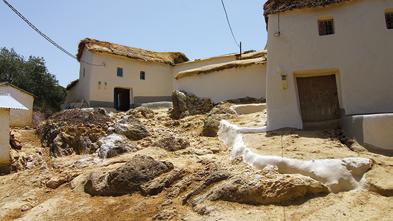
78 79 OTWO 12 / JULY 2020 OTWO 12 / JULY 2020
“…they prefer to call themselves by a term from their own native language: they are the Amazigh people (plural Imazighen), which means free men…”.

OTWO 12 / JULY 2020 81 80 OTWO 12 / JULY 2020
Author: Jenny Brown

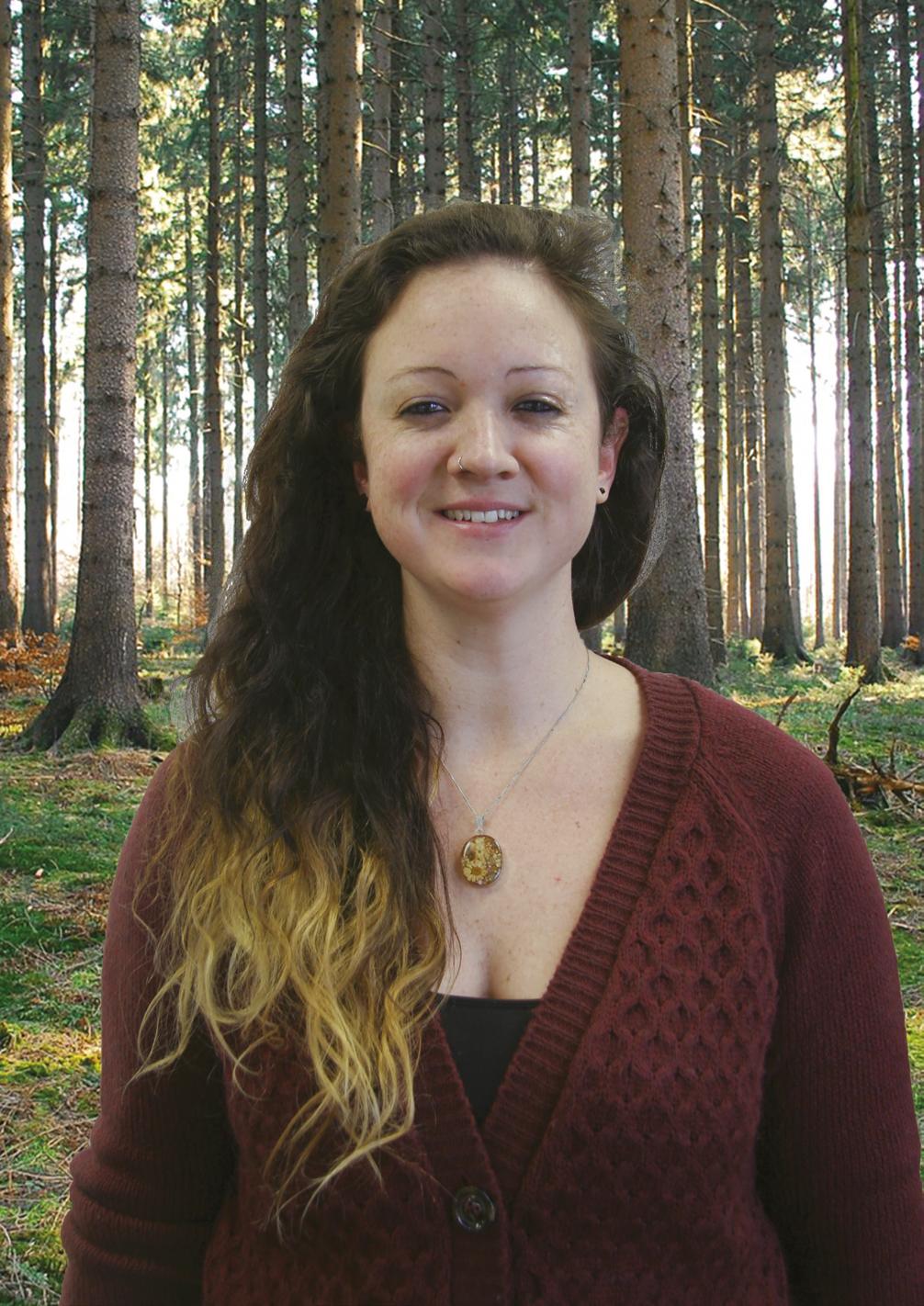
In this talk I’m delighted to be presenting the history of Permaculture, explaining the meaning of the 3 Ethics and 12 Principles within its message. The core teachings within permaculture were developed around thirty years ago in Australia by Bill Mollison and David Holmgren, but the origins of Permaculture surfaced from ancient indigenous cultures.
Originally coined ‘Permanent Agriculture’, Permaculture is often viewed as a set of gardening techniques, but has in fact developed into a whole design philosophy, and for some people a philosophy for life. Its central theme is the creation of human systems which provide for human needs, by using natural applications and drawing inspiration from the woven network within ecosystems. Its goals and priorities coincide with what many people see as the core requirements for sustainability.
Permaculture tackles how to grow food, build houses and create communities, and minimise environmental impact at the same time. Its principles are being constantly developed and refined by people throughout the world in various different climates and cultural circumstances.
By thinking carefully about the way we use our resources - food, energy, shelter and other material and non-material needs - it is possible to get much more out of life by using less. We can be more productive for less effort, reaping benefits for our environment and ourselves, for now and for generations to come.
Permaculture is not exclusive - the beauty of it is that its principles and practice can work everywhere,
in every climate and on every scale. It can be used by anyone, anywhere.
“The aim is to create systems that are ecologically-sound and economically viable, which provide for their own needs, do not exploit or pollute, and are therefore sustainable in the long term.”
Who is this talk for? Anybody and everybody (any age) interested in implementing a more thoughtful approach to their lifestyles, or learning about a new way of seeing. Those with a curiosity in learning about patterns in nature and how we can apply them in our daily lives will really gain something valuable from this talk.
About the presenter:
Jenny Brown has a background in visual design and has been a Permaculture student and practitioner since 2016. She has travelled and established connections working around many Ecovillage Networks in Andalucia and the North of Spain. She has completed her Permaculture Design Certificate (PDC), various Permaculture in Practice Internships and most recently a Permaculture Teacher Training Course. She lives for promoting the message of interconnectivity within Permaculture and resides and works on the Rock. In her spare time she advocates for sustainability, participates in earth activist and aims to raise awareness about the reality of Ecocide and the necessity of the implementation of Social Permaculture within urban environments. She has been taught under the guidance of permaculture pioneers Ras John Cresswell, Roman Eisenkhobl, Rico Zook, Jude Hobbs, Delvin Solkinson, Lucho Iglesias, Matricia Lana, and Starhawk.

82 OTWO 12 / JULY 2020
INTRODUCCIÓN A LA PERMACULTURA, una conferencia de Jenny Brown
En esta conferencia hablaremos sobre el origen de la permacultura y detallaremos qué significan sus tres principios éticos y sus 12 mensajes. Las enseñanzas centrales de la permacultura fueron desarrolladas hace unos treinta años en Australia por Bill Mollison y David Holmgren, aunque sus orígenes se remontan a culturas indígenas antiguas.
Denominada en sus inicios como agricultura permanente, la permacultura suele interpretarse como un conjunto de técnicas de jardinería, pero la realidad es que ha evolucionado hasta convertirse en una filosofía de diseño y, para algunas personas, una filosofía de vida. Su objeto principal es la creación de sistemas humanos que satisfagan las necesidades de la gente a través del uso de elementos naturales e inspirándose en la red de tejidos naturales de los ecosistemas. Sus objetivos y prioridades coinciden con lo que muchas personas consideran requisitos fundamentales de la sostenibilidad.
La permacultura se ocupa de cómo cultivar alimentos, construir casas y crear comunidades generando el mínimo impacto medioambiental. Sus principios se refinan y evolucionan de forma permanente a través de personas de todo el mundo, en diferentes zonas climáticas y bajo diversos condicionantes culturales.
Si prestamos la suficiente atención a la forma de hacer uso de nuestros recursos –alimentos, energía, vivienda y otras necesidades de índole material e inmaterial- se puede sacar mucho más provecho a la vida a la vez que desperdiciamos menos. Podemos ser más productivos gastando menos, recogiendo frutos para nuestro medioambiente y nosotros mismos, tanto para el presente como para las generaciones futuras.
La permacultura no es algo rígido –lo bonito de sus principios y la puesta en práctica de los mismos puede aplicarse en cualquier lugar, clima y a todas las escalas-. Puede ser empleada por todos y en todos los sitios imaginables.
“La meta es la de crear sistemas que resulten ecológicamente saludables y viables, que produzcan necesidades específicas, no sean explotadoras o contaminantes y, por tanto, tengan naturaleza sostenible a largo plazo”.
A quién se dirige esta conferencia? A cualquiera y a todos aquellos, de cualquier edad, interesados en implantar un enfoque más holístico a sus estilos de vida o una nueva forma de observar, con curiosidad por aprender los patrones de la naturaleza y cómo podemos aplicarlos a nuestros quehaceres diarios. Respecto a la conferenciante:
Jenny Brown acumula experiencia en el diseño visual y en el estudio y la práctica de la permacultura desde 2016. Ha viajado y establecido contactos en varias redes de ecovillas en Andalucía y el norte de España. Tiene un Certificado en Diseño de Permacultura (PDC), ha completado varias prácticas en permacultura y, recientemente, un curso como formadora en permacultura. Vive para difundir el mensaje de la interconectividad dentro de la permacultura y reside y trabaja en el Peñón. En su tiempo libre reivindica la sostenibilidad, el activismo ecologista y tiene como objetivo estimular la concienciación para que se implante la permacultura social en entornos urbanos. Ha alcanzado su formación a través del asesoramiento de pioneros de la permacultura como Ras John Cresswell, Roman Eisenkhobl, Rico Zook, Jude Hobbs, Delvin Solkinson, Lucho Iglesias, Matricia Lana y Starhawk.
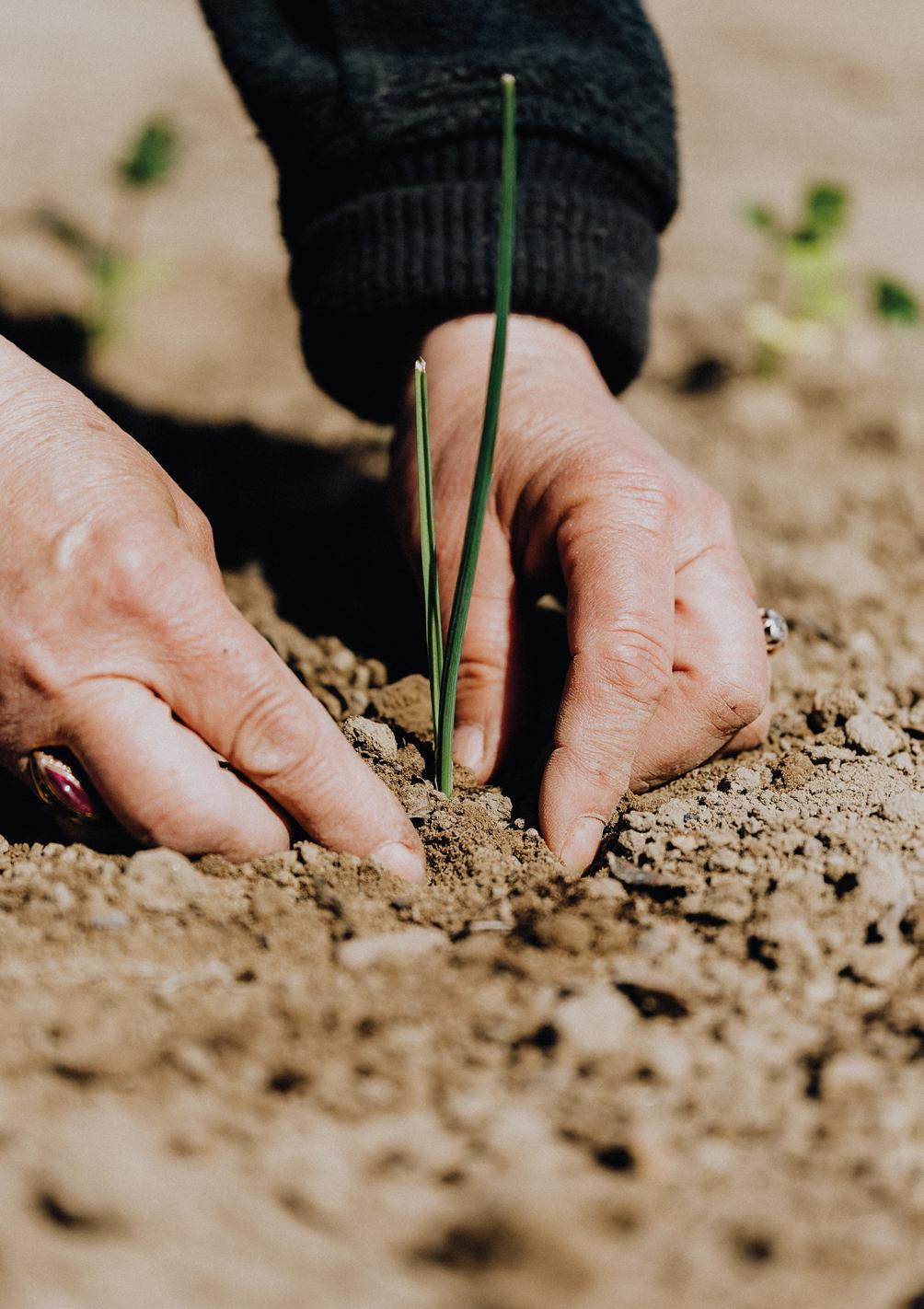
84 OTWO 12 / JULY 2020 OTWO 12 / JULY 2020 85
Ramboll
Sara Méndez Roldán. Senior Environmental Consultant at Ramboll

Ramboll is a leading multidisciplinary engineering, environmental and specialist consultancy founded in Denmark in 1945. It is owned by the Ramboll Foundation and Ramboll employees, an independent Danish enterprise foundation with philanthropic obligations. We have been established in Gibraltar for over 22 years, supporting Gibraltar’s public and private sector.
The necessity for improved infrastructure and urban development goes “hand in hand” with population and economic growth. All assets need to be designed, constructed and operated efficiently whilst delivering greater value for citizens and society, the wider economy and the environment. Sustainable infrastructure and urban development are no longer a luxury but a necessity.
Sustainable practices have been part of Ramboll’s DNA since the company’s inception, becoming an integral part of our mission and services. In Ramboll we want to support the achievement of ambitious environmental, social and economic goals sooner and with greater clarity, particularly important in these unprecedented times.
We look forward to participating at the Green Week Gibraltar, where we will draw from our international and local experience to discuss how we can engineer and plan towards truly sustainable goals, such as decarbonisation initiatives (e.g. aiming for Zero Carbon Buildings); sustainable mobility to increase the uptake of cycling and walking; liveable urban environments that integrate blue and green infrastructure; and environment protection that preserves, restores and/or increases our Natural Capital.
Ramboll es una consultoría líder en ingeniería y medio ambiente fundada en Dinamarca en el año 1945. Propiedad de la fundación Ramboll y sus empleados, Ramboll es una empresa independiente con obligaciones altruistas. Llevamos más de 15 años establecidos en Gibraltar, donde ofrecemos apoyo tanto al sector público como al privado.
La necesidad de una mejor infraestructura y desarrollo urbano está cuidadosamente atada al crecimiento económico y poblacional. Cada elemento requiere ser diseñado, construido y operado eficientemente de forma que proporcione un mayor valor a la sociedad y sus ciudadanos, al sector económico y al medio ambiente. De este modo, la infraestructura y desarrollo urbano sostenibles dejan de ser un lujo para convertirse en una necesidad real. El concepto de sostenibilidad ha sido parte del ADN de Ramboll desde el comienzo de su actividad, convirtiéndose en una parte integral de nuestra misión y servicios. En Ramboll queremos apoyar el logro de objetivos medioambientales, sociales y económicos de una forma más rápida y clara, particularmente importante en los tiempos sin precedentes que actualmente vivimos.
Estamos deseando participar en la Green Week Gibraltar, donde, basándonos en nuestra experiencia internacional y local, trataremos la forma en la que podemos diseñar y planificar verdaderos objetivos sostenibles, incluyendo estrategias de descarbonización (ejem. apostando por edificios “carbono cero”); movilidad sostenible que promueva el aumento de desplazamientos en bicicleta o caminando; espacios urbanos “habitables” que integren infraestructura azul y verde; y protección medioambiental que mantenga, restaure o incremente nuestro “Capital Natural”.

OTWO 12 / JULY 2020 87 OTWO 12 / JULY 2020
86

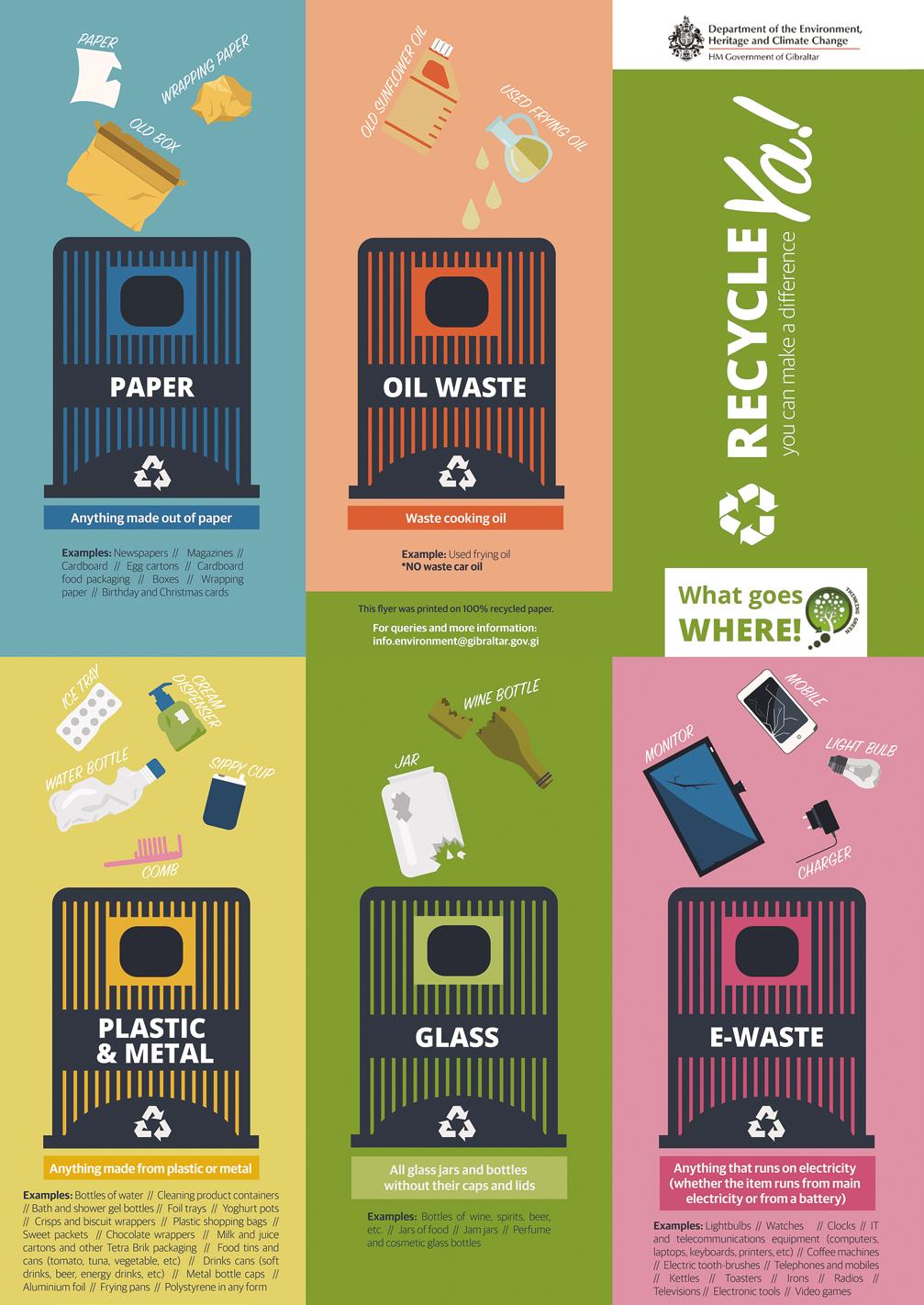
Guía rápida de: Ver el mundo desde el sofá

After lockdown, being able to get outdoors again is something that we are all immensely grateful for. But as the world recovers, many of us will have to wait to travel to far flung places... but that doesn’t mean that we can’t carry on exploring! From virtual tours to theatre productions to books, you can satisfy your wanderlust from your very own home and perhaps get some ideas for your next adventure!
Museums
MoMA, New York
New York’s Museum of Modern Art houses contemporary masterpieces by artists such as Dali, Van Gogh and Andy Warhol
Uffizi Gallery, Florence
Admire the extensive collection of Italian Renaissance art in one of the world’s most important museums National Museum of Anthropology, Mexico City
Explore Mexico’s rich and fascinating pre-Hispanic past and its vast collection of Teotihuacán, Aztec and Mayan artifacts
Iconic Sites
Angkor, Cambodia
Take a virtual tour of the breath-taking ancient capital city of the Khmer Empire and marvel at the world’s largest temple – Angkor Wat Petra, Jordan
Discover the spectacular sandstone city of Petra, built in the 3rd Century BC.


Después del cierre, poder salir es algo por lo que todos estamos inmensamente agradecidos. Pero a medida que el mundo se recupere, muchos de nosotros tendremos que esperar para viajar a lugares remotos ... ¡pero eso no significa que no podamos seguir explorando! ¡Desde visitas virtuales hasta producciones teatrales y libros, puede satisfacer su pasión por los viajes desde su propia casa y tal vez obtener algunas ideas para su próxima aventura!
Museos
MoMA, Nueva York
El Museo de Arte Moderno de Nueva York alberga obras maestras contemporáneas de artistas como Dali, Van Gogh y Andy Warhol. Galería de los Uffizi, Florencia
Admire la extensa colección de arte renacentista italiano en uno de los museos más importantes del mundo. Museo Nacional de Antropología, Ciudad de México Explore el rico y fascinante pasado prehispánico de México y su vasta colección de artefactos teotihuacanos, aztecas y mayas
Sitios icónicos
Angkor, Camboya
Realice un recorrido virtual por la impresionante ciudad capital del Imperio Khmer y admire el templo más grande del mundo: Angkor Wat
Petra, Jordan
Descubre la ciuidad mas espectacular de arenisca de Petra, construida en el siglo III a. C.
Venice, Italy
Explore the magnificent architecture and history of Venice via its canals and winding streets
Wonders of Nature
Hawai’i Volcanoes National Park, USA
Fly over an active volcano or explore the Nahuku lava tube of this beautiful natural park all from your sofa
Uluru-Kata Tjuta National Park, Australia
Learn more about the cultural and spiritual significance of Australia’s iconic geological formations with stories told by Anangu traditional owners.
Getting Wild
Monterey Bay Aquarium, USA
Watch live feeds of sea otters, sharks, penguins and jelly fish plus live cams of the surrounding coast African Sunrise and Sunset Safari
Go on a live sunrise or sunset safari through the Djuma Private Game Reserve in South Africa’s Sabi
Sand
Culture Fix Digital Theatre
Enjoy world class theatre, opera, and dance productions at home
Subscribe for £9.99 per month or rent
Live Nation Live from Home
Watch and listen to your favourite artists performing live concerts direct from their homes
Get lost in a book
The Alchemist, Paolo Coehlo
An enchanting and deeply inspirational story of an Andalucían shepherd boy named Santiago who yearns to travel in search of treasure.
Seven Years in Tibet, by Heinrich Harrer
The incredible autobiographical account of Heinrich Harrer’s escape from an English internment camp in India to Tibet, where he spent seven years gaining a profound understanding of Tibet, its people and culture.
Venecia, Italia
Explore la magnífica arquitectura e historia de Venecia a través de sus canales y calles sinuosas
Maravillas de la naturaleza
Parque Nacional de los Volcanes de Hawai, EE.UU.
Vuela sobre un volcán activo o explora el tubo de lava Nahuku de este hermoso parque natural todo desde tu sofá
Parque Nacional Uluru-Kata Tjuta, Australia
Obtenga más información sobre el significado cultural y espiritual de las formaciones geológicas icónicas de Australia con historias contadas por los propietarios tradicionales de Anangu.
Ponerse salvaje
Acuario Monterey Bay, Estados Unidos Mire en vivo de nutrias marinas, tiburones, pingüinos y medusas, además de cámaras en vivo de la costa circundante
Safari africano al amanecer y al puesta del sol Realiza un safari en vivo al amanecer o al puesta del sol a través de la reserva de caza privada Djuma en Sabi Sand, Sudáfrica.
Dosis de cultura
Teatro digital
Disfruta de producciones de teatro, ópera y danza de clase mundial en casa
Suscríbase por £ 9.99 por mes o alquile Live Nation en directo desde su casa
Mira y escucha a tus artistas favoritos interpretando conciertos en vivo directamente desde sus hogares
Piérdete en un libro
El alquimista, Paolo Coehlo
Una historia encantadora y profundamente inspiradora de un pastor andaluz llamado Santiago que anhela viajar en busca de tesoros.
Siete años en el Tíbet, por Heinrich Harrer
El increíble relato autobiográfico del escape de Heinrich Harrer de un campo de internamiento inglés en la India al Tíbet, donde pasó siete años adquiriendo una profunda comprensión del Tíbet, su gente y su cultura.
91 90 OTWO 12 / JULY 2020 OTWO 12 / JULY 2020
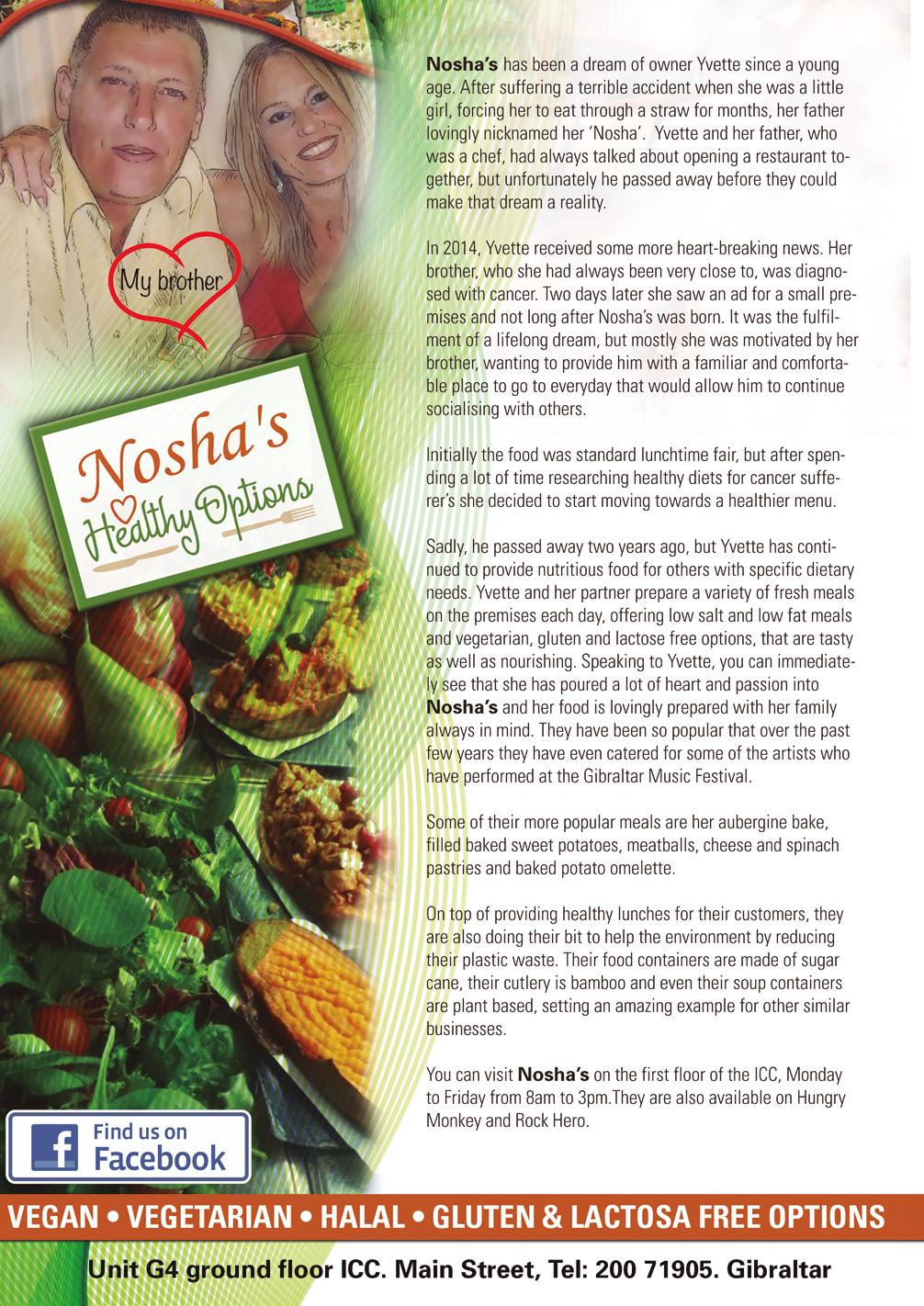
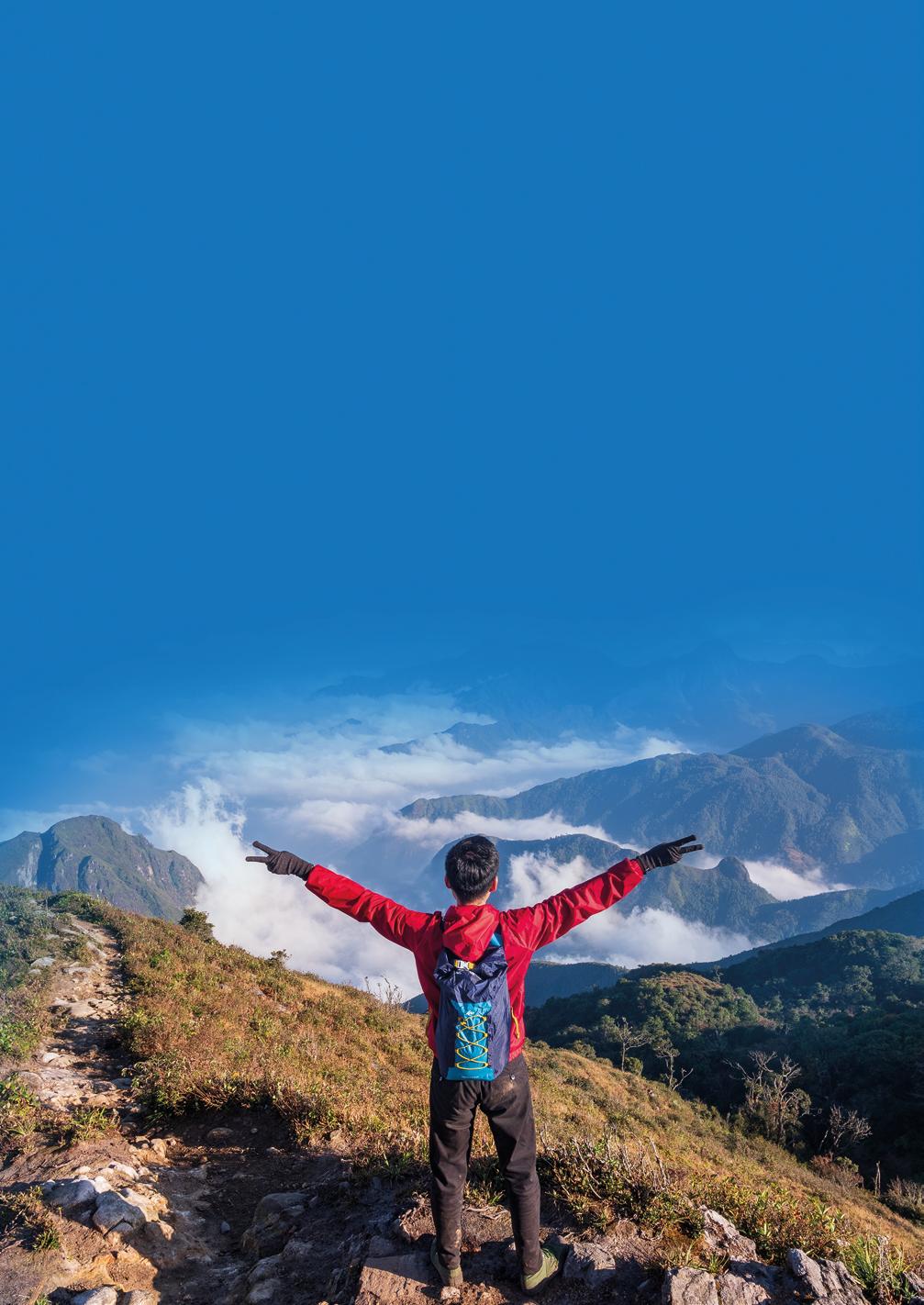
Organized by: OTWO Magazine
Tel. +00350 22500799 / info@otwomag.com
Transport available for groups.Check with us for your requirements. OTWO is a facilitator on these packages. All activities are contracted directly between the respective centre operator and the client. Prices are for the month of July only, please contact us for other dates.
Transporte disponible para grupos. Consultenos si estás interesado. OTWO es un mediador de estos paquetes. Todas las actividades se contratan directamente entre el operador y el cliente. Precios válidos solo para el mes de julio, consulte para otras fechas.
93
Catálogo de Experiencias. Verano 20 SUMMER CATALOG 20
Boutique Hotel Rancho Los Lobos
The gravel road to the house is rough and bumpy. In Jimena de la Frontera, turn left directly into the Parque Natural Los Alcornocales, into the wild forests of cork oaks and eucalyptus trees over a narrow iron bridge, always following this gravel road. On your arrival at Rancho Los Lobos, a gateway opens up to a little paradise: it’s another world, a special place, sheltered by gentle hills, surrounded by pastures with goats, cattle and horses. From time to time, a locomotive slowly passes by and gives the whole scenery a charming touch of nostalgia. Our Rancho, with its garden, cosy corners and arbors dotted around the house, the paddocks and romantic stables, is a true refuge in the middle of the idyllic Natural Park Los Alcornocales. You can feel the wonderful tranquility between the palm trees, the horses and the refreshing cool pool. The house has been successfully run by an Austrian-Swiss couple for over 40 years and in 2018 we transformed it into a little gem with a lot of craftsmanship and attention to detail. The more than 100-year-old foundations have been completely renovated.
We, Karl (a passionate chef from Bavaria) and Barbara (an experienced horsewoman and physiotherapist), created at Rancho Los Lobos our vision of a small hotel with horses, delicious food and enchanting rooms . Our shared dream led us to this hundred-year-old gem in Andalusia.
Now the Rancho is beautifully renovated inside and out with Arabic and Andalusian influences, lots of wood, stone floors and open bathrooms in warm colors . With lovingly embroidered pillows and fresh white curtains blowing in the wind, our rooms are adorable little paradises. Your stay at Rancho is designed to offer you an unforgettable stay.
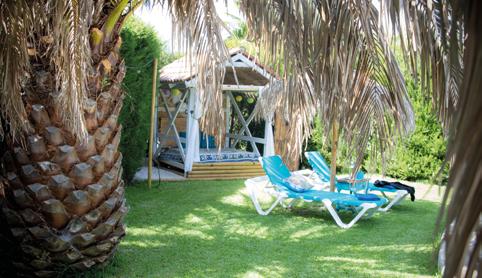

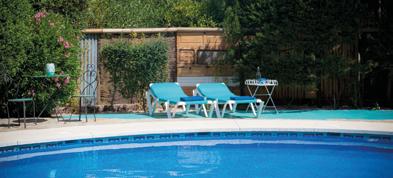

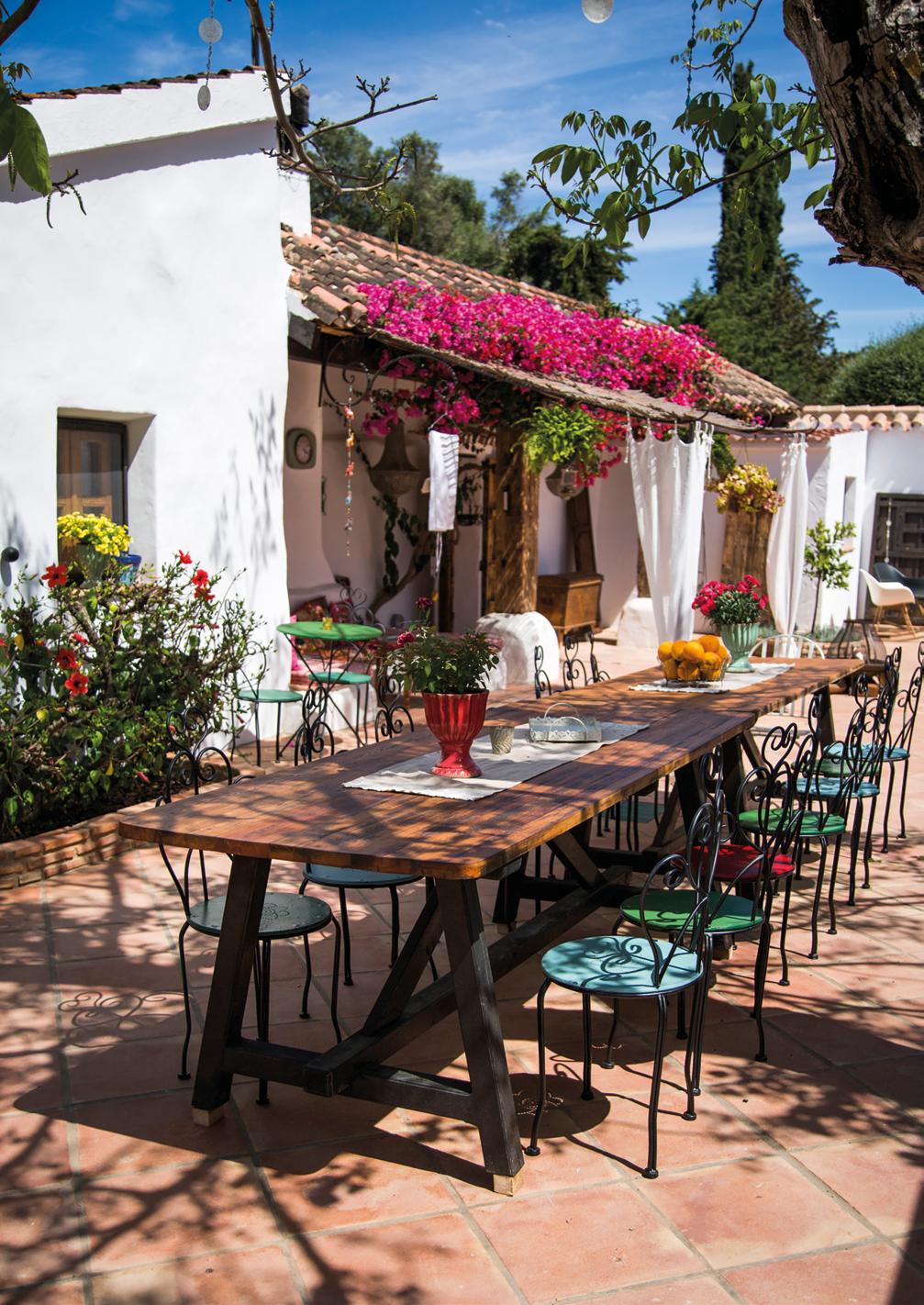
94 OTWO 12 / JULY 2020 OTWO 12 / JULY 2020 95
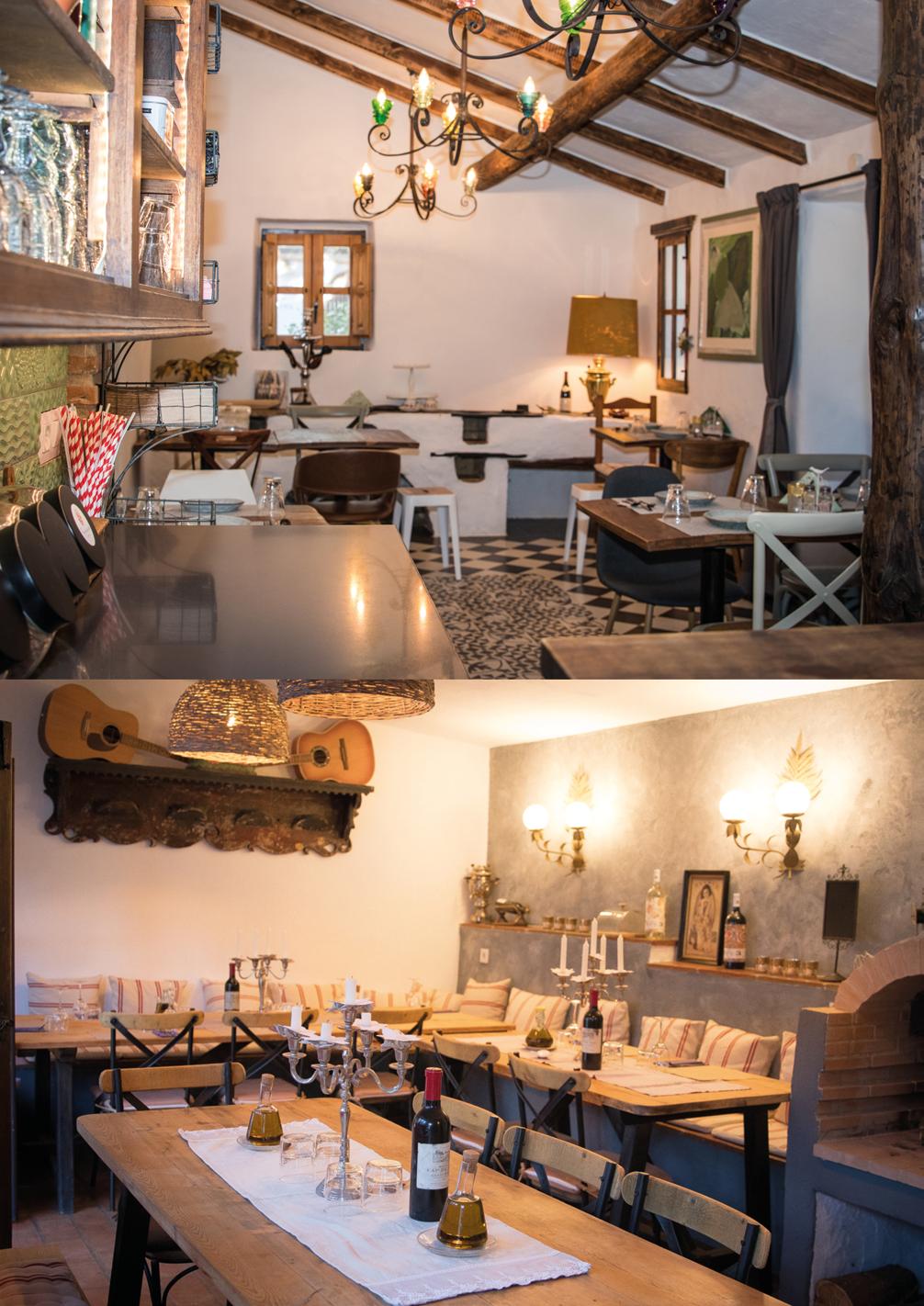
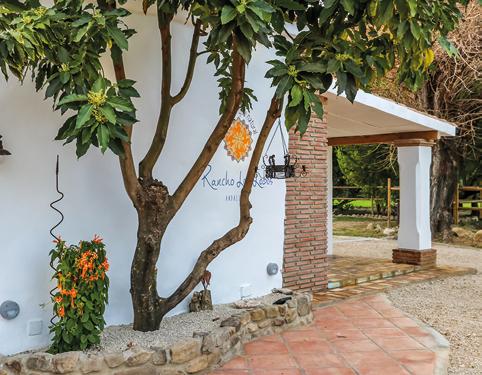


5-Day Detox Summer
13 – 17 September 2020
At our Detox Summer Retreat you can concentrate on yourself and don’t have to worry about anything else. Enjoy a break in Andalusia and slow down with lots of yoga and delicious vegetarian food.
With Christina you can enjoy 2 yoga sessions a day with meditation and one unit on the day of arrival and departure. Karl cooks for you daily with a healthy siesta snack and tasty veggie dinner (dinner on the day of arrival, breakfast on the day of departure). Between meals there are detoxifying herbal teas as well as a smoothie per day. Once a day there is a 30-minute reading with an inspiring text on the detoxification of body and mind.
Check-in from 2 p.m. The price includes 4 nights, 5 days with yoga as described above, drinks (water, tea, coffee).
Minimum number of participants 3 people.
Single room (limited available) per person 1,178 €
Double room B 1 per person 714 €
Double room B 2 per person 746 €
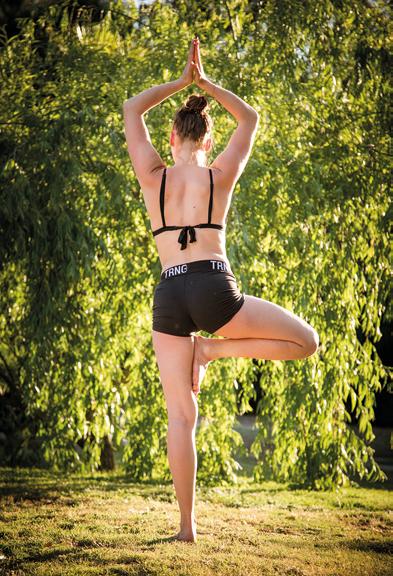
OTWO 12 / JULY 2020 97
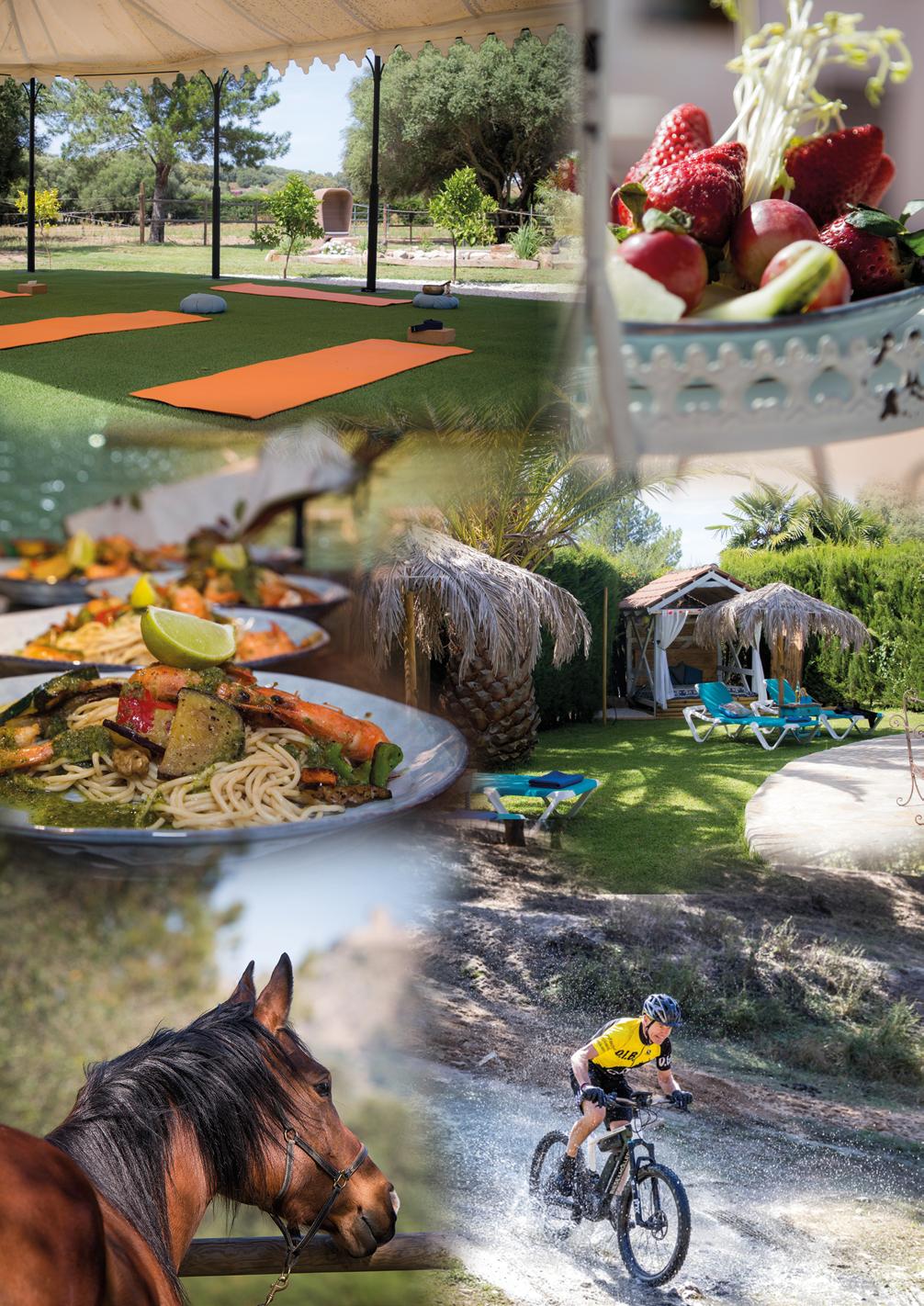
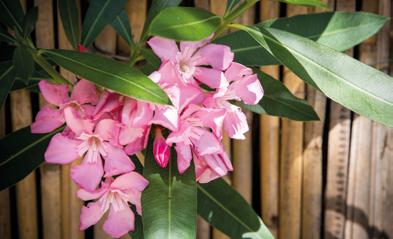
El camino de grava que da acceso a la casa es irregular y está bacheado. En Jimena de la frontera, gire a la derecha hacia el Parque Natural de los Alcornocales, entrando en los bosques salvajes de alcornoques y eucaliptos pasando por un angosto puente de hierro, conduciendo siempre sobre el camino de grava. Al llegar a Rancho Los Lobos, una puerta da acceso a un pequeño paraíso: se trata de un mundo diferente, un lugar especial entre suaves colinas, pastos de cabras, ganado y caballos. Esporádicamente, una comitiva pasa despacio y confiere al lugar un aliento de nostalgia. Nuestro rancho, con su jardín, los coquetos rincones y enramadas que se distribuyen aleatoriamente alrededor de la casa, los prados y sus románticos establos, constituye un refugio genuino situado en el corazón del idílico Parque Natural de los Alcornocales. Se respira una maravillosa tranquilidad entre las palmeras, los caballos y la refrescante piscina. Una pareja suizo-austríaca ha gestionado de manera eficaz la casa durante más de 40 años y en 2018 nosotros la convertimos en una pequeña joya repleta de artesanía y atención a los detalles. Reformamos asimismo unos cimientos que tienen más de cien años de antigüedad.
Somos Karl (un apasionado chef bávaro) y Bárbara (una amazona experimentada y fisioterapeuta) y hemos desarrollado en Rancho Los Lobos la visión que teníamos de un hotel pequeño con caballos, apetitosa comida y habitaciones con encanto. Nuestro sueño común nos condujo a esta joya andaluza centenaria. En la actualidad el rancho está preciosamente reformado con influencias árabes y andaluzas tanto en su interior como en la parte externa, con abundancia de madera, suelos de piedra y cuartos de baño abiertos en colores cálidos. El efecto del viento sobre las frescas cortinas blancas así como las adorables almohadas bordadas hacen que nuestras habitaciones sean como pequeños paraísos. Su estancia en El Rancho está predeterminada a ser una experiencia inolvidable.
Verano detox, 5 días
Del 13 al 17 de septiembre, 2020
En nuestro retiro detox de verano podéis centraros en vosotros mismos y olvidaros de todo lo demás. Disfruten de una escapada en Andalucía y relájense con el disfrute del yoga y la comida vegetariana. Con Christina disfrutarán de dos sesiones de yoga y meditación diarias y una en el día de llegada y el de salida. Karl se ocupa diariamente de la cocina con un aperitivo de siesta saludable y una cena vegetariana (cena el día de llegada, desayuno el de salida). Entre las comidas servimos tés de hierba detox así como un smoothie al día. Cada día celebramos una inspiradora lectura de 30 minutos acerca de la desintoxicación de cuerpo y mente.
El check-in es a partir de las 14:00 horas y el precio incluye 4 noches, 5 días con las sesiones de yoga anteriormente descritas y bebidas (agua, té y café). Mínimo tres personas.
Habitación individual (disponibilidad limitada), 1178 € por huésped.
Habitación doble B, 1 huésped, 714 €
Habitación doble B, 2 huéspedes, 746 €.

OTWO 12 / JULY 2020 99
Located in the extreme north west of the province, the landscape ranges from countryside to marshes, the former being employed in agriculture, the latter, near the mouth of the River Guadalquivir, consisting of unspoiled scenery of extreme beauty. The highlights of the Doñana Natural Park.
Trebujena marshes were used by Steven Spielberg in many scenes from his film Empire Of The Sun (1987).
The village, located atop a gentle hill which affords fine views of the whole municipal AREA, is of Arabic origin; worthy of note are the remains of Perez de Guzman Castle (s. XV) and La Purisima Concepcion Church (s. XVI).
We invite you to stay in a delightful country estate of 7.000m2, surrounded by vineyards, close to the town of Trebujena and just 5km from Doñana National Park.
The estate is an oasis of tranquility, treating our senses to almond, carob, fig, plum, pomegranate, apricot, loquat and plum trees, grape vines, oleander, rosemary, lavender, a vegetable garden and the best sunset in Doñana.
Casa Martinete is a charming house of 136 m2 in which you’ll be able to enjoy, in total privacy and exclusivity, the best of Cádiz and Andalucia. It offers a comfortable living-dining room with chimney, three double rooms, two bathrooms, a fully equipped kitchen, laundry room, terrace and solarium, large porch and garden.
We offer ornithological tours, visits to saltpans, wineries and vineyards – Gastronomic experiences. Send us an email at info@otwomag.com with dates you would like to come and visit, how many people will be joining you and details of any tours you would be interested in and we will provide you with the full cost of your stay.
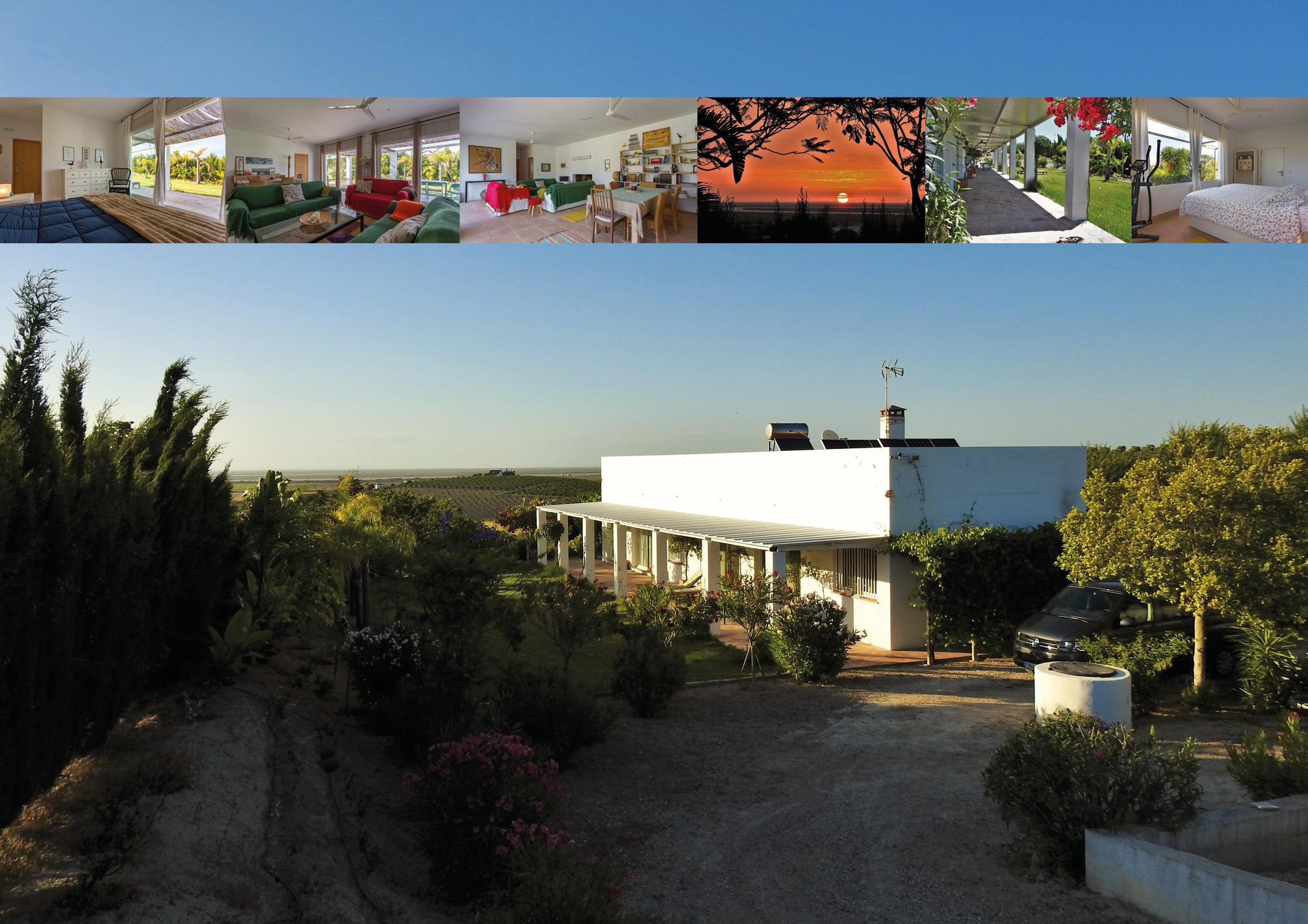
VISIT DOÑANA IN THE BEST ENVIRONMENT CASA MARTINETE
OTWO 12 / JULY 2020 101
100 OTWO 12 / JULY 2020
Visita Doñana
en el mejor entorno de Trebujena CASA MARTINETE

Situado en el extremo noroeste de la provincia, el paisaje se extiende desde el campo hasta las marismas. El primer paisaje enumerado, se emplea en el desarrollo agrícola. El segundo, cerca de la desembocadura del río Guadalquivir, recorre paisajes vírgenes de extrema belleza. Lo más destacado del Parque Natural de Doñana.
Las marismas de Trebujena, fueron utilizados por Steven Spielberg en muchas escenas de su película El Imperio del Sol (1987).
El pueblo de origen árabe, está situado en lo alto de una suave colina, y ofrece unas magníficas vistas del Parque Natural dentro del del municipio gaditano; son dignos de mención los restos del Castillo de Pérez de Guzmán (s, XV) y la Iglesia de la Purisima Concepción (s.XVI).
Le invitamos a que te alojes en una encantadora finca rural de 7.000m2, rodeada de viñedos, cerca de la localidad de Trebujena y a tan solo 5km del Parque Nacional de Doñana.
La finca es un oasis de tranquilidad, que invita a nuestros sentidos a disfrutar de los almendros, algarrobos, higueras, ciruelos, granados, albaricoques, nísperos, vides, adelfas, romero, lavanda, un huerto y la mejor puesta de sol en Doñana.
Casa Martinete, es una encantadora casa de 136 m2 en la que podrá disfrutar, con total privacidad y exclusividad, de lo mejor de Cádiz y Andalucía. Cuenta con un cómodo salón-comedor con chimenea, tres habitaciones dobles, dos baños, una cocina totalmente equipada, lavadero, terraza y solarium, amplio porche y jardín. Se orece al visitante tours ornitológicos, visitas a las salinas, bodegas y viñedos -experiencias gastronómicas. Envíenos un correo electrónico a info@otwomag.com con las fechas en las que le gustaría visitar Casa Martinete, el número de personas que le acompañarán y los detalles de las excursiones que le pueden interesar, y le indicaremos el coste total de su estancia.
OTWO 12 / JULY 2020 103 102 OTWO 12 / JULY 2020
